VOLUME 117/8 | SEPTEMBER 2025 AIMEX 2025
MOUNT ISA’S FUTURE
FLY-IN, FLY-OUT



VOLUME 117/8 | SEPTEMBER 2025 AIMEX 2025
MOUNT ISA’S FUTURE
FLY-IN, FLY-OUT






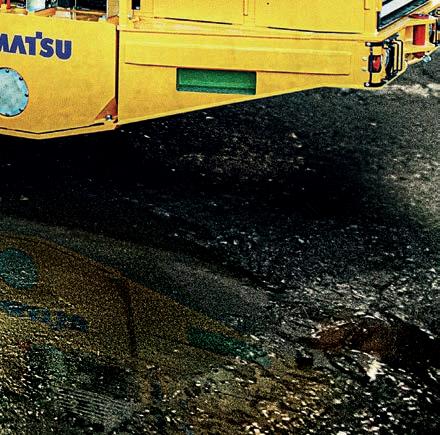


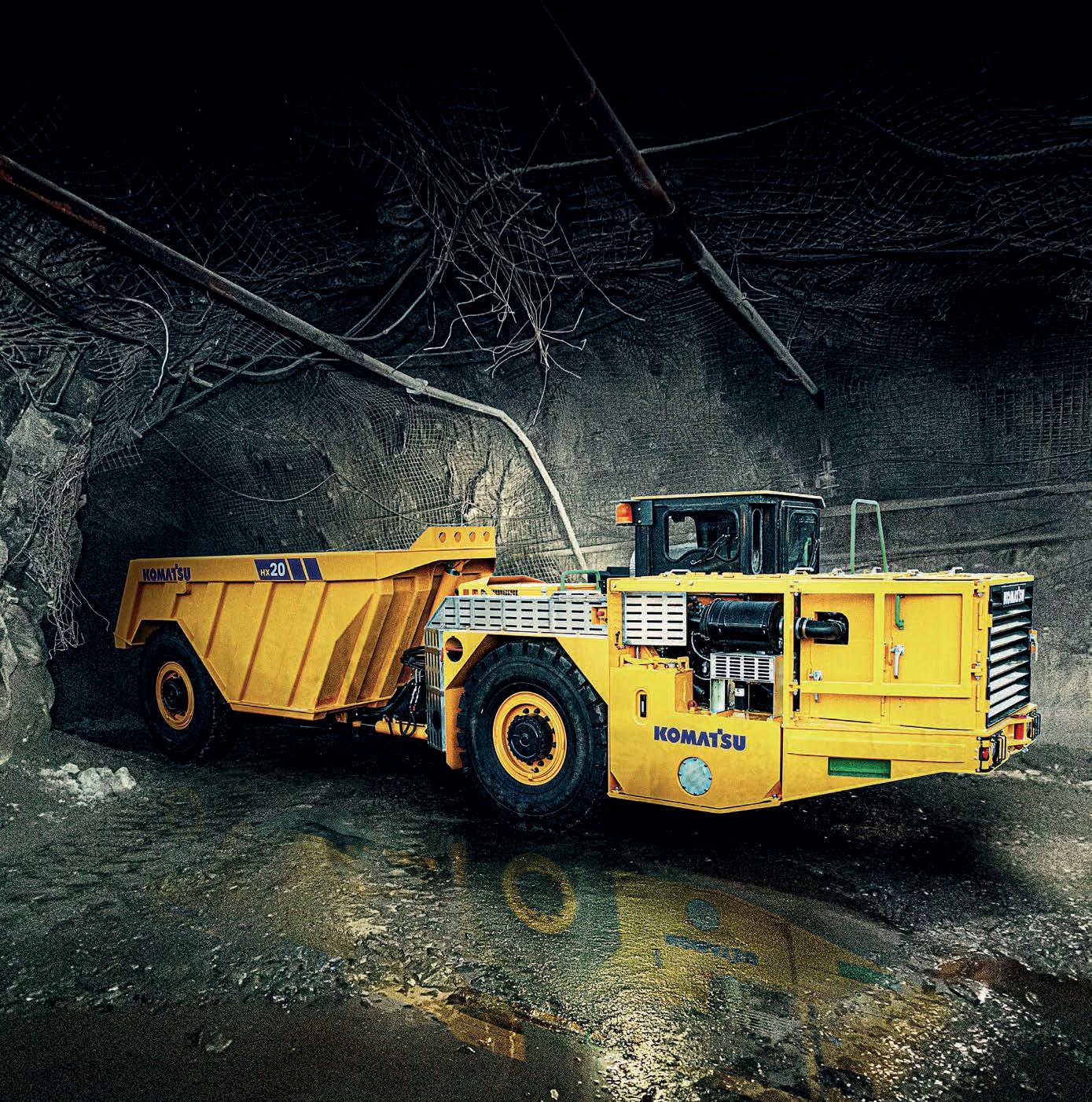





TOM PARKER
tom.parker@primecreative.com.au
THIS
The underground mining industry is a proven frontrunner when it comes to adopting safer, more efficient and sustainable ways of operating.
Its unique challenges – confined spaces, complex geology and evolving safety standards – demand constant innovation, making it a literal and figurative testing ground for technologies that often set benchmarks for the broader mining sector.
In this edition of Australian Mining, we dive deep into the technologies, strategies and partnerships shaping the future of underground operations.
The cover story sees Komatsu discuss its recent acquisition of GHH Group GmbH, which has seen the Tier 1 OEM add a suite of underground mining, tunnelling and civil engineering equipment to its product portfolio.
The underground theme continues with BME, which is redefining blasting standards through its integrated approach to products, technology and technical expertise.
BME’s commitment to sustainability and safety was discussed in a recent webinar, where the company highlighted new strategies to minimise vibration, air blast, and flyrock in confined spaces.
Flexco is raising the bar in underground mines with its Continuous Blade Secondary
(CBS) cleaner. Originally designed for surface applications, this innovation has been adapted for the stringent conditions of underground coal, offering superior cleaning in water-heavy, highcompliance environments.
Elsewhere, MASPRO’s redesigned bolting cradle and pipe assembly are helping underground operators boost efficiency and reduce downtime. With a design driven by client feedback, these solutions exemplify the company’s focus on practical innovation.
We also sat down with Glencore to discuss its goals for its Mount Isa operations and showcased Aureka – an exploration company setting a new standard for social stewardship in the Victorian gold industry.
Features on QME 2026, IMARC and the upcoming Prospect Awards round out our September edition.
Happy reading.
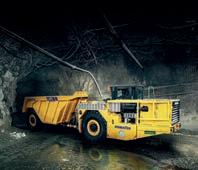
CHAIRMAN JOHN MURPHY
CHIEF EXECUTIVE OFFICER
CHRISTINE CLANCY
MANAGING EDITOR
TOM PARKER
Email: tom.parker@primecreative.com.au
JOURNALISTS
OLIVIA THOMSON
Email: olivia.thomson@primecreative.com.au
DYLAN BROWN
Email: dylan.brown@primecreative.com.au
PAUL HOWELL
Email: paul.howell@primecreative.com.au

Tom Parker Managing Editor
CLIENT SUCCESS MANAGER
JANINE CLEMENTS
Tel: (02) 9439 7227
Email: janine.clements@primecreative.com.au
SALES MANAGER
JONATHAN DUCKETT
Mob: 0498 091 027
Email: jonathan.duckett@primecreative.com.au
BUSINESS DEVELOPMENT MANAGERS
JAMES PHIPPS
Mob: 0466 005 715
Email: james.phipps@primecreative.com.au
ROB O’BRYAN Mob: 0411 067 795
Email: robert.obryan@primecreative.com.au
ART DIRECTOR MICHELLE WESTON michelle.weston@primecreative.com.au
SUBSCRIPTION RATES Australia (surface mail) $120.00 (incl GST) Overseas A$149.00 For subscriptions enquiries please contact (03) 9690 8766 subscriptions@primecreative.com.au
PRIME CREATIVE MEDIA 379 Docklands Drive, Docklands,
Front cover Komatsu has expanded its underground capabilities through the recent acquisition of GHH Group GmbH. Offering a range of machinery including diesel and batteryelectric loaders and trucks, Komatsu delivers solutions that enhance safety, efficiency, and productivity. Standouts include the WX range of LHDs (load haul dump), the HX range of trucks, and the innovative WX04B battery-electric loader with ground-level battery swap technology. With CE-certified, automation-ready equipment, advanced operator comfort, and OEM-agnostic charging solutions, Komatsu is meeting the evolving needs of global hard rock and industrial mineral miners – helping customers reduce costs, boost performance, and operate sustainably in the most challenging underground environments.
Cover image: Komatsu

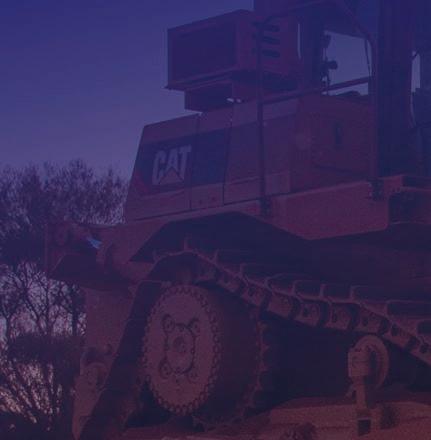

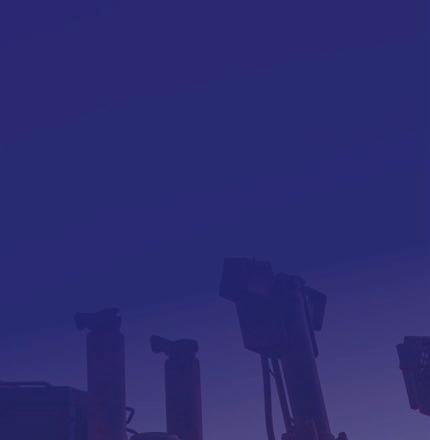





With Vocus Satellite – Starlink, private mining networks can now be extended via Starlink without travelling over the internet. Remote mining sites can become part of a network with identical security protection as metro areas to support automation and advanced monitoring technologies. Visit vocus.com.au/starlink






10 INDUSTRY INSIGHT
Glencore digs in Glencore sees a long-term future for itself in Queensland – a state where nearly half of its employees are based.
17 INDUSTRY EVENTS
The mining show you can’t afford to miss AIMEX 2025 is shaping up as a show that will redefine mining events in Australia.
20 COVER STORY
A hard rock expansion
Komatsu’s recent acquisition has bolstered the original equipment manufacturer’s underground hard rock mining portfolio.
22 UNDERGROUND MINING
Smart blasting underground BME is reshaping underground mining with smart, sustainable blasting solutions that optimise costs and boost safety.
35 UNDERGROUND MINING
Premium performance at the face Discover how MASPRO’s redesigned cradle is doubling component life underground.
38 INDUSTRY EVENTS
A hub of mining innovation
Taking place in Perth, the WA Mining Conference will showcase the future of Australian resources solutions.

42 COMMODITY SPOTLIGHT
Unlocking rare-earths opportunities Australian Mining spotlights ASX-listed companies working to break China’s global rare earths dominance.
56 INDUSTRY INSIGHT
Unlocking Victoria’s untapped gold Aureka is setting a new standard in Victorian gold exploration by building strong community ties.
62 DECARBONISATION
Meet Viva Energy’s new hydrogen facility As mining companies work to decarbonise operations, hydrogen is being explored as a future energy source.
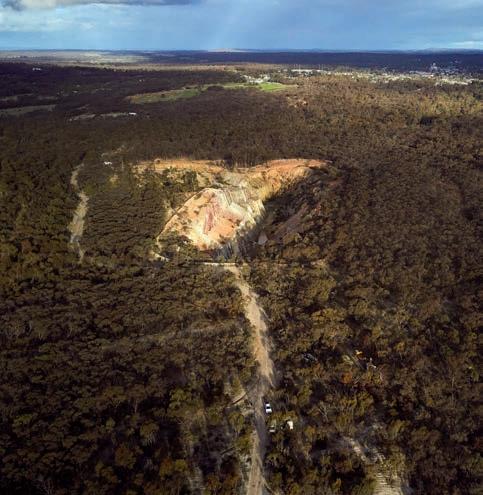


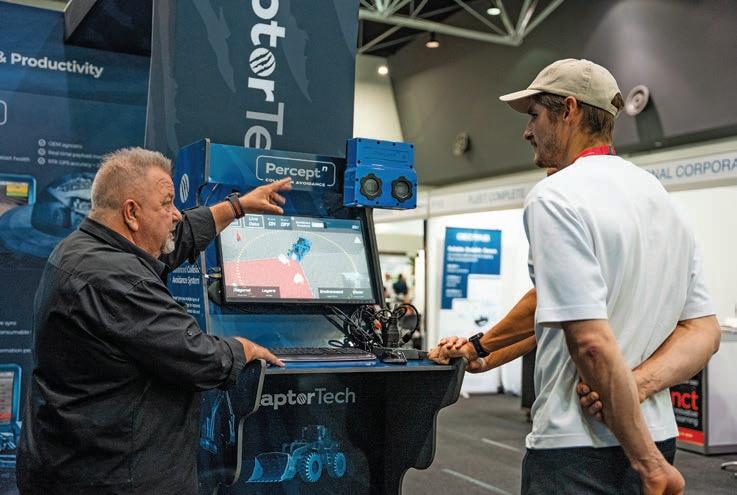





KEEP UP WITH THE LATEST EXECUTIVE MOVEMENTS ACROSS THE MINING SECTOR, FEATURING RIO TINTO, BOSS ENERGY AND BOOM LOGISTICS.
Rio Tinto iron ore chief executive officer (CEO)
Simon Trott has been chosen to succeed Jakob Stausholm as the company’s CEO.
Trott first joined Rio Tinto in 2012, serving as managing director of the company’s salt, uranium, borates and diamonds for five years.
Trott was then promoted to chief commercial officer (CCO) in 2018, where he established the company’s commercial operations and helped unlock efficiency and strengthen customer relationships.
Trott has been Rio Tinto’s iron ore CEO since 2021. In this role, he has bolstered the company’s iron ore business by improving operational performance, facilitating new mine developments, and refreshing partnerships with key stakeholders.
As the major’s CEO, Trott will utilise his 25-plus years of experience across various commodities and geographies to maintain partnerships with key stakeholders and a values-based performance culture.
“It is a privilege to have the opportunity to lead Rio Tinto, and I am excited about our future,” Trott said.
“The progress we have made over recent years gives us a foundation to build on with discipline and focus to deliver improved performance. With our outstanding assets and people around
the world, we are well positioned to grow value for shareholders and the communities who host us.”
Stausholm will step down from his role and the company’s board of directors as Trott assumes his new position.
“It has been an absolute privilege to lead Rio Tinto for nearly five years, during an important chapter in its history,” Stausholm said.
“Working together, our brilliant people across the group have built genuine momentum, setting out a pathway to a decade of profitable growth.
“As the chief executive (officer) of our largest business during this time, Simon has been an integral part of the journey. I am certain that under his leadership the group will continue to thrive and deliver value for its stakeholders.”
Boss Energy has also chosen a new managing director and CEO to succeed Duncan Craib.
Boss Energy COO Matt Dusci will step into the role on October 1, while Craib will stay at Boss Energy as a nonexecutive director from January 1 2026.
Dusci joined Boss Energy in September 2024, with more than 25 years’ experience in areas such as exploration, technical studies, operations, public markets, joint venture management, corporate governance, strategy, and executive leadership.
Since joining Boss Energy, Dusci has overseen the successful ramp-up of
operations at the restarted Honeymoon uranium mine.
Boss Energy chair Wyatt Buck thanked Craib for his eight-and-a-half years of service in the key leadership role.
“Under Duncan’s leadership, Boss has generated considerable growth for its shareholders and has transitioned from an exploration and development company to an ASX-200-listed company,” Buck said.
“(He) has led Boss from a microcap developer to being one of the few uranium producers in Australia. We look forward to continuing to work with him in his new capacity as a nonexecutive director.”
Buck also welcomed Dusci as Craib’s anointed successor.
“Matt has done an excellent job for the past year and we believe his significant operational, technical and industry experience will stand us in good stead,” Buck said.
At the time of writing, Boom Logistics is on the hunt for a new managing director and CEO after Ben Pieyre tendered his resignation on July 17, citing the opportunity to “pursue opportunities outside of the crane industry”.
Pieyre joined Boom Logistics in 2019 as general manager of Western Australia, South Australia.
He was then promoted to COO in 2021, and transitioned into the CEO position in February 2023.

Prior to his tenure at Boom Logistics, Pieyre served as company president of Sterling Crane in Canada and held multiple roles with Freo Group. He is also currently board president of the Crane Industry Council of Australia.
“On behalf of the board, I would like to thank Ben for his service to Boom over the past six years, including his two years as chief executive officer,” Boom chair Kieran Pryke said.
“Ben has contributed greatly to the performance and growth of Boom and we wish him every success in the future and recognise his commitment to a smooth leadership transition.”
Pieyre will remain with Boom Logistics as CEO until December 31, with the company searching for a replacement. Boom Logistics is expected to announce a permanent appointment later this year.
“I would like to thank the entire Boom team and the board for supporting me over the past six years, particularly in the role of CEO for the last two years,” Pieyre said.
“It has been a great step in my career and a privilege to work with incredible people at Boom Logistics.
“Moving away from our team and the industry was a big decision, but I believe the new path I have chosen is the right one for my family and I.” AM



Innovativedesignsfocusingonpower,efficiency,andoperatorcomfort. Eco-friendlyoperationswithsmartconnectivityforoptimalfleetmanagement.





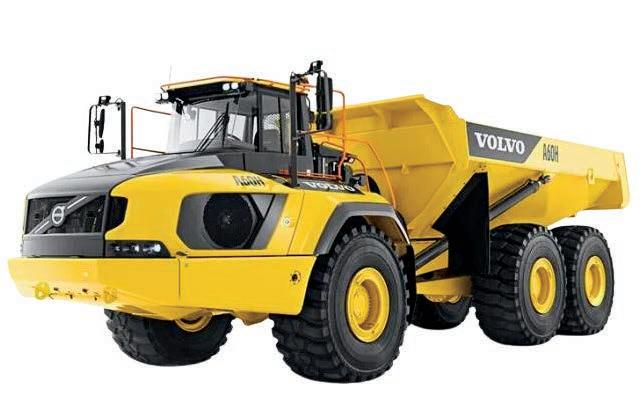



















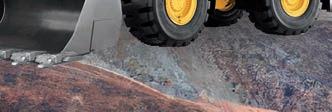









































































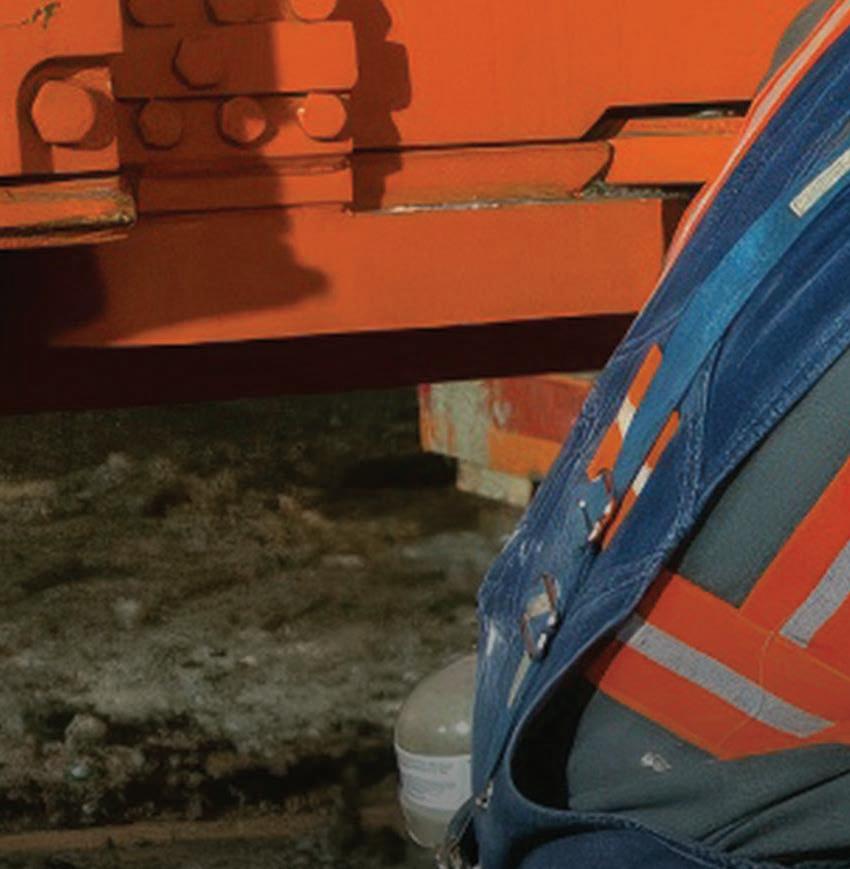






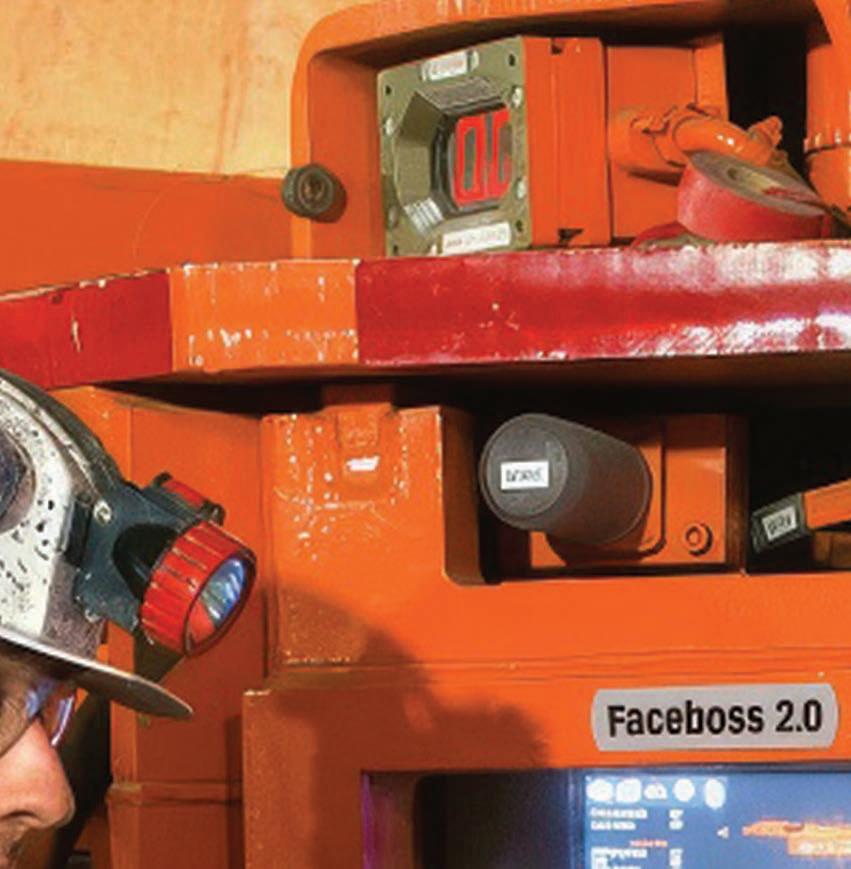
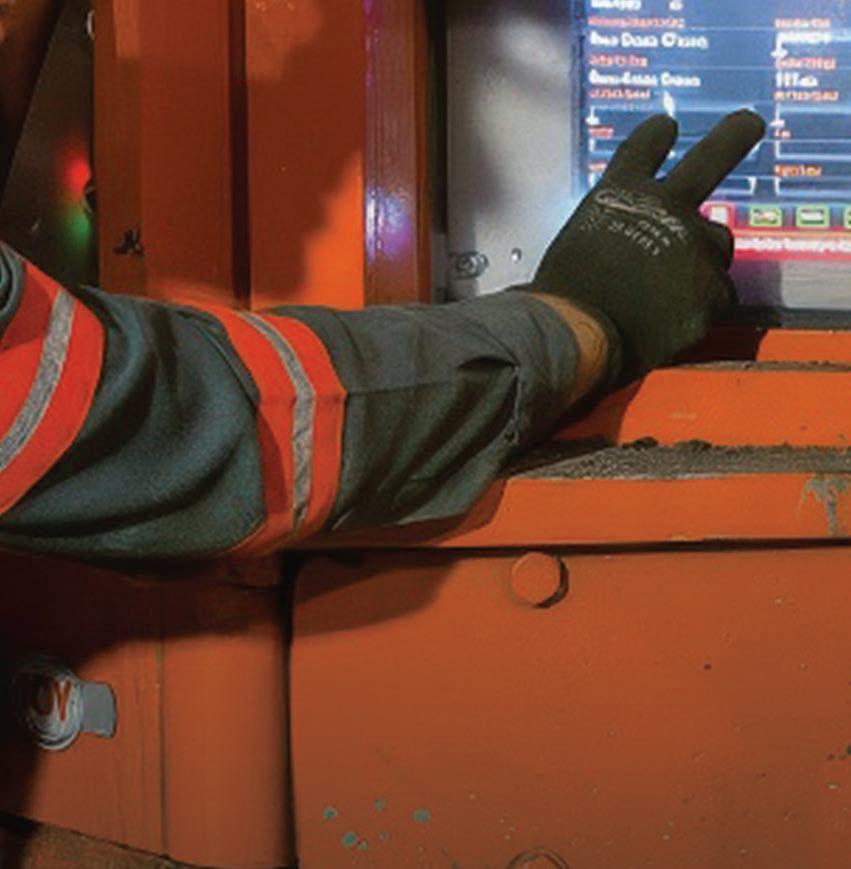


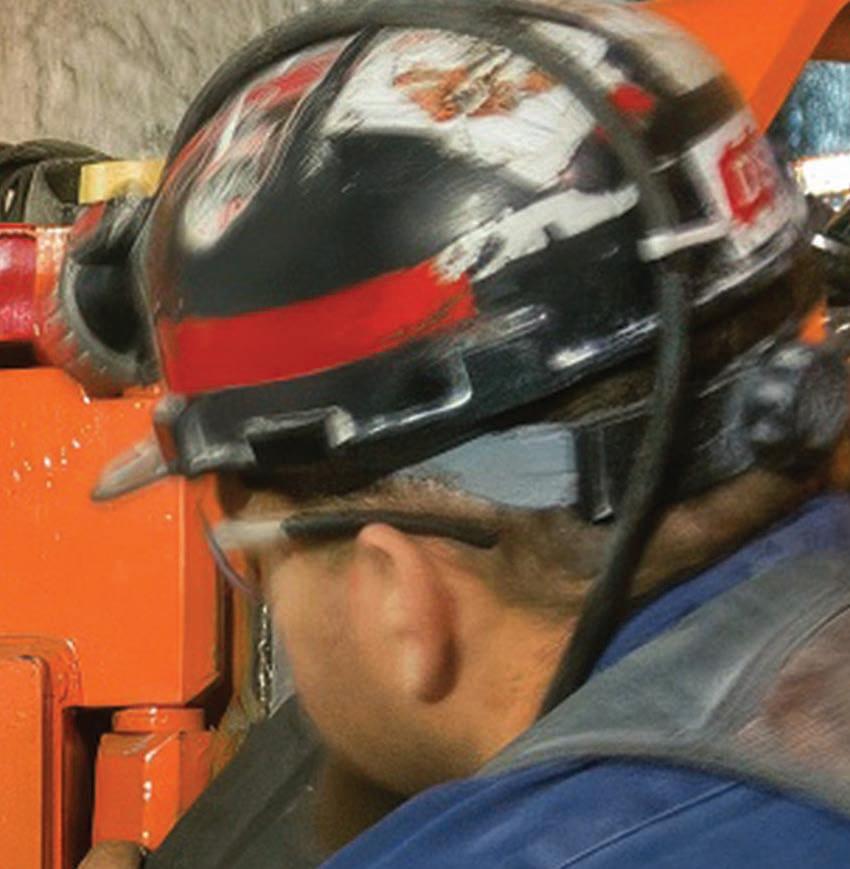





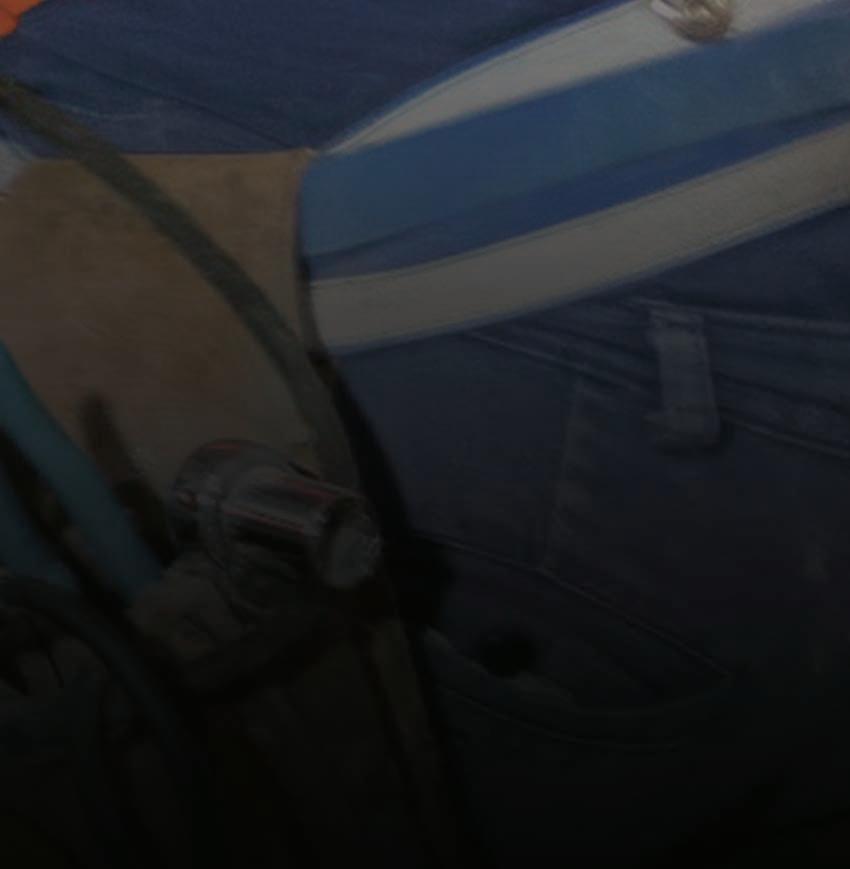

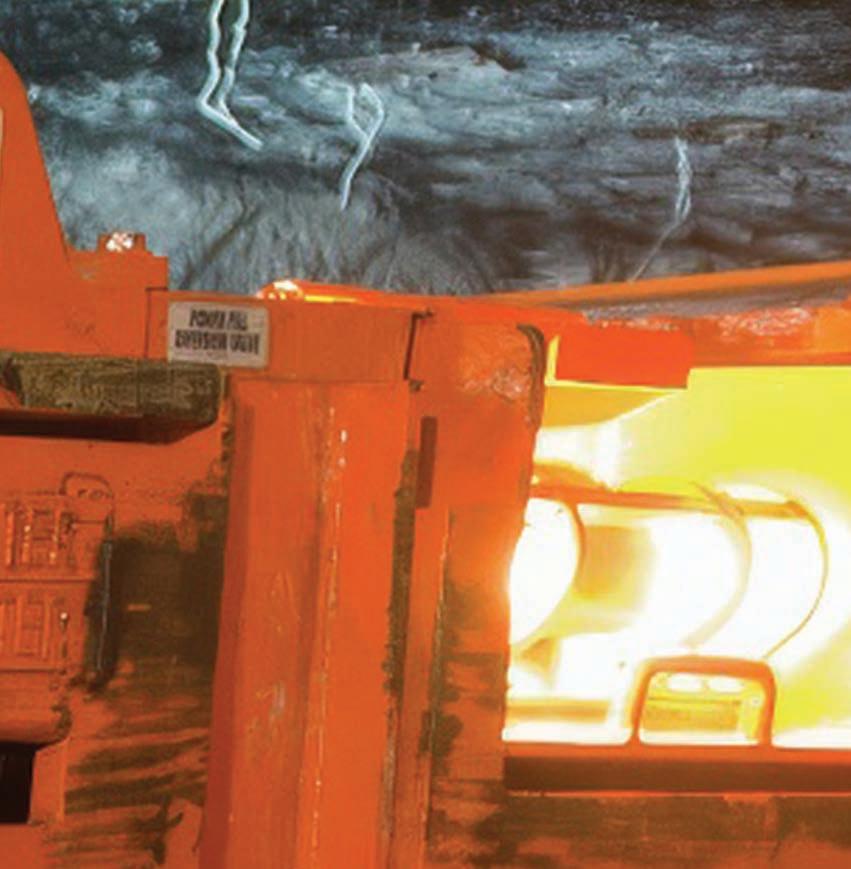

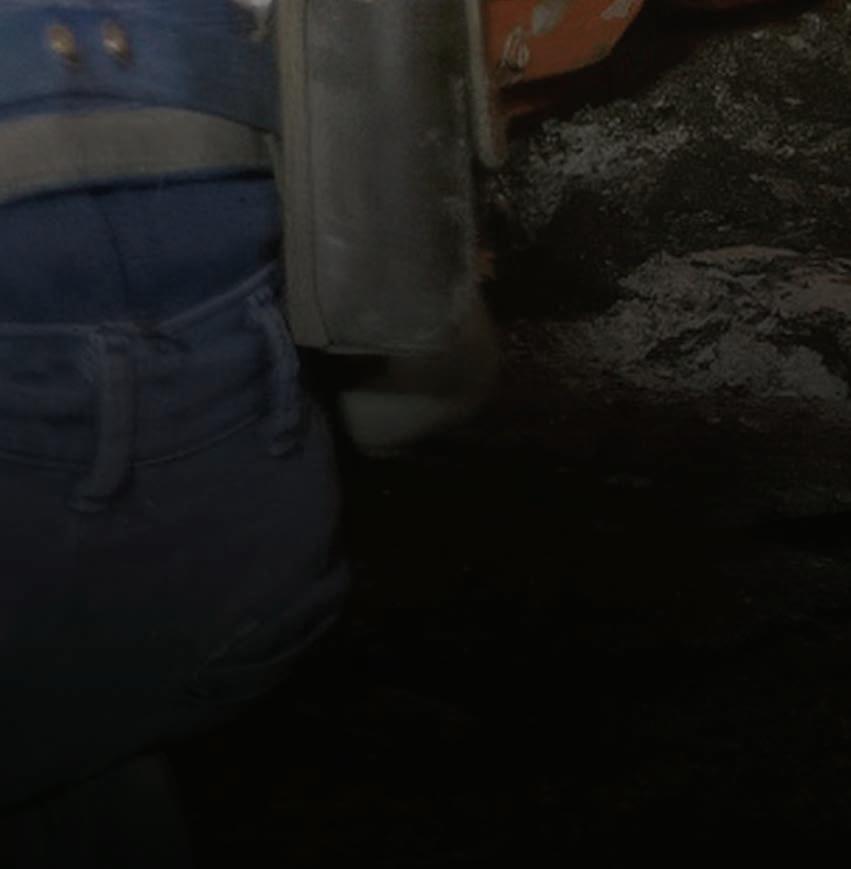

GLENCORE SPENT $436 MILLION ON SPECIALISED MACHINERY AND EQUIPMENT MANUFACTURING IN 2024.

From coal to critical minerals and base metals, Glencore is one of the world’s largest and most diverse natural resource companies.
Operating in more than 30 countries, the Swiss-based miner has an Australian footprint spanning 20 operating mines and seven processing facilities across Queensland, New South Wales, Western Australia and the Northern Territory.
These assets help to deliver billions of dollars annually for the Australian economy by supporting jobs, local communities and regional businesses, and through taxes and royalties paid to state and federal governments.
Glencore’s economic impact for 2024 has been detailed in the latest report, ‘Economic contribution of Glencore in Australia’, commissioned by PricewaterhouseCoopers (PwC).
“We felt it was important for us to articulate exactly what Glencore’s direct and indirect contribution is,” Glencore head of corporate affairs in Australia Cass McCarthy told Australian Mining.
“For every dollar we’re spending, how is that generating more economic activity in the region? And is it local or not?’. We’ve refined the project as we’ve gone along, to the point where
we can get down to specific local government areas (LGAs).
“This helps us paint a detailed and clear profile of economic contribution and suppliers, which becomes useful when talking with local stakeholders.”
Australian Mining takes a look at the key findings from the ‘Economic contribution of Glencore in Australia 2024’ report, and what it means for the future of the company.
The Mount Isa region has been a staple location for Glencore to uncover and mine copper for 100 years.
The company spent $2.3 billion throughout Mount Isa and Townsville in 2024, with 2470 direct employees and 1152 contractors working in the NorthWest Minerals Province.
“That really highlights that our operations are an economic anchor in that north-west region, going all the way up to Townsville,” McCarthy said.
“We understand those assets are incredibly strategic. And while it’s disappointing that the Mount Isa underground copper operation [closed] in late July, we are looking for a viable pathway forward for the smelter.
“Over the last five years, we’ve invested $1.8 billion in capital spending into our Queensland metals business.
“We’re looking to continue investing in the George Fisher zinc-lead-silver mine. That goes out until 2042, so we’ll look to extend that further. Then you’ve got the Black Star open-cut mine, which will be a copper and zinc redevelopment that’ll probably go for 10 to 20 years.
“We’ve continued to invest in the north Queensland region, and we will continue to do so and play a large role.”
A key example of this is Glencore spending $2.5 billion on copper concentrate from third parties in 2024.
“Glencore’s smelter is the only facility in Australia that processes third-party copper feed,” McCarthy said.
“As we’ve been preparing to close the Mount Isa underground copper mine,

GLENCORE HAS 2470 EMPLOYEES WORKING IN THE NORTH-WEST MINERALS PROVINCE.


we’ve been bringing in third-party feed from various companies. We might do a tolling agreement or, if you’re a junior miner, we might do an offtake arrangement for whatever they mine, which helps their economic case.
“We’re hugely supportive of the junior and mid-tier miners, and we’re certainly encouraging governments to approve more copper mines.”
Glencore spent a total of $19.59 billion over the course of 2024, with 59 per cent of this representing expenditure for 6814 third-party suppliers to the company’s Australian operations.
The $11.83 billion spent on suppliers included expenditure on mining contractors, equipment repair and maintenance, consumables, electricity, safety equipment, and goods and services for mine rehabilitation.
This approach means Glencore is directly supporting homegrown employment and boosting economic activity throughout the country.
“Sourcing locally and regionally wherever possible is really important to us as it underpins our regional license to operate,” McCarthy said.
“For example, if we purchase a mining truck or a longwall from an international heavy equipment manufacturer, we then try to use local providers to do the assembly and maintenance.
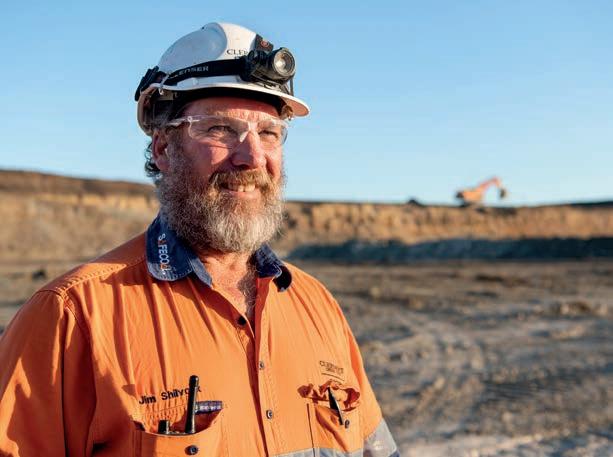
GLENCORE SPENT $11.83 BILLION ON THIRD-PARTY SUPPLIERS IN 2024, SUPPORTING LOCAL AUSTRALIAN EMPLOYMENT.
“That’s really where that value add for our business comes from.”
Glencore’s operations supported more than 68,000 jobs in Australia in 2024, with 12,763 direct employees and 50,693 indirect workers, and the balance comprising contractors.
“I hope people will read the report and understand that mining actually matters, and it matters to them,” McCarthy said.
“Readers may not directly work in the mining sector or know someone working in the mining sector, but the economic benefits that flow from Glencore and the mining sector inevitably will touch them, whether it’s through royalties, jobs or support for different suppliers.
“The sector is important for all Australians and is fundamental to the economy.”
The 6814 suppliers Glencore engaged in 2024 are spread across 361 LGAs, representing 67 per cent of all Australian LGAs.
Leading the pack is Brisbane, with $2.8 billion spent on suppliers in the region. This is followed by Mackay ($1 billion), Singleton in NSW ($927 million), and Mount Isa ($753 million).
Glencore’s contribution to Queensland’s gross value added (GVA) totalled $10.4 billion, with 49 per cent of the company’s total domestic supplier spend based in the state.
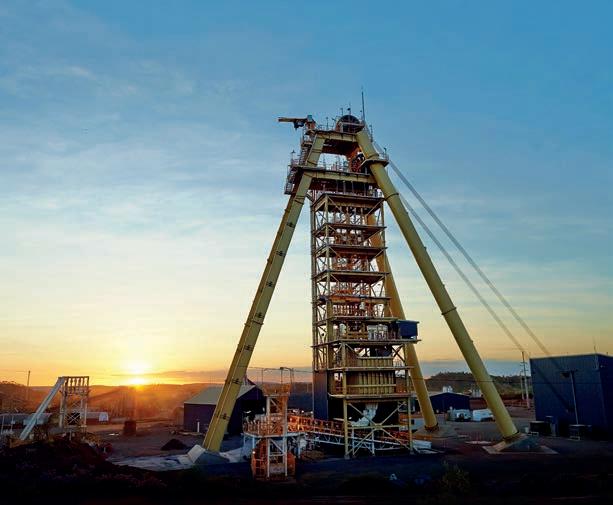
A total of $9.4 billion was spent across Glencore’s Queensland operations in 2024, with $1.7 billion paid in taxes and royalties.
“Brisbane is a massive standout throughout the report,” McCarthy said.
“Brisbane is a massive centre of economic activity for our business, whether it’s suppliers or the actual spend. It’s a big reflection of the taxes and royalties spent there.
“We have nearly half of our employee base in Queensland – 8380 in total – so it is a huge state for us.”
Since PwC began commissioning the ‘Economic contribution of Glencore in Australia’ reports in 2022, the mining company has contributed $19.2 billion in taxes and royalties, cementing the miner as a major economic player for the country.
McCarthy credited Glencore’s success to the dedication and skills of its workforce.
“One of our key strengths has always been understanding how to get the most value-add from our assets,” McCarthy said.
“Several are very mature, so you’ve got to work harder and deeper to uncover minerals as the ore grades are declining.
“I think this whole report is a testament to our workforce and how incredibly valuable (all 17,422 direct employees of Glencore’s mining and processing operations and corporate functions) are.
“We’re very proud of the fact that a lot of our people are subject-matter experts in their field.
“Whether it’s environmental monitoring or mine design, we’re incredibly blessed with the workforce. They work efficiently and they’re smart at what they do.
“And in the long run that helps us innovate and attract other people to work with us.” AM

MORE THAN 60,000 AUSTRALIANS ARE EMPLOYED IN FIFO WORK.
A YEAR OF OPERATION, MINRES AIR IS HELPING TO RESHAPE THE CONCEPT OF FLY-IN, FLY-OUT WORK IN AUSTRALIA.
When Mineral Resources (MinRes) launched its own airline in July 2024, it marked a shift in how mining companies manage the fly-in, fly-out (FIFO) workforce. One year on, MinRes Air has not only proven its value; it’s helping to reshape the very concept of FIFO work in Australia.
Operating a modern fleet of A319 and A320 aircraft, MinRes Air has now completed more than 1000 flights, connecting workers from Perth and Brisbane to key MinRes sites in the Pilbara like Ken’s Bore, which is part of the Onslow Iron project, and the Wodgina lithium mine.
But the innovation isn’t just about the logistics of moving people. The airline has become a strategic asset in keeping operations running smoothly and safely.
“Every aspect of MinRes Air – from roster planning to fleet optimisation – is developed to support the unique needs of MinRes and its workforce,” MinRes Air chief executive officer Graeme Taylor said.
That means fewer delays, faster transfers and, most importantly, more time at home for workers between swings. The latter is especially important in an industry where time away from family can take its toll.
The airline has also proved a boon for smoothing potential productivity issues.
Since February 2025, MinRes Air has delivered urgent freight, such as critical machine parts, directly to remote mine sites. Previously moved by road, these items often took days to arrive on-site, slowing productivity and increasing costs. MinRes Air means those delays have been minimised.
The airline has also proven its worth during emergencies.
Rapid evacuation is essential in cyclone-prone regions like the Pilbara, and MinRes Air has responded during adverse weather events, providing a safe, fast option.
“Whether it’s getting essential freight to site or swiftly evacuating staff, MinRes Air gives us capabilities that simply didn’t exist before,” Taylor said.
According to the Australian Bureau of Statistics (ABS), more than 60,000 Australians were employed in FIFO roles in early 2025, and that number has remained steady in recent years.
These workers are essential to the ongoing success of the mining, oil and gas, and infrastructure sectors, particularly in remote regions like the Pilbara and Far North Queensland.
The Australian Government’s parliamentary inquiry into FIFO work, which concluded in late 2024, reaffirmed concerns about the potential impact long-distance commuting can have on mental health, family life and community cohesion. Recommendations from the inquiry included improving facilities, investing in connectivity, and upgrading transport logistics to reduce the strain of travel.

MinRes Air appears to have taken that challenge seriously.
By controlling its own aviation services, MinRes is reducing dependency on third-party providers, improving punctuality and enhancing the overall travel experience, all while maintaining safety and productivity.
With its foundations now firmly in place, the airline has its sights set on growth. While current routes serve internal MinRes operations, there has been interest in expanding coverage to additional locations and exploring other industry needs.
“Our journey is just beginning,” Taylor said.
“We’ve laid a solid foundation, but there is still so much more ahead.”
This sentiment that echoes the broader shifts in FIFO management across the country.
Where once the focus was simply getting people to site, the conversation in 2025 is about wellbeing, efficiency and sustainability.
MinRes Air’s first year marks more than a business milestone; it’s a reflection of how Australian mining companies are rethinking their responsibilities to their workers.
In an industry so often defined by distance, giving back time, safety and comfort isn’t just good business – it’s the future of FIFO in Australia. AM







Built for harsh underground mining environments, MASPRO’s Bolting Series delivers the durability, reliability, and performance your operations count on. Compatible with TB60 and SB60 booms, it enhances traditional drilling functions and introduces new features for bolting applications. It’s one more way MASPRO helps you get more from your equipment, shift after shift.

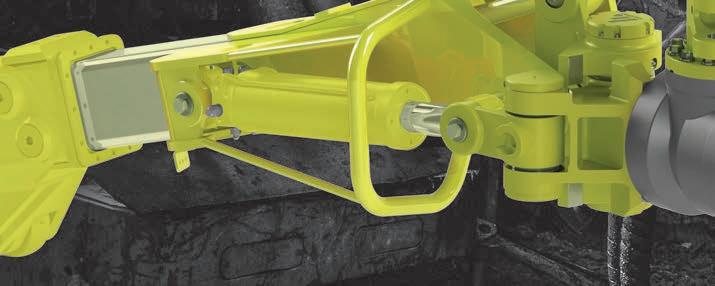

















BOSS ENERGY’S HONEYMOON MINE IS LEADING THE CHARGE IN WHAT COULD BE THE RE-EMERGENCE OF A KEY RESOURCE.
In the remote north-east corner of South Australia, a quiet but significant milestone is reshaping the narrative around the country’s uranium sector.
Boss Energy’s Honeymoon uranium mine has entered its second year of operations, and the site is proving to be something of a catalyst for the potential revival of uranium production nationwide.
The Honeymoon project exceeded its first-year guidance in the 2024–25 financial year (FY25) by producing in excess of 872,000 pounds of uranium oxide at a C1 cost of $35 per pound.
Boss Energy now expects to become cash-flow positive by FY26, with production forecast to nearly double to 1.6 million pounds of uranium oxide and a slightly higher C1 cost range of $41–45 per pound.
But Honeymoon’s ramp-up is more than just good news for a single miner; it could represent a symbol of uranium’s changing fortunes in Australia.
A re-emerging resource?
Australia possesses the world’s largest uranium resource base, according to
Geoscience Australia, yet the country remains a relatively small producer.
Uranium mining is confined to two jurisdictions in South Australia and the Northern Territory, with Western Australia maintaining a ban on new uranium developments.
However, the national uranium sector generated $1.19 billion in export earnings in FY24, with the Department of Industry, Science and Resources forecasting a rise to $1.7 billion by 2025–26.
Honeymoon is now one of only three operational uranium projects in Australia, alongside BHP’s Olympic Dam and the Four Mile mine, both also located in South Australia.
Boss Energy’s progress is injecting new energy into a sector that has long been viewed with strategic potential and regulatory hesitation.
Much of the near-term success at Honeymoon hinges on wellfield development. The mine uses insitu recovery (ISR), a low-impact extraction method whereby a solution is circulated through porous underground ore bodies, dissolving uranium for collection at the surface.
Nine wellfields are expected to be operational by June 2026. As the project transitions from its core Honeymoon domain to the lower-grade East Kalkaroo region, uranium grades are expected to decline, driving up production costs.
This shift is reflected in Boss Energy’s all-in sustaining cost forecast of $64–70 per pound for FY26.
To meet production targets, wellfield construction is moving swiftly. Wellfield 4 is already in flushing, with Wellfield 5 on track for commissioning this quarter. Meanwhile, materials for the East Kalkaroo trunkline are on-site, with construction having been scheduled to begin in August.
Despite the lower grades, Boss Energy remains focused on long-term growth, turning attention to exploration efforts in the broader Honeymoon region, particularly the Lake Constance area.
Originally drilled in the 1970s, Lake Constance has shown historic signs of mineralisation, with Boss completing 33 aircore drill holes covering 3770m in the most recent campaign.
While Honeymoon is leading the charge, the national conversation around
uranium remains complex. Uranium mining remains heavily regulated under the Environmental Protection and Biodiversity Conservation (EPBC) Act, requiring rigorous approvals that often span several years.
However, international demand, particularly in Asia and Europe, is shifting perceptions. As nuclear energy returns to the global decarbonisation agenda, Australia’s uranium assets are gaining new strategic relevance. Export markets remain strong, with uranium continuing to flow to approved nuclear countries under international safeguards. For now, the sector remains concentrated. Exploration expenditure on uranium reached $71.3 million in 2024, according to Geoscience Australia, a relatively modest investment compared to other minerals, but a meaningful one as miners eye long-term returns.
Boss Energy’s steady ramp-up at Honeymoon underlines the fact that commercial success is possible. As Australia continues to debate the role of nuclear energy and critical minerals in its future, projects like Honeymoon may pave the way for a broader uranium renaissance, one wellfield at a time. AM
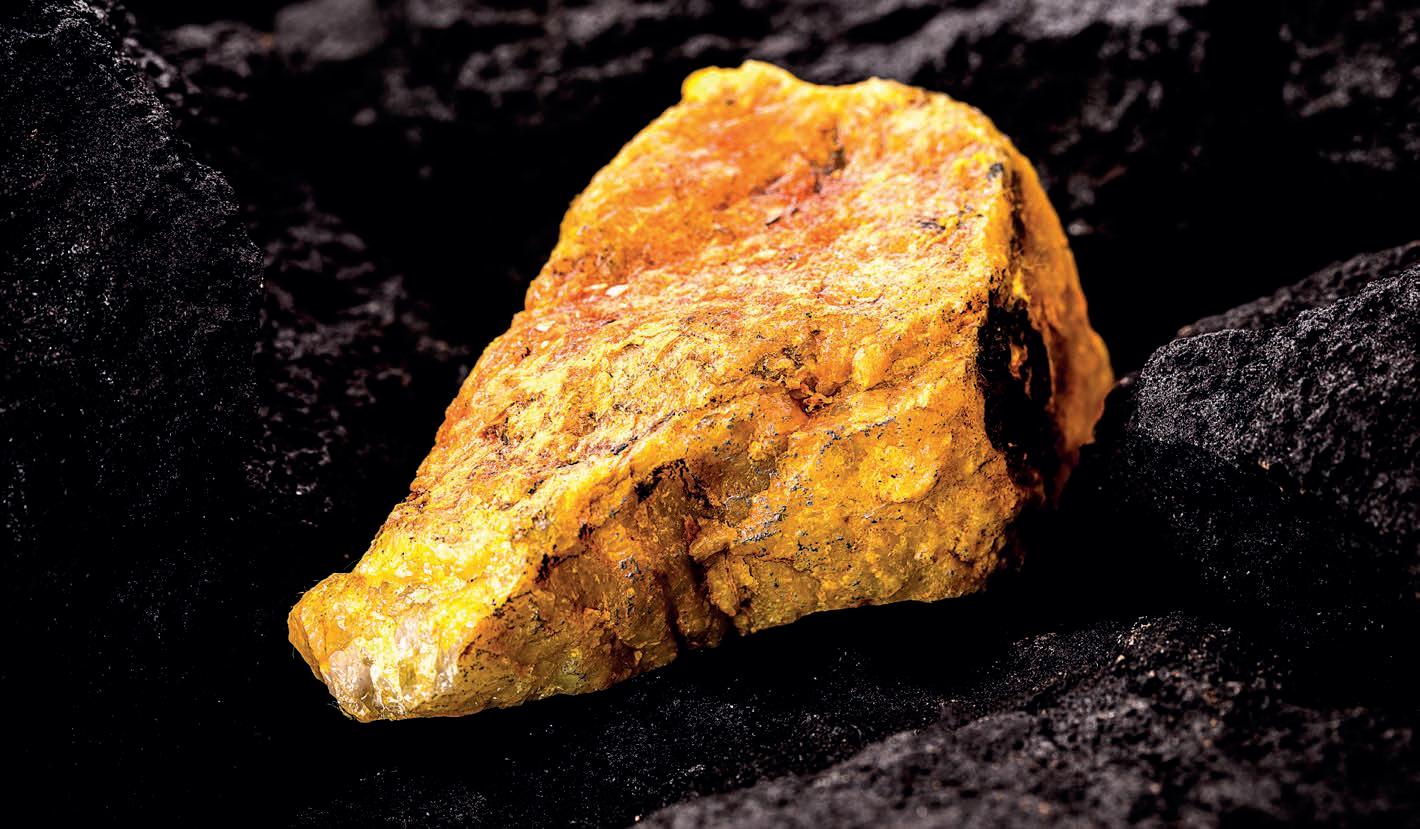





THE AIMEX 2025 CONFERENCE IS VITAL FOR PEOPLE WHO WANT TO STAY AHEAD IN A FASTCHANGING INDUSTRY.


AIMEX 2025 IS SHAPING UP AS THE SHOW THAT WILL REDEFINE MINING EVENTS IN AUSTRALIA.
Taking place in Adelaide for the first time, Asia-Pacific’s International Mining Exhibition (AIMEX) is shaping up to be its most ambitious and impactful edition yet.
To be held at Adelaide Showground from September 23–25, the event is set to be a powerhouse gathering of industry leaders, cutting-edge technology, and opportunities to connect, learn and celebrate mining excellence.
With thousands of attendees expected from across Australia and around the globe, here are five reasons AIMEX 2025 cannot be missed.
The revamped Mining Pavilion
Sponsored by BHP, the redesigned Mining Pavilion gives key mining companies a dedicated space to showcase their initiatives and engage with the community and industry.
“These are some of the industry’s most prominent contributors and we are excited to welcome these organisations and provide them with a platform to highlight their contributions to the industry and communicate their
initiatives and advancements,” Prime Creative Media marketing manager –mining events Rebecca Todesco said. BHP will be joined by the likes of Boss Energy, Magnetite Mines and Andromeda Metals at the Mining Pavilion.
Celebrate excellence
The Australian Mining Prospect Awards will take place in South Australia for the first time in their history, coinciding with AIMEX’s second day.
Known as the most prestigious awards in the sector, the Prospect Awards have been celebrating innovation and achievement across Australia’s resources industry for more than two decades.
This year’s finalists reflect the breadth and brilliance of the sector:
• Discovery of the Year: True North Copper’s Vero Resource; Spartan Resources’ Dalgaranga Gold Project; Westgold Resources’ Beta Hunt Gold Mine – Fletcher Zone; Alligator Energy’s Big Lake Uranium Project
• Engineering Success of the Year: IPI Australia – Pulley Logistics System; Robson Civil Projects – Mt Arthur
Coal Rehabilitation; MASPRO – Reengineered Components for Tier-1 Client; Alpha HPA – HPA First Project; International Graphite –Collie Micronising Facility
• Excellence in Environmental Management and Sustainability: Bravus – Foodie Waste Reduction; Fortescue – Carabid Beetle Partnership; Hancock Iron Ore –Greater Bilby Offset; Bollé Safety –Go Green initiative
• Excellence in IIoT Application (sponsored by ifm): SAPHI Engineering – Shellshock AI; Madison Technologies – Mobotix App; Hancock Iron Ore –TrackDefectX; Emesent – Digital Stope Solution
• Excellence in Mine Safety, OH&S: SAPHI Engineering – Shellshock AI; Fortescue – Leading Safety Index; National Plastics and Rubber
– Stacko System; Hancock Iron Ore
– Brilliant at the Basics; Rio Tinto –R.O.R.I. firefighting robot
• First Nations Engagement Award (sponsored by Sandvik): Rio Tinto – ATAL Program; Bravus
– Indigenous Pathways; Blackrock Industries – Second Chance for
Change; Mallard Contracting –Aboriginal Engagement Strategy
• Innovative Mining Solution: Anglo American – The Armadillo; Fortescue – Collision Avoidance System; Mineral Resources –Marine Transhipping; Micromine – Micromine Advance; Dredge Robotics – Zero Entry Dredging; Rio Tinto – Corrosion Protection; McLanahan – QUICKCHANGE System; Sandvik – Agnew Stage 1
• Lifetime Achievement Award: Dino Otranto (Fortescue); Craig Pedley (MAX Plant and Striker); Leonard Rowe (Newmont)
• Outstanding Mine Performance (sponsored by Bonfiglioli): Fenix Resources – Beebyn-W11; Meeka Metals – Murchison Gold; Vertex Minerals – Reward Gold; Mineral Resources – Onslow Iron; Gold Fields – Agnew Gold Mine
• Safety Advocate of the Year (sponsored by Fortescue): Ed Tancred (Orisent); Dale Harris (Hancock Iron Ore); Soa Palelei (Strong Minds, Strong Mines); Aaron Giles (Yancoal); Dave Holland (Safety Training); Kathy Clarkson (Key Consultation Solutions)
The evening will also reveal the Australian Mine of the Year, sponsored by SEW-EURODRIVE. Held at the iconic Adelaide Oval, the awards night will be a highlight of the week, and tickets are already in hot demand.
A world-class conference program
AIMEX’s three-day conference is included with free event registration, but its value is priceless for those who want to stay ahead in a fastchanging industry.
Across two stages, delegates will hear from industry experts, government representatives, and researchers tackling the sector’s biggest challenges.
Topics will range from environmental, social and governance (ESG) and procurement strategies to workforce development, the energy transition and the latest in automation and digitalisation. Real-world case studies will showcase how companies are adapting to new regulations, improving safety, and integrating sustainability at the core of operations.
This is not just theory; it’s a platform for practical insights that attendees can apply immediately in their own organisations.
The Transformative Tech Showcase
Innovation is accelerating in the resources sector, and AIMEX’s Transformative Tech Showcase offers a

front-row seat to the future. Companies will display solutions that improve safety, boost efficiency and reduce environmental impact.
From drones that are able to inspect mine sites in minutes to data platforms that predict equipment failures before they happen, the showcase is a buzzing hub of ideas and partnerships.
Sustainability will be a strong theme, with technologies aimed at


reducing carbon emissions, improving water management, and enabling circular economy principles in mining operations.
Build connections that drive results
In mining, as in many industries, success can often come down to who you know. AIMEX is designed to foster meaningful connections, whether in the exhibition hall, at conference networking sessions, or during evening events at some of Adelaide’s top venues.
The event draws decision-makers from across the supply chain, offering opportunities to meet potential clients, suppliers, partners and collaborators from Australia and overseas.
AIMEX 2025 is more than just a trade show – it’s a convergence of ideas, innovation, and inspiration.
The event’s relocation to Adelaide has added a fresh new dimension, bringing new audiences and opportunities to engage with South Australia’s growing mining sector.
The combination of a hands-on exhibition, in-depth conference, technology showcase, and the Australian Mining Prospect Awards makes this an event where the entire mining community comes together to celebrate, learn and plan for the future.
With registration free but essential, and some ticketed events already selling fast, now is the time to secure your place at what promises to be the most important event in the Australian mining calendar. AM
AIMEX 2025 will be held at Adelaide Showground from 23–25 September. For more information, visit aimex.com.au and lock in your spot before it’s too late.






Scan the QR code or visit komatsu.com.au for more information.
KOMATSU’S RECENT ACQUISITION HAS BOLSTERED THE ORIGINAL EQUIPMENT MANUFACTURER’S UNDERGROUND HARD ROCK MINING PORTFOLIO.
Komatsu has been raising the bar in recent years in order to compete in the underground mining of hard rock and industrial minerals.
Following the 2024 acquisition of GHH Group GmbH (GHH), a German manufacturer of underground mining, tunnelling and civil engineering equipment, Komatsu has significantly increased its product portfolio and is accelerating its product development roadmap.
The acquisition helps to enhance Komatsu’s ability to provide products to a significantly larger customer base, as well as serve underground mining customers’ unique challenges, reduce their costs and help them achieve their production goals.
With a larger product portfolio covering the scope of low-profile, narrow-vein and mid-seamed mass mining equipment, with loaders from 3–15 tonnes (t) and trucks from 7–45t, Komatsu has a comprehensive range of load and haul equipment.
Komatsu also boasts diversity in its alternate technology drive train designs, having decades of experience in the
design, development and manufacturing of tethered electric loaders and more recent experience in battery products.
One of the latest releases is the WX11, a powerful 11t loader.
This workhorse offers what Komatsu describes as “best-in-class” breakout force and payload for optimal loading and haulage cycles.
“The WX11 is the first-tomarket LHD (load haul dump) with a full 11,000kg capacity while having the same general footprint and dimensions of LHDs in the 10t category,” Komatsu said.
The WX11 LHD has a unique bucket design engineered to penetrate the muck pile easily and completely fill the bucket when rolled back.
All bucket options include a durable, high-strength plate lip that helps to extend their lifespan.
“This and many other features, including high speed-on-grade and optimal operator visibility, make this an ideal LHD for mines aiming to boost productivity,” Komatsu said.

For the next size class in mid-seam mass mining, the Komatsu WX15 LHD is designed to deliver high performance and productivity.
This machine offers a first-rate power-to-weight ratio, a robust frame and system design, and a spacious, ergonomically designed operator cabin with a large footbox available in narrow and wide cabin configurations, making the product more fit-for-purpose for most operations.
With its versatile configuration, the WX15 is suited to create value for customer applications across underground mining operations.
This LHD also includes radio remote control and automation options, allowing the machine to complete an entire production cycle without manual supervision, further enhancing safety and productivity.
The matching mining truck to the WX15 is the Komatsu HX45, a robust and reliable machine delivering high power rating, excellent dumping angle and a leading turning radius.
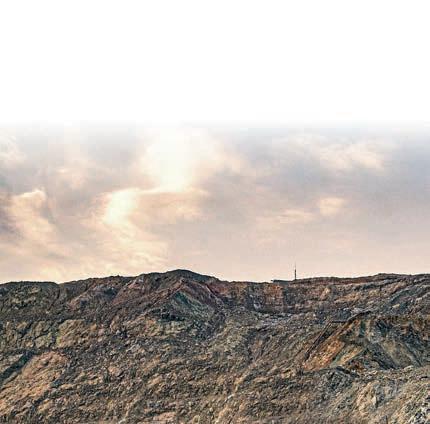

The HX45 features an oscillating articulation with a front suspension system, enabling smooth manoeuvrability and reducing frame stress, helping to increase longevity of the frame and componentry.
Both machines are designed to work in tandem, offering productive
three-pass loading cycles for maximum efficiency in mining operations.
With a strong focus on safety, performance and maintainability, the WX15 and HX45 feature operatorfriendly cabs, CE certification, Tier 3 and Stage V engine packages, optional data loggers with Wi-Fi connectivity for digital analytics solutions, and proximity detection interfaces.
“These features allow the products to not only comply with local regulations but also provide for customised visibility into the machine performance, productivity and health, allowing customers to improve efficiencies across their operations continuously,” Komatsu said.
When it comes to operational flexibility of narrow vein equipment, Komatsu has the WX03, a small 3t LHD, and the WX04, a 4t LHD with a high lift boom.
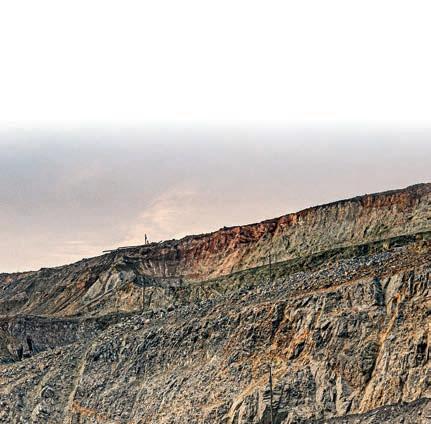

For the 7t class narrow-vein loader, the WX07 is designed to improve versatility and operational flexibility, especially for truck loading. This loader is able to operate at altitudes of up to 4000m.
Komatsu has also taken the next step in globalising its narrow vein offering,


ensuring products like the WX07 and WX04 are also available with CE certification, Tier 4F and Stage V engine packages, and diesel particulate filters, allowing them to be sold into markets that are legislated accordingly.
The recently introduced HX30 underground mining truck boasts an ergonomic operator’s compartment with an additional emergency seat ideal for taking another person into or out of the mines or conducting training exercises, and an adjustable steering wheel for enhanced operator comfort.
The 30t truck comes with Tier 3 and Stage V engine packages with a 320kW engine. Also notable is the oscillating centre bearing, which allows for performance enhancing truck manoeuvrability and reduces stress on the frame while also maximising operator comfort.
The HX30 will complement the already proven 20t HX20 truck and the HX45, the largest truck in the offering at 45t, both of which come with an oscillating articulation.
For enhanced productivity underground, the HX30 truck is an ideal partner to the WX11 LHD and the HX20 truck can partner with the WX07 LHD for efficient threepass loading.
Rounding out the underground mining truck line-up are the 7t HX07 and 16t HX16 trucks, high-duty cycle loaders known for their long life and high productivity. These dependable workhorses combine power and efficiency with impressive breakout power.
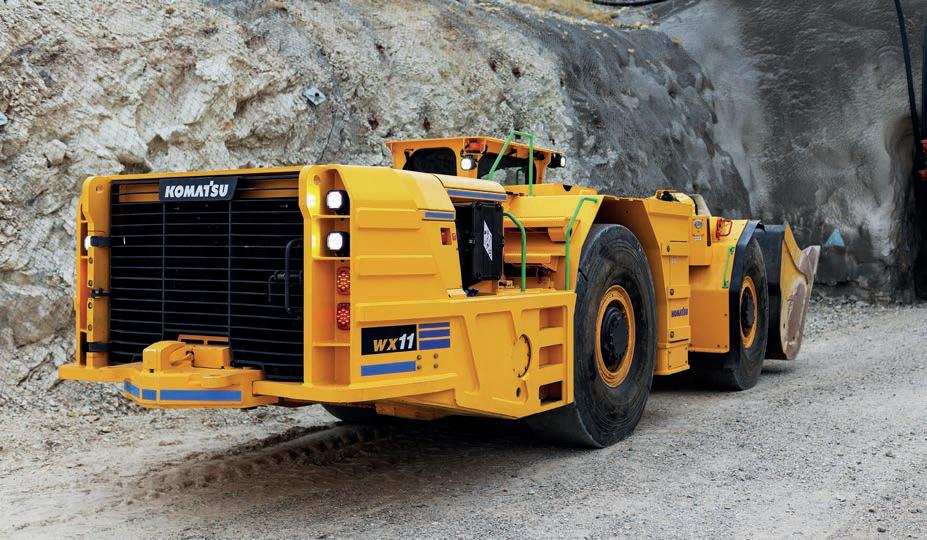
Komatsu is also focused on sustainability.
The WX04B is its first batteryelectric LHD designed specifically for underground hard rock mining.
One of the standout features of the WX04B is its innovative battery swap system. Unlike systems that require extensive underground infrastructure, the WX04B’s battery swap can be performed at ground level without additional equipment or risks of rigging overhead loads, streamlining process reduces costs and complexity.
Komatsu pairs this innovative LHD with its new original equipment manufacturer (OEM)-agnostic 150kW battery charger, a robust solution built for the demands of hard rock mining.
From a technology standpoint, Komatsu’s underground loaders and trucks are available with proximity detection systems (PDS) Level 9 interface, as well as automation-ready and available with digital analytics and vehicle tracking solutions, which can be customised to support specific customer and application needs.
LHDs and haulage trucks are the backbone of any hard rock operation, with safety, efficiency, reliability and performance of highest importance for mine site operators.
From a comprehensive range of diesel and electric loaders and trucks – spanning from narrow-vein to mass mining applications – to innovative battery-electric LHDs with intuitive battery-swapping solutions, Komatsu demonstrates a commitment to productivity, operator comfort, and environmental stewardship. AM
RESHAPING
MINING WITH SMART, SUSTAINABLE BLASTING SOLUTIONS THAT OPTIMISE COSTS AND BOOST SAFETY.
BME is transforming the future of underground mining through a combination of advanced technology, safety leadership, and a deep commitment to sustainability.
This was the key message in BME’s recent webinar, ‘Advancing Underground Mining with BME’s Innovative Blasting Solutions’, where company experts detailed how their integrated offering is redefining blasting standards and operational excellence across the globe.
“For us at BME, we believe blasting is both an art and a science,” BME regional manager for underground operations Derek Menezes said.
“The science is backed by our in-house products, technology and equipment, which are designed to reduce ground vibration, air blast and flyrock, both on the surface and underground.
“The art comes from BME’s technical expertise and knowledge and linking that up with our products, technology and equipment.”
BME’s integrated approach is becoming increasingly relevant as mines face growing pressure to reduce environmental impact and maintain their licence to operate.
Menezes said BME’s innovations are enabling mining companies to improve cycle times while minimising noise, vibration and NOx gases, contributing to safer and more sustainable operations.
BME has built its underground offering around five core pillars: cost control, precision, equipment longevity, ground control and environmental stewardship.
Menezes said explosives typically represent 5–15 per cent of a mine’s operational cost. This makes blast optimisation an important lever in cost reduction.
By achieving better fragmentation, operators can reduce dig times, limit machinery wear and tear, and speed up load and haul processes.
At the heart of BME’s solution is its dual salt emulsion technology, which delivers consistent energy output while producing minimal toxic NOx gases after a blast.
This supports faster re-entry to the work area and reduces the need for excessive ventilation. Combined with


smart blast design and execution, it offers a more stable and predictable approach to underground operations.
BME operations manager Crevice Mala expanded on the company’s digital technology, focusing on the AXXIS Silver electronic detonator and centralised electronic blasting system (CEBS).
Developed in-house, these systems are designed to provide unparalleled control and accuracy in complex underground environments.
“Safety is paramount,” Mala said. “Our CEBS set-up includes secure access and programmable detonators, which means only authorised personnel can initiate blasts. The system also supports phased firing, reducing the risk of seismic triggers and fall-ofground incidents.”
The AXXIS Silver detonator delivers firing delay accuracy of 0.0025 per cent, enabling simultaneous blasting and improved fragmentation. Fewer misfires and reduced environmental impacts are just some of the benefits. The system can be adapted to suit various mining methods, including narrow-reef, sublevel caving, and long-hole operations.
Real-time diagnostics, self-monitoring and post-blast analysis further strengthen BME’s value proposition, enabling operators to improve decisionmaking and maintain production targets.
Smart blasting doesn’t stop at initiation systems, with BME’s pumpable emulsion technology and Smart Emulsion Charging Units (Smart ECUs) creating a seamless underground delivery system.
The Innovex dual salt emulsion, which is non-explosive until sensitised underground, has proven to be resilient under extreme handling conditions.
“We’ve dropped the emulsion over 1000m in a single pass with no change to its performance,” Mala said. “It can also be pumped multiple times without crystallisation or degradation.”
The emulsion is classified under UN 5.1 and suitable for all hole diameters, with a shelf life of up to six months. It’s sensitive at low and high densities, which is essential for underground blasting.
Smart ECUs are built for durability and flexibility, with dual-pump systems allowing charging to continue even if one pump fails.
These units are compatible with different carrier types and offer real-

time data collection to inform better on-site decisions.
BME explosives engineer Aviwe Dubula closed the webinar with a series of case studies showing how the company’s solutions are delivering realworld improvements.
A mine experiencing poor ground conditions and unstable tunnel walls implemented BME’s smooth-wall blasting technique using the Innovex emulsion. The result was a more stable hanging wall, better fragmentation and improved advance per blast. This was
all possible without additional costs or changes to the existing parameters.
“The team executed the project from drilling to post-blast analysis, demonstrating the benefits of a consistent and well-managed blast process,” Dubula said.
Another project saw a customer struggling with out-of-sequence detonator firings and low ore recovery.
BME’s global technical services team optimised the design parameters and remedied the problem areas with the implementation of the company’s Viperdet range of nonelectric initiation system, resulting in a 17 per cent increase in ore recovery and a significantly improved blast shape.
These results, combined with reduced nitrate leaching from BME’s emulsion, contributed to stronger environmental performance and safer underground conditions.
BME has reinforced its commitment to providing complete underground solutions that integrate people, technology and products.
“Good fragmentation isn’t just about breaking rock,” Menezes said. “It’s about controlling your entire value chain – from blast design to downstream processes – and achieving safe, sustainable, cost-effective outcomes.”
With growing demand for more efficient and responsible mining, BME is positioning itself as a leader in smart blasting.
Its tools, technologies and people are helping underground operations achieve higher productivity, lower emissions and better results. AM

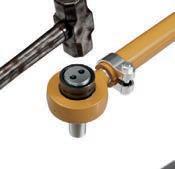


























Flexco is setting a new benchmark in underground conveyor belt cleaning with its latest innovation, the continuous blade secondary (CBS) belt cleaner.
The popular CBS cleaner was originally designed as a heavy-duty, robust secondary cleaner for surface applications, but Flexco’s willingness to reimagine its use has led to strong results in underground mining.
This development, equipped with a fire-resistant and anti-static (FRAS) polyurethane blade, is proving to be a game-changer for mining operations, particularly in the water-heavy, high-compliance environment of underground coal.
“Through internal discussions between myself and the New South Wales territory manager, we identified potential for the CBS cleaner to be used in underground coal applications,” Flexco regional manager Sebastian Olguin told Australian Mining
The new venture began with a trial installation at a site in southern New South Wales. From there, the product’s value became immediately clear, addressing a long-standing issue: effective removal of carryback in wet, high-volume conditions.
“Underground coal tends to run a lot of water, not just for dust suppression but
also for maintenance and safety,” Olguin said. “The CBS cleaner has a unique squeegee-like effect that helps remove carryback material, which is otherwise hard to clean on underground belts.”

The CBS cleaner uses a 50mm-thick polyurethane block embedded with tungsten. This design provides the durability to tackle stubborn debris while maintaining enough flexibility to wipe the belt clean.
“The tungsten helps dislodge difficult material, while the polyurethane acts as a barrier to ensure nothing gets through,” Olguin said.

This single-piece blade is a departure from traditional segmented cleaners, achieving full-width coverage with no gaps, ensuring no streaking on the belt.
The cleaner is also easy to install.
“You’ve got one solid blade and an air tensioner to apply constant blade-tobelt contact,” Olguin said. “It’s simpler to install than many other systems that require manual tensioning.”
The CBS cleaner is also compatible with mechanical belt fasteners, which are commonly used in underground coal operations.
The cleaner integrates seamlessly with Flexco’s spring air tensioner (SAT), a system designed to handle mechanical fasteners with ease.
“The SAT allows for lateral movement of the cleaner,” Olguin said.
“When a mechanical fastener comes around, the cleaner reacts and twists slightly to provide an additional point of relief. Without that relief point, you risk damaging the fasteners or the blade.”
The SAT tensioner, which can also be run with nitrogen or water (though air is most common), offers continuous, adjustable pressure while preserving blade integrity.
A mine site in southern New South Wales recently saw two CBS cleaners installed over a sump. The outcome? A major improvement in water and material removal.
“They were running a primary cleaner and two secondary cleaners, yet excessive amounts of water were still getting past the existing cleaners,” Olguin said.


“Since installing our CBS cleaners, material hits the blade and drops straight into the sump, eliminating carryback running down the conveyor line.”
This reduction in carryback enhances not just belt efficiency but also safety and maintenance.
With reduced carryback travelling back along the conveyor, the risk of slips, trip hazards or equipment wear decreases significantly.
“No maintenance has been required since the cleaners have been installed, showcasing the reliability of the tensioning system, as well as the durability of the cleaner,” Olguin said.
The product’s success isn’t limited to coal. Flexco is also seeing strong performance in gold and iron ore environments.
Adding further value is Flexco’s commitment to local manufacturing. The FRAS polyurethane compound is poured in Australia, helping to ensure a high level of quality control and faster turnaround times for customers.
“By pouring the compound locally, we’re able to quickly deliver product to customers and support the Australian manufacturing industry,” Olguin said.
And while polyurethane blades often come with concerns about wear rates, Flexco has engineered the CBS cleaner to counter that issue.
“People assume polyurethane wears quickly,” Olguin said. “But the tungsten insert slows wear dramatically.”
As operations across Australia look to improve safety, reduce carryback and minimise maintenance, Flexco’s new FRAS blade-equipped CBS cleaner offers a practical, reliable and locally manufactured solution.
Serving the mining industry across Australia. Whether you’re in Western Australia’s iron ore heartland, the coal fields of Queensland, or the mineral-rich regions of New South Wales and South Australia, our regional service centres are ready to support you with expertise, repair and machining services.
FLS’s state-of-the-art Service Centres in Australia are strategically located near major mining regions.
You can be sure our team is ready to meet your needs by
■ Reduce downtime - mining experts on your doorstep, for planned maintenance or an unplanned outage
■ Local machining facilities - reduce lead time for spare and wear parts, repairs, rebuilds, exchanges
■ One-stop-shop supports performance improvement –training, engineering or onsite support





GEOVIA’S UNDERGROUND DESIGNER IS BRINGING AEROSPACE-GRADE AUTOMATION AND PARAMETRIC PRECISION TO UNDERGROUND MINE PLANNING.
In underground mining, where time is money and precision is paramount, even minor design errors or delays can have costly consequences.
But what if redesigns could take minutes instead of months?
That’s the promise of Dassault Systèmes’ new GEOVIA Underground Designer role.
At the core of this innovation is parametric modelling – a powerful design methodology long trusted by industries like aerospace and automotive. Now, Dassault Systèmes is applying the same precision and flexibility to the mining sector.
Dassault Systèmes GEOVIA industry process expert Christina Ludwicki has been deeply involved in developing and adapting this technology for underground mine planning.
“I come from underground mining and have spent months on a single design, only for it to be changed and thrown away,” Ludwicki told Australian Mining
“That’s why I fell in love with this technology – it’s fast, flexible and completely parametric. You change one element, and everything updates automatically. That’s a game-changer.”
Traditional mine design is notoriously time-consuming, involving manual updates and often disconnected workflows.
GEOVIA Underground Designer leverages CATIA, an engineering and design program behind Boeing’s 777 and 787 aircraft, to offer a dynamic, parametric design environment.
“Everything is connected,” Ludwicki said. “If I change the length of a heading or the position of a point, all the related infrastructure – stopes, drives, raises –update in real time. That ability alone cuts weeks off design timelines.”
This isn’t just about speed, it’s about enabling mining engineers to explore multiple strategic options quickly.
“You can now test 10, 20, even 30 design scenarios in the time it used to take for one,” she said. “That flexibility enables better decisions based on real constraints like changing cut-off grades or unexpected geological structures.”
While the role’s capabilities are advanced, Ludwicki said ease-of-use remains front of mind.
“It does require a mindset shift from traditional workflows,” she said. “But once users grasp the parametric logic –that everything’s an input or output – it becomes intuitive.”
The visual scripting engine adds further customisability for power users, allowing teams to build automated workflows tailored to their specific methods, whether it’s longhole, block caving or cut-and-fill.
“You don’t need to go deep into scripting if you don’t want to,” Ludwicki said. “There are simple tools for everyday use. It just depends on what problems you want to solve.”
GEOVIA Underground Designer doesn’t just build static plans, it creates fully parametric models, so any updates – whether due to a new fault, changed production targets, or updated geotechnical data – can be incorporated instantly.


“This is the foundation of a virtual twin,” Ludwicki said. “A design that evolves with your mine, and that reflects real-time decisions and inputs.
“And because it’s cloud-based, everyone – from engineers to analysts – can collaborate on the same up-todate model.”
The cloud-based 3DEXPERIENCE platform allows teams to work together globally. Permissions can be set, changes tracked, and visualisations shared instantly across the value chain.
While the Underground Designer role was only officially released in July, its technology has been stress-tested through years of development and internal use.
“This is aerospace-grade technology being tailored for mining,” Ludwicki said. “If you can model a jet engine, you can model a stope.”
She points to a recent block cave model built entirely using the new tools.
“It took under two weeks, and everything – every ring, every access point – was parametric and simulationready. In the past, that could’ve taken months.”
As the industry embraces automation, virtual twins, and ESG-driven efficiencies, Ludwicki sees Underground Designer as the logical next step.
“We’re helping clients get from strategy to operation faster and more accurately,” she said. “We can simulate, evaluate, and adapt before committing millions of dollars underground.”
While still in early deployment, Dassault Systèmes is actively seeking strategic partners to adopt and refine the technology in realworld environments.
“We don’t expect everyone to jump in blindly,” Ludwicki said. “This is new tech for mining, and we want to work hand-in-hand with clients to build the right models for their challenges. Once the framework is there, it’s yours to tweak, update and evolve as needed.”
For mines navigating tighter margins, ESG requirements, and shifting production targets, GEOVIA Underground Designer offers a rare combination of speed, accuracy and adaptability.
“This is just the beginning,” Ludwicki said. “We’ve built the foundation. Now, it’s about seeing how the mining industry takes it forward.”
With GEOVIA Underground Designer, the age of reactive mine planning may soon be behind us.
For those ready to embrace parametric tools and digital collaboration, the future is already here.
JSG INDUSTRIAL SYSTEMS IS ENHANCING UNDERGROUND MINING EFFICIENCY THROUGH ITS RANGE OF LUBRICATION SYSTEMS AND PUMPS, FUEL NOZZLES AND RECEIVERS.
For almost 60 years, JSG Industrial Systems has been a leading provider of quality lubrication and flow management solutions for the mining industry.
Building off its decades-long legacy, John Sample Group sold JSG to SKF Group in late 2024.
JSG has since been integrated into SKF’s existing lubrication management business, strengthening the latter’s mining capabilities across Australia and New Zealand.
“It combined JSG’s deep industry knowledge, local support and customer relationships with SKF’s global brand recognition and market leadership,” JSG said.
“JSG offers a well-established and capable dealer and distributor network.
“This synergy enables faster service, engineered lubrication solutions,broader product access, and streamlined supply chains for underground mining operations.”
As mining operations continuously look to enrich performance and expand machine longevity, JSG joining the SKF family comes at the perfect time for the industry.
According to SKF, while lubricants account for just 2–3 per cent of a machine’s running costs, poor lubrication contributes to 40–60 per cent of maintenance expenses.
This demonstrates the importance of reliable lubrication practices, especially in underground mining applications.
SKF’s automatic lubrication systems deliver precise amounts of lubricant to critical components such as joints and bearings at predetermined intervals, minimising human intervention and ensuring consistent lubrication. Each system comprises a central reservoir, metering valves, distribution lines, and electronic controllers.
Utilising a single supply line to automatically deliver lubricant to injectors, each serving a specific lubrication point, single-line lubrication systems can be customised to cater to single machines, zones or multiple machines. Progressive lubrication systems, on the other hand, are designed to automatically distribute the correct amount of lubricant to multiple points in a sequence.
“Automatic lubrication systems offer a proven solution, reducing downtime,

extending equipment life, lowering operational costs and minimising environmental impact by preventing over-lubrication,” JSG said. “These systems also improve safety by reducing manual handling and freeing technicians
for other tasks. In a landscape where a single missed lubrication point can affect productivity, effective lubrication management – enabled by smart, connected systems – is essential to keep operations running efficiently.”

Automating and monitoring lubrication helps to inform preventive maintenance and planning at a swifter pace compared to proper manual lubrication.
“Proper manual lubrication usually takes about 15 to 20 minutes per machine and maintenance cycle,” JSG said. “Failure to properly lubricate each lubrication point on every machine can have a negative impact on schedules, maintenance costs and running time performance.”
Ideally suited to continuous miners and underground dump trucks, SKF’s lubrication systems are built to withstand coal dust, water spray, high temperatures or heavy shock loads. They are designed to ensure consistent and thorough lubrication of all critical points and components, boosting productivity and minimising downtime.
“If dust, dirt, sand and water are allowed to work their way into critical machine components, they form a ‘grinding compound’ that reduces components life substantially,” JSG said.
“Maintaining a proper lubricant film is key to reducing wear and downtime. Frequent lubrication reduces friction and keeps bushing and bearings free of penetrating contaminants.”
SKF’s lubrication systems have seen great success in the mining industry, with a SKF Lincoln P653 pump being used with injectors on agitators and haul trucks from a Caterpillar customer.
Easy to mount and compatible with one of seven different reservoir sizes, the P653S pump has reservoir capacities ranging from 4–100L and
provides flexible options for different operational scales.
“These single-line systems were chosen for their adaptability, compact design and consistent performance,” JSG said.
Proven in the toughest mining conditions, SKF’s lubrication systems and pumps are built to deliver reliability underground and on the surface.
JSG has built strong relationships with premium suppliers over the years. This includes a partnership with FloMAX International, a US-based fluid management solutions provider.
FloMAX manufactures industrial fluid transfer system components such as fuel nozzles and fuel receivers, both of which play a critical role in proficiently delivering and transferring fuel to machinery.
Fuel nozzles control the flow, atomisation and mixture of fuel with air, whereas fuel receivers facilitate a secure connection and flow between fuel lines.
FloMAX’s fuel nozzles provide users with a leak-free process to transfer large fuel volumes at high flow rates. Available in multiple designs and configurations, FloMAX’s nozzles accommodate different types of fuelling systems and equipment.
The FNBL nozzle offers durability and reliability in harsh mining conditions due to its all-metal construction and stainless-steel nose.
Known as one of the smallest and lightest diesel units at just 2.7kg, the FNBL nozzle holds a minimum flow
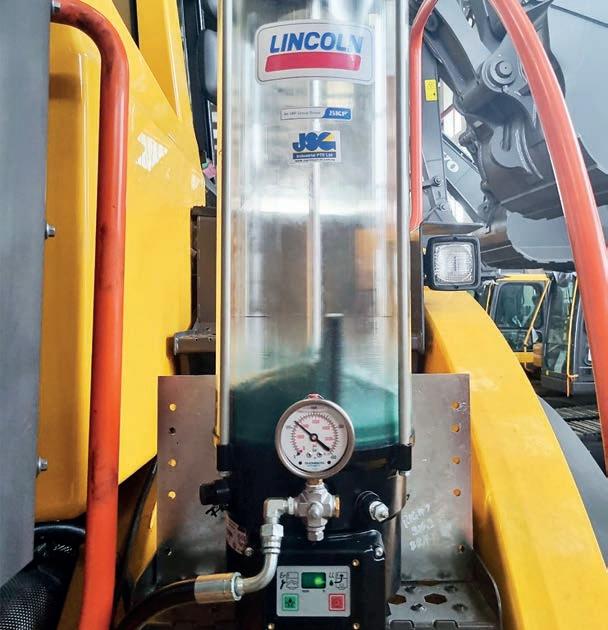
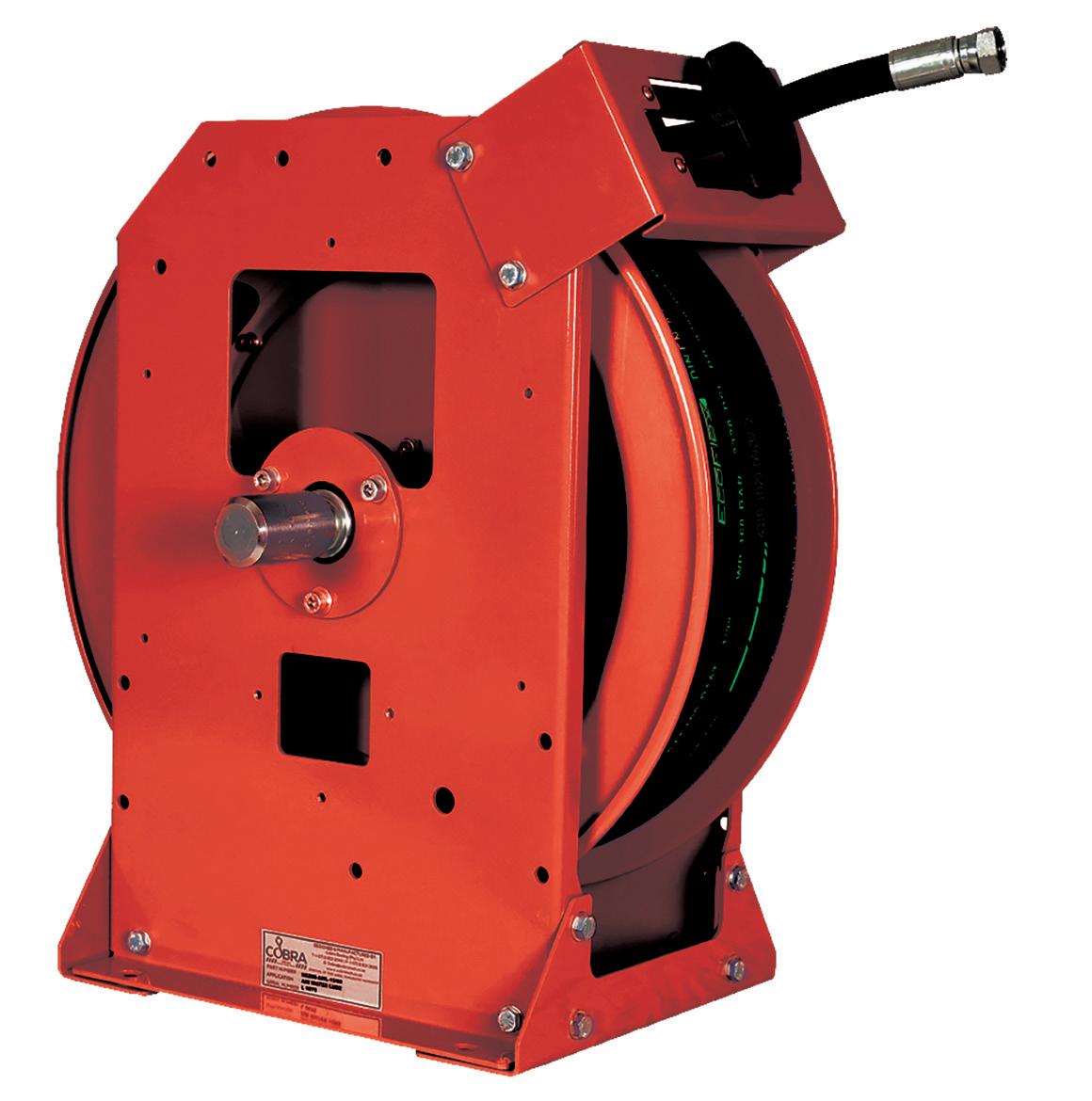
rate of 151L per minute and maximum flow rate of 682L per minute.
Able to latch with 10 stainless steel balls, FNBL’s pullback assembly is removable without tools, making it easy to clean, maintain and repair on-site.
While the FloMAX FN600 nozzle holds the same flow rate and weight as the FNBL, it works best in maintenance facilities and less demanding environments.
“The FN600 nozzle has latching dogs and the FNBL nozzle uses a ball lock design,” JSG said. “Both nozzles come with an optional ball-bearing 1.5-inch NPT swivel.
“An available plug is specially designed to seal out dirt and contaminants and is attached with a S/B 1/8-inch coated wire lanyard. A patented removable piston assembly allows the cylinder to be easily removed for rebuilding.”
FloMAX’s fuel nozzles can connect to all standard fuel receivers and be adapted to specific customer needs.
In addition, all FloMAX fuel receivers are designed with a patented enclosed poppet stem spring that provides a smooth fuel flow path, extending the life of the receiver and nozzle.
“This greatly enhances the life of both the receiver and fuel nozzle due to the decrease in fuel restriction and vibration,” JSG said.
“Our FR-RS fuel receivers also have a patented removable stainless steel wear sleeve. This innovative patented concept allows the fuel receiver wear surface to be replaced quickly and easily without removing the fuel receiver from the tank or incurring any fuel loss.”
COBRA HOSE REELS ARE ENGINEERED TO WITHSTAND TOUGH WORKING ENVIRONMENTS AND EXTREME CONDITIONS.
To further strengthen a mine’s fuelmanagement system, JSG offers the Cobra range of heavy-duty hose reels – designed with quality, durability and serviceability at the forefront.
Suitable for underground coal mining, the Cobra spring-rewind reel and hydraulic-rewind reel are built with a compact frame for spacelimiting installations.
The Cobra spring-rewind reel features a drive spring constructed from high carbon steel for strong hose retraction, while the Cobra hydraulic rewind reel boasts a high strength and rigid frame and drum. This reduces operator risks as less effort is required in extending or retracting large or long hoses.
The Cobra pneumatic-rewind reel has an epoxy powder coat finish and a right-angled gearbox for compact design and durability. A direct mount drive also helps avoid pinch points.
“The Cobra heavy-duty hose reel range is engineered to withstand harsh, hazardous and difficult working environments simultaneously,” JSG said.
“These conditions require the best quality hose reels, which must be designed to accommodate critical factors relevant to each application, such as dimensions, drive type or materials used.”
Efficient lubrication and fuel management is critical to underground mining operations maximising resource recovery.
Luckily, JSG has the product range to withstand challenging working conditions and ensure miners stay on top of productivity. AM
CORTEX SMARTDRILL’S MACHINE DATA PROVIDER IS BRINGING CRITICAL REAL-TIME INSIGHTS FROM BELOW THE SURFACE.

CORTEX SMARTDRILL’S MACHINE DATA PROVIDER COMBINES REAL-TIME REMOTE MONITORING, TELEMETRY AND ANALYTICS, AND LOCAL EDGE COMPUTING.

As underground mining continues to push deeper, the need for smarter and cost-effective solutions is ever more vital.
This is where Cortex Smartdrill, a leading telemetry data analytics provider, can help.
Western Australia-based with distributors nationwide and internationally, Cortex Smartdrill believes the key to efficient mining operations is harnessing real-time data in a seamless, reliable and affordable manner. Its Machine Data Provider (MDP) is a rugged, original equipment manufacturer (OEM)-agnostic telemetry and data acquisition system designed to capture, process and deliver high-value operational information from mobile mining equipment in real-time.
“It works by interfacing with OEMs’ machine control systems and sensors to collect data on performance, usage, health and operator inputs,” Cortex Smartdrill executive general manager Mike Lane told Australian Mining
“This data is then processed locally on the edge device and securely transmitted to cloud or site-based, user-configurable dashboards for use by production teams,
maintenance planners, data analysts and management, enabling faster, evidencebased decisions.”
Built with a modular design and plugand-play retrofit capability, the MDP was originally developed for surface drill rigs; however, the system can now be installed on any piece of underground equipment, including load haul dump trucks (LHDs), drill rigs, loaders, and service and utility vehicles – all without disrupting existing control systems or costly customisations.
“Retrofitting the MDP to underground equipment is remarkably straightforward,” Lane said.
“Installation typically takes less than a shift and does not require OEM intervention nor affect their warranty, making it ideal for operations looking to digitise their fleet without replacing equipment.”
When adapting the MDP for underground use, Cortex Smartdrill considered challenges such as limited and inconsistent connectivity, space constraints, and equipment vibration.
“The MDP addresses these challenges with compact industrial-grade hardware, compressed data files, intelligent storeand-forward logic for offline operation,




and a low-impact footprint for confined cabins,” Lane said. “It’s designed to withstand harsh underground conditions while maintaining full data logging and transmission capability, even in disconnected or meshnetwork environments.”
Using a store-and-forward mechanism to cache data locally until a wireless network connection is available, the MDP logs all machine activity, operator inputs and system alerts. It also includes optional machine video streaming.

“Once in a network node range, the system synchronises data automatically without human intervention, ensuring no data is lost and insights remain timely and actionable, even in highly segmented or intermittently connected underground zones,” Lane said.
The gathered data is accessible via secure dashboards tailored to maintenance crews, shift supervisors, operations managers, and head office analysts. The information can then be used to prepare and streamline
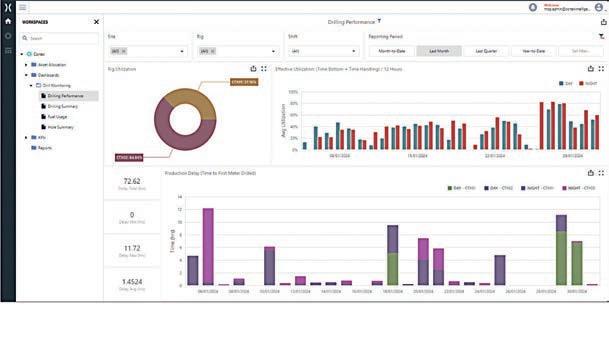
shift reports, service logs and safety reviews,and to schedule maintenance interventions before equipment failures take place.
This not only saves time and operating costs but increases productivity, reduces unplanned downtime, and enhances safety compliance and equipment life and scheduling.
“In a recent deployment, a client operating both surface and underground rigs used MDP data to identify excessive non-productive time, providing databacked evidence to trial and implement effective changes,” Lane said.
“If you can measure it, you can control it.
“By adjusting operator practices and rescheduling maintenance based on real machine hours rather than assumed usage, the site increased equipment availability by 11 per cent and reduced fuel costs by over $150,000 annually.
“The same dashboards also highlighted a training gap in one shift, leading to targeted coaching that improved performance within two weeks.
“Adjustments to processes and targeted operator training led to a five per cent throughput increase and over $150,000 in annual fuel savings.
“Maintenance intervals were also optimised, extending component life and reducing unplanned repairs.”
With several underground operations still relying on manual reporting, Lane

believes there’s a gap in scalable, retrofit user-friendly telemetry solutions that provide real operational insights across mixed OEM fleets.
“Many mines lack visibility into what their equipment is actually doing –especially in underground operations – and relying instead on assumptions or
delayed manual reporting,” Lane said.
“The MDP closes this gap by delivering real-time, machine-level visibility without requiring a full systems overhaul for all makes and models of plant on a single platform.
“As mining increasingly seeks low-cost digital transformation and automation-
readiness, the ability to deploy MDP across legacy and new equipment alike is a significant strategic advantage.”
Looking to the future, CORTEX Smartdrill is focused on expanding the MDP by including advanced modules for machine-learning-based predictive maintenance, precision tramming analytics, operator behaviour scoring, and dynamic shift benchmarking.
Also on the agenda is integration with ventilation-on-demand systems and energy optimisation tools, which is expected to help MDP users reduce their carbon footprint while maintaining productivity levels.
“We’re also developing plug-in capability for environmental and geotechnical sensors, enabling a unified view of machine health and ground conditions on a single platform,” Lane said.
“As the industry moves toward autonomous operations, CORTEX Smartdrill is ensuring the MDP becomes a foundational enabler by collecting, contextualising and acting on data at the source.
“Our vision is to provide underground mines with the same level of visibility, control and continuous improvement that our surface clients enjoy today – without the need to overhaul their fleets or infrastructure.” AM

• Up to 5,278m2 Light Coverage
• 420Wp solar panel
• Compact design
• Robust HardHat® canopy
•Mask down feature as standard
secure your stock today with our exclusive introductory offer!
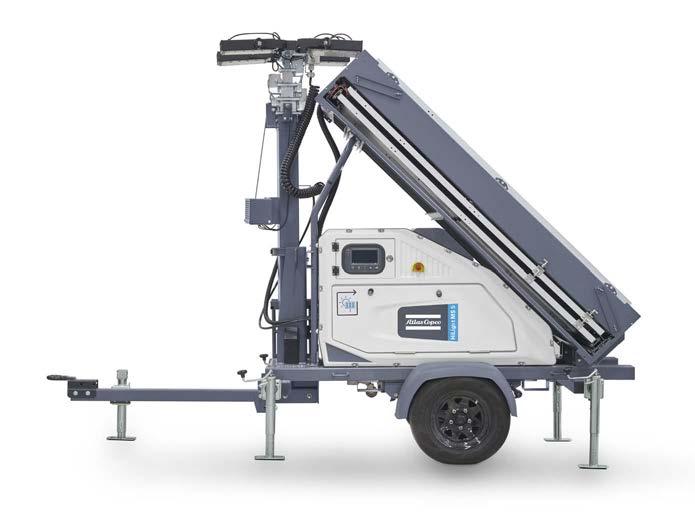



The best performing underground operations have confidence that they can push their equipment to the limits without unintended movement.
Recognising that unscheduled breakdowns are an operator’s worst nightmare, Timken’s PT Tech is making waves in the Australian market with its innovative enclosed wet brakes and torque-limiting clutches.
Since acquiring PT Tech in 2017, Timken has been broadening its reach beyond its heritage in bearings, delving deeper into underground mining technology. Timken national mining manager Mark Davies said the move has given the company exposure to critical underground equipment segments previously outside of its product range.
“PT Tech has been designing and developing brakes and clutches for the mining industry for over 25 years,” Davies told Australian Mining. “PT’s enclosed wet brake is considered one of the most reliable and high-performing braking solutions for underground mobile equipment globally.”
Central to the PT Tech portfolio is the A+ enclosed hydraulic brake, a product renowned in the industry as “the brake that lasts”.
Designed for continuous miners, shuttle cars, longwall shearers and more, the A+ brake offers a spring-set parking brake and a dynamic service brake in one compact unit.
“It’s not just about stopping power,” Davies said. “These brakes are engineered to meet the highest safety standards, especially in high-risk environments like coal mines.
“Being fully enclosed, they eliminate fire risks caused by heat and dust ingress – critical for explosive atmospheres underground.”
PT Tech’s through-shaft cooling technology increases brake survivability and durability and, according to the company, outperformed competitors in rigorous in-house testing.
With lower drag and less heat generation, the A+ brake is designed to enable greater productivity without compromising safety.
“We keep these brakes in stock and offer local servicing through our

authorised distributor network,” Davies said.
“We also have servicing capabilities in Sydney, which gives our customers nationwide support.”
What makes the A+ even more attractive for Australian mining operators is its interchangeability with competitor systems, allowing for straightforward integration into existing fleets.


Spare parts kits, including replacement discs, compression plates and wear indicators, are readily available.
Underground mining is no place for guesswork, especially when it comes to brakes. That’s why the A+ brake is designed to be tamper-proof, a feature Davies said is a critical differentiator.
“These brakes can’t be adjusted on-site,” he said. “They’re factory-set to meet OEM (original equipment manufacturer) specifications and once they wear out, they’re replaced or rebuilt entirely.
“That removes the risk of incorrect adjustment by maintenance crews, which can be a serious safety hazard.”
Fitted with the dynamic service brake, used when the vehicle is in motion, and the spring-loaded parking brake, the system ensures multiple layers of fail-safe stopping power.
For mine sites where narrow margins can separate routine operations from disaster, this assurance is worth its weight in gold.
PT Tech doesn’t just stop at brakes. The company also manufactures torque-limiting clutches (TLCs) such as its UJT-500 series, built for longwall machinery and continuous miners.
These clutches act like a mechanical fuse, disconnecting drive systems
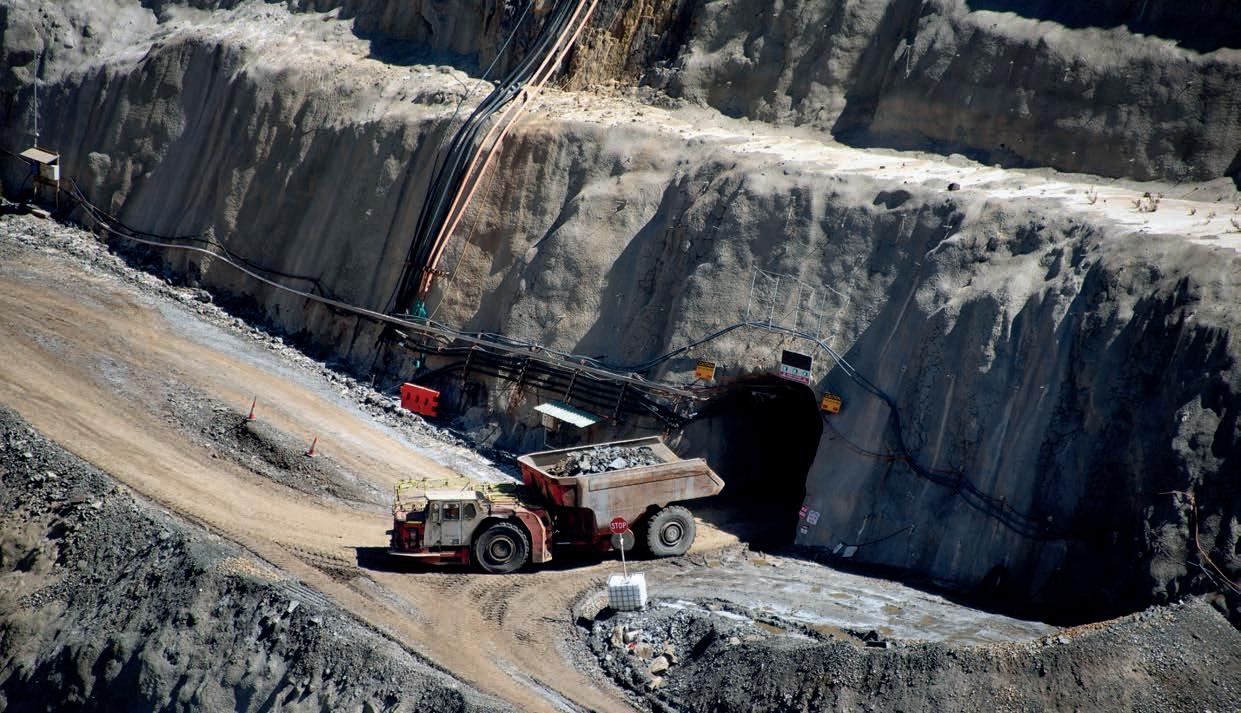

during overloads to help prevent damage and downtime.
“Imagine a continuous miner cutting through coal,” Davies said. “If it hits a rock seam, the torque spikes and the cutter head could stall or get damaged.
“The torque limiter absorbs that shock, disengaging the drive momentarily, then reconnecting once the load normalises.”
Unlike traditional shear pins or pressure-slip devices, the UJT-500 is continuously engaged, with no need for lubrication or adjustment throughout its lifecycle.
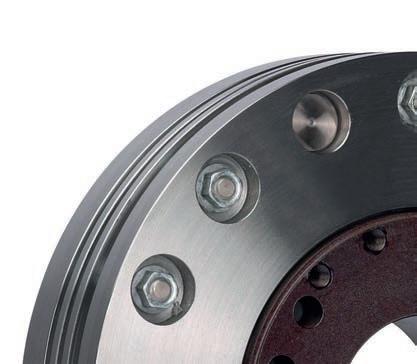
Its tamper-resistant torque settings are calibrated at the factory using colourcoded spring cup bolts, which eliminate the potential for on-site misconfiguration.
“You don’t need special equipment to check torque settings. Just count the bolts and match the colours,” Davies said. “It’s designed to simplify maintenance and eliminate human error.”
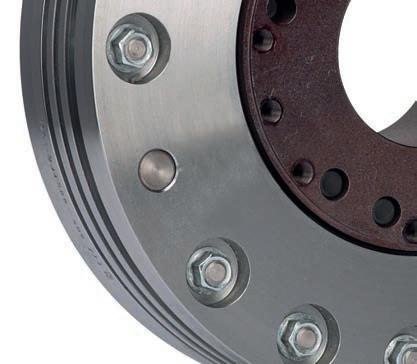
The UJT also features a graphited bronze bearing for permanent lubrication, a wear indicator for quick visual inspections and optional output configurations to match common driveshaft set-ups used in mining vehicles.

THE UJT FEATURES A GRAPHITED BRONZE BEARING FOR PERMANENT LUBRICATION.
While PT Tech’s technologies are widely embedded in North American mining operations, Timken is working


the full landscape of Australian underground mobile fleets, but the foundation is solid.
“We’re focused on promoting these products through our distributor network, backed by strong local support,” he said.
“Our goal is to provide both OEM and after-market customers with a comprehensive solution –not just a product but a reliable, supported system that improves both safety and efficiency.”

to increase their footprint across Australia. Davies said the company has more ground to cover in understanding
For an industry facing constant pressure to boost productivity while maintaining safety standards, PT Tech presents a compelling value proposition.
With decades of proven reliability and cutting-edge engineering, and a growing local support network, these solutions are poised to become fixtures in Australia’s underground mining scene.
“As Timken continues to diversify, it’s clear that we’re much more than a bearing company now,” Davies said.
“Our technical portfolio is growing, and PT Tech is a key part of that strategy, especially as we look to support Australia’s evolving mining sector.”
From the coal seams of central Queensland to the hard-rock mines of Western Australia, one thing is clear: Timken’s brakes and clutches are ready to take on the underground challenge. AM
















DISCOVER HOW MASPRO’S REDESIGNED CRADLE IS DOUBLING COMPONENT LIFE UNDERGROUND AND TRANSFORMING BOLTING PERFORMANCE ACROSS MINE SITES.
Equipment performance can mean the difference between sustained productivity and costly downtime, particularly in underground mining.
MASPRO’s redesigned bolting cradle and pipe assembly, part of the company’s growing Bolting Series, are becoming game-changing solutions for Australian and international operations alike.
MASPRO regional business development manager Roxanne Bekker recently spoke with Australian Mining about the journey behind the cradle’s redesign, its impact on underground performance, and how client feedback has driven measurable innovation across the product range.
The drive for redesigning the cradle stemmed from recurring concerns related to competitor products. Many underground miners operating Sandvik SB60 jumbos were experiencing premature failures in original equipment manufacturer (OEM) and after-market cradle components.
“Our clients weren’t running the OEM cradles as-is,” Bekker said. “They were welding on reinforcements prior to operation, which told us there was a real opportunity to offer something better, something engineered to perform from day one.”
Australian bolting operations call for robust components, and MASPRO found local miners were using jumbos for boring and bolting, the latter of which introduces significant extra stress on components that were never designed for that function. MASPRO’s solution was to build a cradle from the ground up, catering for bolting applications.
The company’s version one bolting cradle was a major step in addressing the issue. Manufactured using high-grade specialty steel with superior fatigue resistance, the cradle eliminated the need for custom welding and pre-use reinforcement.
“We saw double the life of the OEM equivalent without any welding or modifications,” Bekker said. “It was ready to bolt on and go.”
MASPRO then bundled commonly replaced components around the cradle into a complete assembly, including upgraded pipework and support plates, to streamline installation and reduce downtime even further.
But MASPRO didn’t stop there. The company continued gathering data from sites across Australia and abroad, even analysing failed cradles returned after use.
“We studied where the fatigue went, where it cracked, and what we could improve,” Bekker said.
This data-driven approach informed MASPRO’s version two bolting cradle, now available to the market, which features several structural improvements:
• Water drainage holes eliminated along the beam to reduce fatigue-prone weak points
• Weld repositioning in the clevis area to distribute stress more effectively
• Safety shoulder on the pivot shaft to prevent feed assembly drop-offs, addressing a known issue with competitor products.
Other additions, like a removable rear service cover and an over-centre valve mounted on a reinforced backing plate, serve to further enhance the assembly’s durability and ease of maintenance.

Bekker shared that efficiency gains and cost-of-ownership reductions have been consistently strong with version two.
“In some cases, we’ve seen over a 100 per cent improvement in fatigue life,” she said. “It all depends on how the client was using their previous product; whether it was an OEM, after-market, or rebuilt product.
“And when a part lasts twice as long, that means fewer change-outs, more time drilling, less freight, less procurement effort, and less carbon output. The ripple effects are massive.”
According to Bekker, the cradle’s value extends beyond the workshop. Productivity increases, maintenance efficiencies, and supply chain simplification all translate into bottomline results.
The cradle is part of MASPRO’s broader Bolting Series 2.0, which includes complementary components like inner and outer zoom assemblies, a bolting cylinder, and a bolting downhole power unit (DPU).
MASPRO’S BOLTING SERIES IS HELPING UNDERGROUND MINERS TAKE ADVANTAGE OF RELIABILITY.

Each product has been designed to withstand the unique stresses of Australian underground operations. For instance, the bolting cylinder now incorporates a self-aligning bearing set-up and corrosion-resistant specialty alloys, while the zoom assemblies feature precision welds and high-strength materials for fatiguecritical areas.
“The series represents our commitment to continuously refining products with direct input from clients,” Bekker said. “We’re engineering not just for performance, but for real-world site conditions.”
As the version two cradle rolls out to more sites, MASPRO remains committed to ongoing improvement.
“We’re always refining,” Bekker said. “Every bit of feedback goes back to our engineers. Whether it’s extending life, improving maintenance access or solving supply issues, our clients guide our priorities.”
Looking to the future, the newly released zoom assemblies are tipped to be the next standout innovation. Bekker believes they will provide the same return on investment and operational benefits already seen with the cradle.
“In a market where downtime is costly and efficiency is everything, we believe these upgrades make a real difference,” she said.
Reliability is currency in underground mining, and MASPRO’s Bolting Series is helping miners cash in. By listening to their customers and investing in purpose-built, fatigueresistant designs, MASPRO is showing how homegrown engineering can deliver global impact.
As the Bolting Series continues to evolve, one thing is clear: when it comes to performance at the face, MASPRO is just getting started. AM
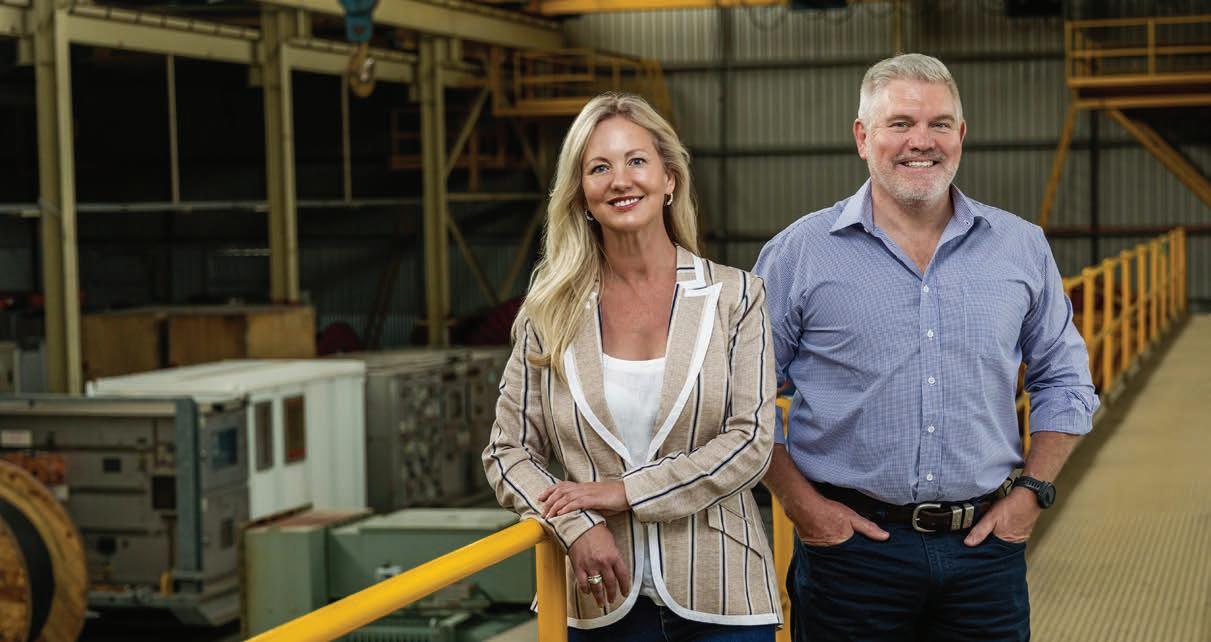
At Australian Power Equipment (APE), we deliver more than high-voltage power solutions – we deliver peace of mind. From brand-new transformers to expertly refurbished equipment, we help industries stay switched on with smarter, faster, and more sustainable options.
Our circular economy model means we don’t just supply power—we give old equipment new life. By refurbishing quality assets from decommissioned sites, we minimise waste, reduce lead times, and keep urgent projects moving. It’s better for business and better for the planet.
But our commitment doesn’t stop there. We actively support wildlife conservation and rewilding efforts across Australia –because powering progress should never come at the cost of our environment.
With a nationwide network and a lean, responsive team, APE sources and delivers critical equipment when and where it’s needed most. Whether it’s mining, infrastructure, or renewables, our clients trust us to keep operations running and downtime to a minimum.
Backed by decades of experience and a clear vision for the future, we’re proud to be shaping a more sustainable tomorrow.
AGENTS FOR






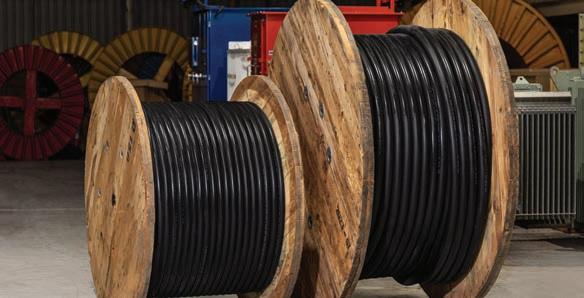

IT MIGHT ONLY BE A FEW MONTHS OLD, BUT ATLAS COPCO’S NEW X AIR 410 PORTABLE AIR COMPRESSOR HAS ALREADY MADE A SPLASH.
For decades, Atlas Copco has been a leading provider of portable air compressors designed to withstand tough conditions across a variety of industries.
Now joining the Atlas Copco range is the new X Air 410 portable air compressor, which has been built for applications including construction, mining, drilling, abrasive blasting and site dewatering, to name a few.
The leading feature of the X Air 410 is its PACE technology.
PACE – pressure adjusted through cognitive electronics – is an electronic pressure-regulation system that allows users to easily tailor working pressure to specific requirements in three simple steps.
The X Air 410 has a working pressure range of 73–174 pounds per square inch (psi) and a free air delivery range from 12.5m³ per minute at five bar to 10m³ per minute at 12 bar, paving the way for several pressure and flow combinations to take place.
By fine-tuning the working pressure, the X Air 410 is able to increase productivity by delivering more flow at lower pressures.
PACE is built with a user-friendly system to help ensure accuracy, safety and long-term performance, and encompasses the versatility of multiple machines and pneumatic tools in one platform.
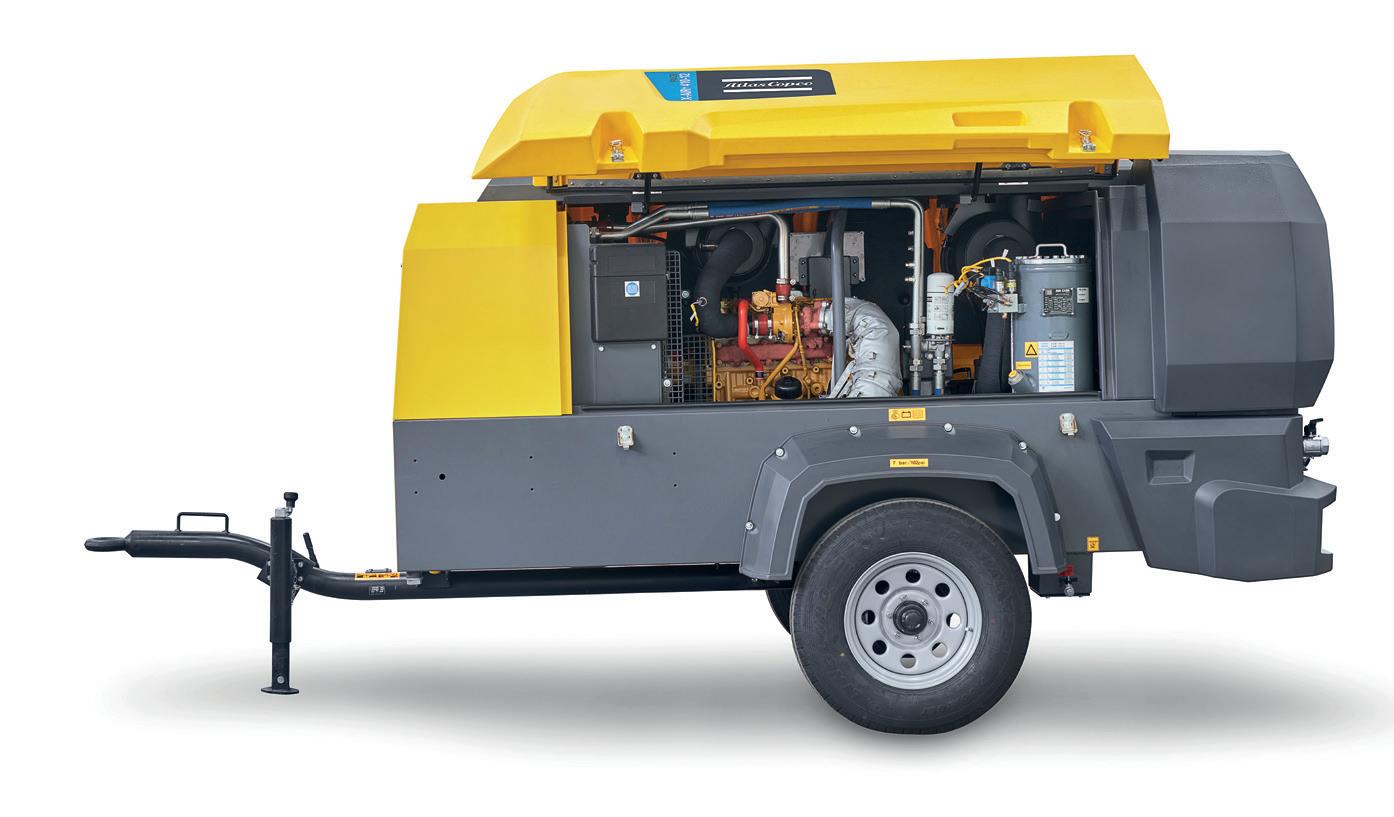
Fuel efficiency was also at the front of Atlas Copco’s mind when designing the X Air 410. Equipped with a Caterpillar engine that meets EU Stage IIIA standards, the unit features an intelligent ECO-Mode.
When an application has extended periods without air demand, the X Air 410 switches to the unload mode. When the ECO-Mode is activated, the portable compressor automatically transitions from unload to no-load.
Once operations resume, an air discharge pressure sensor detects the renewed air demand for a different application, and the controller automatically reactivates re-load of the compressor.
By switching from unload to no-load when there is no air demand, users can cut their fuel consumption by up to 50 per cent – an especially welcome benefit as the mining industry aims to reduce emissions. As robust as the X Air 410 is on the inside, its exterior is just as tough.
WHEN THE X AIR 410 ACTIVATES ECO-MODE, THE COMPRESSOR AUTOMATICALLY TRANSITIONS FROM UNLOAD TO NO-LOAD, INCREASING FUEL EFFICIENCY.
The portable compressor features a lightweight and corrosion-resistant HardHat polyethylene canopy, which is designed to guarantee protection.
In addition, Atlas Copco applies three layers of C3 corrosion-resistant paint to the metals parts of the canopy to ensure the entire structure can withstand the often-harsh conditions of the Australian mining industry and have a long operating life.
Designed with easily accessible service points, the patented oil separator vessel fitted to the X Air 410 is intended to save time and money on maintenance.
The oil separator element can be replaced in just 30 minutes without disconnecting any pneumatic lines. The 110-per-cent-spillage-free frame contains 110 per cent of the machine’s whole fluids, preventing pollution from being omitted into the atmosphere.
The introduction of the X Air 410 follows the recent debut of the B-Air 185-12, which is said to have been the world’s first mobile screw compressor powered by a battery.
Also featuring PACE technology, the B-Air 185-12 allows electronic pressure regulation from 72–175psi and free air delivery up to 5.3m³ per minute.
For Australian mining operations that are looking for reliable portable air compressors with a low-cost of ownership, Atlas Copco has an answer.
And with Atlas CEA – Atlas Copco’s Australian distributor for compressors, light towers and generators – as well as its five major service centres staffed with fully trained service and parts specialists –and issues that arise can be swiftly and effectively eliminated. AM

FITTED WITH PACE TECHNOLOGY, THE X AIR 410 CAN MEET THE DEMANDS OF MULTIPLE FIXEDPRESSURE
WA MINING WILL SHOWCASE THE INNOVATIONS SHAPING THE INDUSTRY’S FUTURE.

TAKING PLACE IN PERTH IN OCTOBER, WA MINING WILL SHOWCASE THE FUTURE OF AUSTRALIAN RESOURCES SOLUTIONS.
Western Australia’s mining industry has long been a powerhouse, driving a significant share of the nation’s resources output and setting the pace for technological advancement across the sector.
This October will see the spotlight shining brightly on Perth for the WA Mining Conference and Exhibition (WA Mining), a twoday event that offers an unparalleled look at the innovations shaping the industry’s future. Trade exhibitions have always been fertile ground for connection, collaboration and discovery, and WA Mining continues that tradition.
The event will bring together suppliers, contractors and operators from across the resources spectrum – iron ore, gold, lithium, nickel, bauxite and more.
More than just a marketplace for products, the exhibition will be a live showcase of ideas in action.
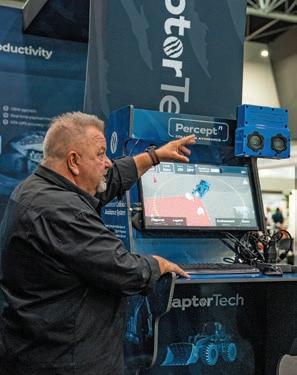
From dust control and spillage management to advanced automation and data analytics, WA Mining puts solutions in front of the people who can make put them into action.
The event’s hands-on environment allows mining professionals to see, touch and test the latest tools and technologies – a critical advantage in an industry where real-world performance matters as much as specs on a spreadsheet.
A major theme for the 2025 event is future-focused innovation. The mining sector is evolving at pace, driven by sustainability targets, productivity pressures and the shift toward new energy materials. WA Mining provides a forum where these pressures translate into tangible, workable solutions.
The paid conference program will explore how operations can adapt to meet environmental goals, improve efficiency and boost safety – often at the same time. Attendees can expect to see emerging technologies that reimagine traditional processes, from smarter material handling systems to
autonomous equipment designed to reduce downtime and risk.
Connecting across the industry
One of the defining strengths of WA Mining is the diversity of its audience. Key decision-makers, engineers, site supervisors and frontline workers all walk the floor, creating an environment where ideas flow from the boardroom to the pit and back.
The event is a rare opportunity for solution providers to speak directly to the people who will use their innovations day-to-day. And it allows attendees a chance to influence the products and systems on which they will rely in the years ahead.
The result is a collaborative energy that bridges the gap between concept and implementation.
Perth’s role as a gateway to the Pilbara, the Goldfields and emerging critical minerals projects makes it an ideal host city.
Western Australia is home to some of the world’s largest and most

complex mining operations, offering an unmatched testing ground for new technologies. The state’s mining diversity means solutions must work across different commodities, climates and operational challenges, a reality that ensures emerging innovations have wideranging applicability.
But while WA Mining has a clear regional focus, its influence extends across Australia and into the broader Asia-Pacific mining landscape. The technologies unveiled and partnerships formed in Perth often ripple outward, influencing projects and procurement decisions well beyond WA’s borders.
For companies with growth ambitions, participation can be a springboard to broader recognition and expansion. For attendees, it’s a concentrated opportunity to see what’s possible – and to imagine what’s next.
The value of WA Mining lies in its ability to turn abstract industry trends into tangible experiences. Sustainability isn’t just a buzzword when you can see a new dust suppression system in operation; automation becomes real when you can watch equipment respond in real-time to simulated conditions.
In a sector where efficiency, safety and environmental performance are non-negotiable, WA Mining offers a direct line to the tools and ideas that will define the next generation of mining. When the doors open in October, WA Mining 2025 will once again prove that the future of the industry is not only being imagined – it’s being engineered, demonstrated and refined in Western Australia. AM
WA Mining will be held at the Perth Convention and Exhibition Centre from October 8–9. For more info, visit waminingexpo.com.au/getinvolved
































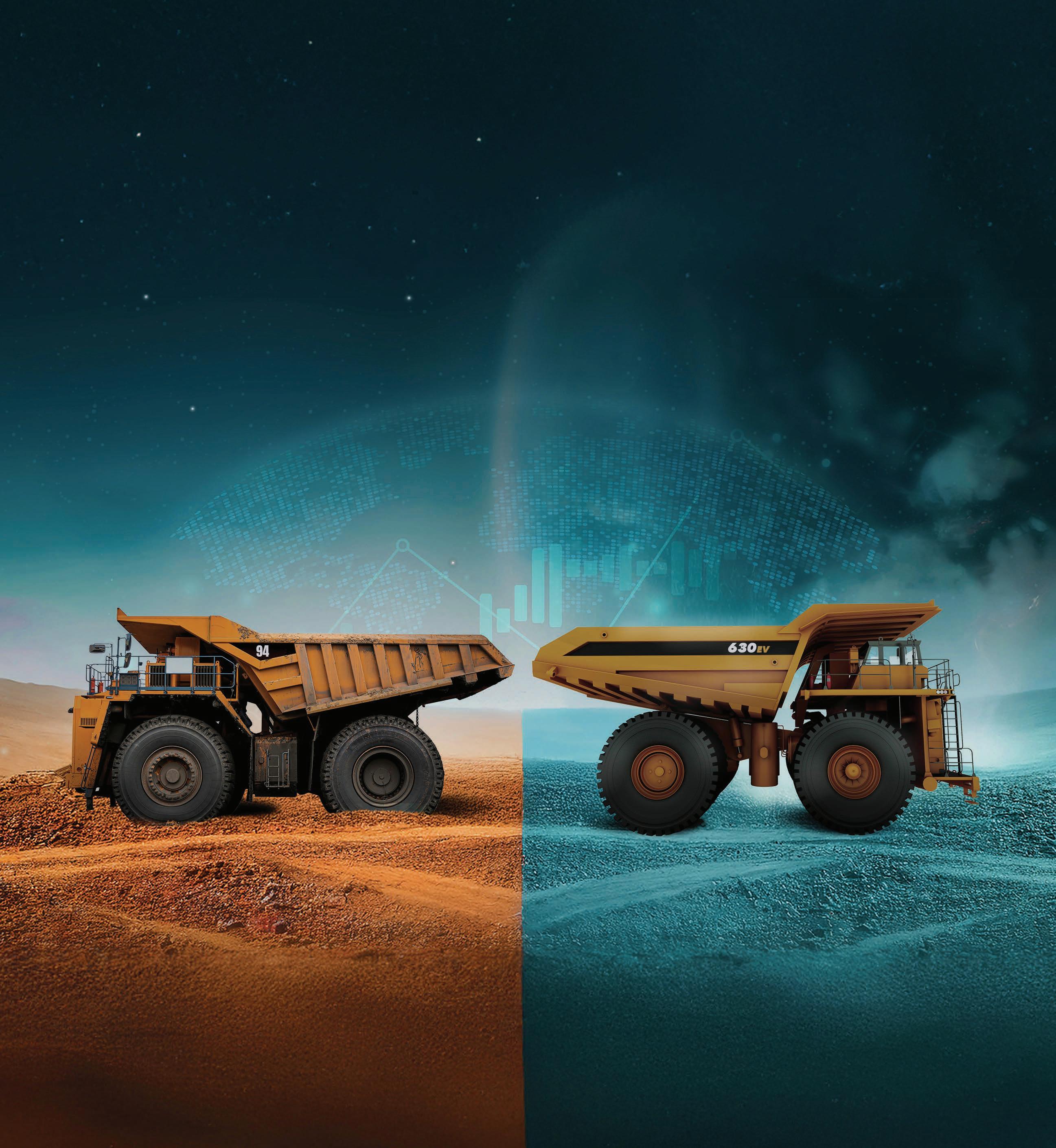
FOLLOWING A RECORD-BREAKING ATTENDANCE IN 2024, QME IS POISED TO LIVE UP TO ITS REPUTATION AS AUSTRALIA’S LARGEST REGIONAL MINING EVENT WHEN IT RETURNS IN 2026.
Now fully integrated under the Prime Creative Media banner, the Queensland Mining and Engineering Exhibition (QME) 2026 is gearing up to be the go-to destination to witness supplier innovation and the world-class capabilities of the state’s mining industry.
To be held at the Mackay Showgrounds from July 21–23, QME 2026 will comprise an expansive exhibition, live demonstrations, and curated networking opportunities.
When discussing how QME has maintained its position as the largest regional mining event in Australia, Prime Creative Media marketing manager – mining events Rebecca Todesco said its success comes down to the strength and industry pride it represents.
“It’s where the entire sector comes together – from operators to innovators – to connect, collaborate and showcase what’s next,” Todesco said.
“There’s a certain energy when the industry gathers in one place for QME that comes from shared challenges, bold ideas and a collective drive to lead the way forward.”
Making its return for 2026 is the free-to-attend seminar series, which is expected to provide direct benefit to several mining functions.
“QME’s free-to-attend seminar series will feature industry experts addressing the current needs of the industry and offer insight on the latest issues most important to the mining sector in Queensland,” Todesco said.
“We’ll be working closely with our industry partners and tapping into the editorial strength of our leading publications to bring together an insightful, impactful conference.”
QME 2026 is looking to bring in more exhibitors, broader content and increased initiatives for industry connection, including networking opportunities for delegates.
“We’re engaging with attendees, exhibitors and the industry to understand what makes QME so valued,” Todesco said.
“The focus for 2026 is on keeping everything people know and love about the event but pushing it further. That means refining the experience, enhancing the content, and creating more meaningful opportunities to connect.
“Attendees and exhibitors of QME 2026 can expect the kind of networking

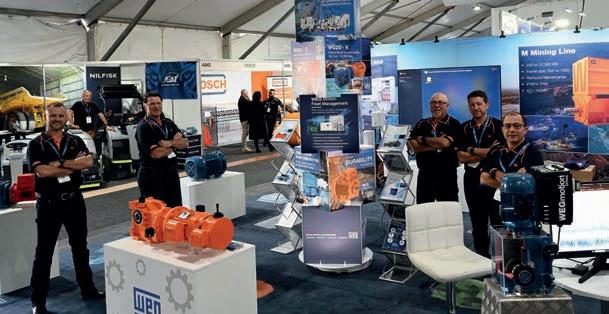

people know, love and have come to rely on, and the energy that only happens when the right people are in the same place at the same time.
“The 2026 event will take that to the next level.”
Following a successful rebooking phase, QME 2026 is officially open to the industry.
“QME gives companies and organisations the opportunity to raise their profile in the Queensland mining industry by facilitating face-to-face engagement with existing and potential customers,” Todesco said.
“Exhibiting at QME will put their business in front of thousands of leading mining professionals looking for the latest products and solutions.”
QME 2026 has also received significant industry backing, with the Queensland Resources Council
(QRC) returning as an official association partner.
Known as a leading voice for the state’s resources sector, QRC will use QME 2026 as a platform to advocate for a sustainable regulatory environment and promote excellence in health, safety, environmental performance, diversity and industry leadership.
It will also use the event to highlight the major contributions the resources sector makes to the Mackay and the central Queensland economy.
“QME is now a major event on the Queensland resources calendar and, as the industry’s peak body, QRC is proud to be involved as the official association partner,” QRC chief executive officer Janette Hewson said.
“The exhibition also takes the resources sector to the wider public and shares the innovation and world best
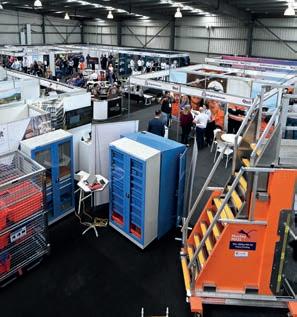
practices that are homegrown in the Queensland resources sector.
“QRC encourages industry members to get behind this event which is being held in the heart of one of Queensland’s powerhouse resources regions.”
QRC will have a presence at the QME 2026 exhibition floor, and Hewson will participate in the event’s conference program by delivering a keynote address.
“I am looking forward to QRC playing a part in QME 2026, showcasing what’s best about our sector and the opportunities we have to secure a strong future for the industry as global demand continues for all of our commodities,” Hewson said. AM
QME 2026 takes place in Mackay from July 21–23. Visit queenslandminingexpo.com. au/get-involved to take part in the event.

AUSTRALIAN MINING SPOTLIGHTS TWO ASX-LISTED COMPANIES WORKING TO OVERCOME CHINA’S DOMINANCE IN THE GLOBAL RARE EARTHS MARKET.
China has long been the world’s largest producer of rare earths.
It has held that position with strategic investments and government policies, as well as low-cost labour, less stringent environmental standards, and export controls – the latter of which is becoming increasingly prominent.
In April, China added seven rare earths – samarium, gadolinium, terbium, dysprosium, lutetium, scandium and yttrium – to its export control list in response to US tariffs. Other commodities on the list include tungsten, lithium and gallium.
The export control list refers to a list of goods, technologies and other items that are subject to China’s export restrictions in place to safeguard the country’s national security and military presence.
The list is part of China’s broader export control system, which includes regulations for dual-use items that came into effect in December 2024,
and specific controls for military products, nuclear products, and other sensitive technologies.
With demand for rare earths projected to double by 2050, several mines are looking to get off the ground and build resilient and independent ex-China supply chains.
Australian Mining shines a light on two ASX-listed rare-earths companies looking to make a splash.
Located approximately 6km north of Cue in Western Australia, Victory Metals’ North Stanmore heavy rare earths project is one of the world’s most advanced clay-hosted projects.
“Other rare earths projects in Australia typically comprise hard rock or mineral sands,” Victory chief executive officer (CEO) and executive director Brendan Clark told Australian Mining.
“These projects require a lot of capital because the processing phase is complex and resource-intensive.
“With North Stanmore, mother nature has done all the hard work for us, dating back around 45 million years ago. The clay-hosted mineralisation system has broken down naturally over time, providing easier access to valuable rare earth elements.”
North Stanmore bypasses traditional mining stages and instead uses a lowcost leaching technique requiring no additional processing stages.
“We’ve got high ratios of heavy rare earths, which are in high demand and provide strength to the magnets used in renewable batteries,” Clark said.
“Most of these rare earths come from clay-hosted projects in China, making our North Stanmore project an important diversifier globally.”
North Stanmore is near existing infrastructure, further saving costs.
“The Great Northern highway is the major arterial road connecting the Pilbara region to the Ports of Fremantle and Geraldton,” Clark said.
“We’re also located near a regional airport, enabling us to gain easy access

to a fly-in, fly-out workforce. If we didn’t have this, we would have to build our own runway along with major haul roads.”
It’s one thing to mine rare earths, but the ability to process the mineral is a different ball game.
Australian rare-earth products typically reach mixed rare earth carbonate (MREC) or mixed rare earth oxide (MREO) stages, the latter of which is the most advanced.
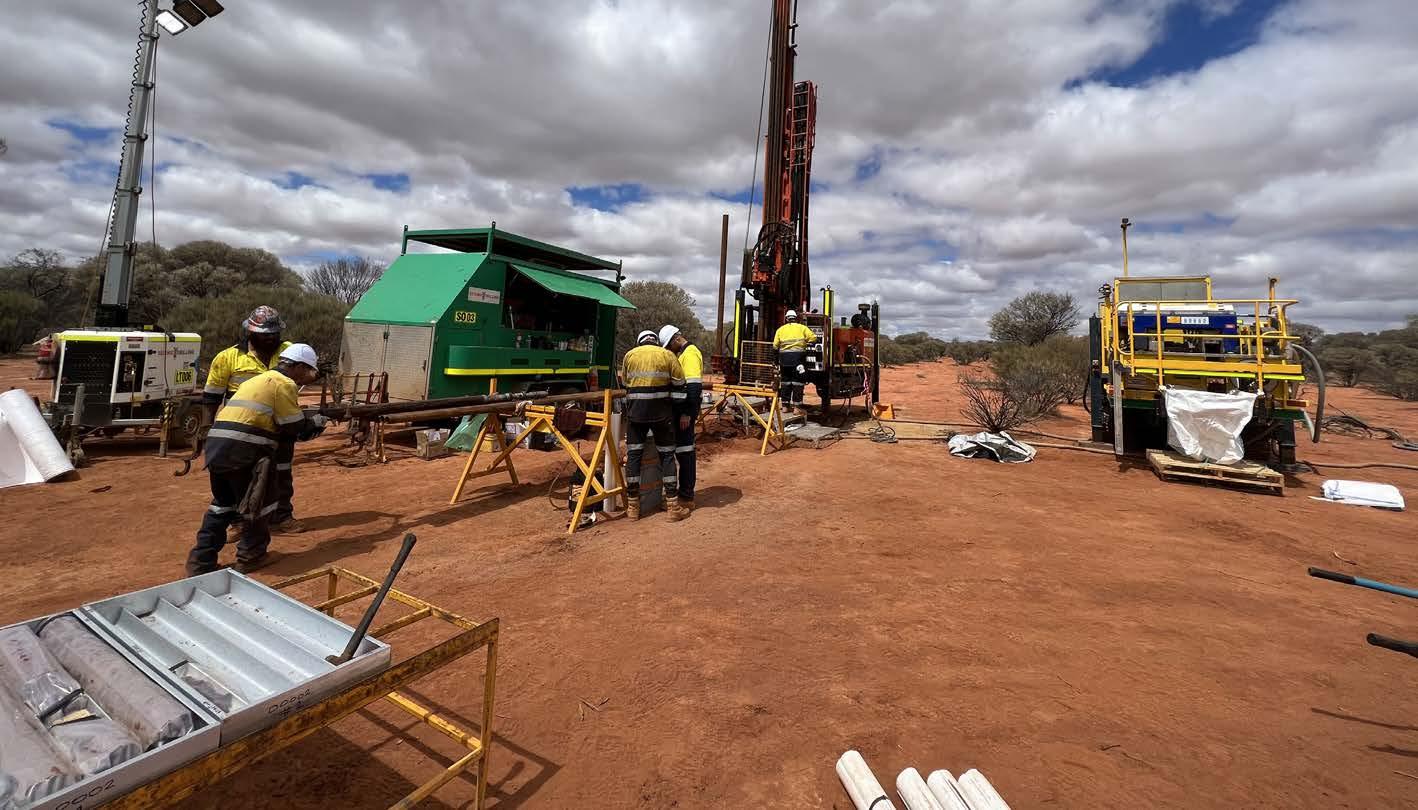


“The material then needs to be separated into individual rare earth elements,” Clark said. “This is where China is leading the way.
“Victory wants to provide a nonChinese source of rare earths across the supply chain. We’re looking to do that through separation options in France, Japan and the US.
“My long-term vision is to create our own dysprosium and terbium product in WA. I believe it’s possible.”
Victory signed a memorandum of understanding (MoU) with Japanese giant Sumitomo Corporation in December 2024 that could form the basis of a long-term offtake partnership for North Stanmore.
The aim is for Victory to provide 30 per cent of its annual MREC production from North Stanmore to Sumitomo.
“Our next phase with Sumitomo is to enter into a binding offtake agreement … and use that opportunity to fund North Stanmore and provide a pathway to development,” Clark said.
With China accounting for 70 per cent of global rare earth ore extraction and 90 per cent of rare earth ore processing, Clark believes the time is right for Australia to rise to the occasion.
“Australia needs to advance its technical downstream processing expertise so in 10 to 15 years we won’t be relying on anyone,” Clark said. “But this isn’t going to happen overnight.
“We need to partner with the likes of France, Japan and US in the meanwhile, who are pouring investment into downstream processing.
“At the moment, we need to understand our strengths, and that is mining and we are very good at it, produce a product and let them do the rest.”

Recent years have seen Enova Mining unlock several critical minerals discoveries in the Minas Gerais and Sāo Paulo regions of Brazil.
The company is led by CEO and executive director Eric Vesel, a qualified mining engineer with almost 40 years of experience.
“Our team brings a unique combination of multi-disciplinary experience and capabilities necessary to take exploration properties to production,” Vesel told Australian Mining
“Our small but exceptional team of professionals understand both the technical and commercial aspects of mining and the rare earths sector.
“ This includes downstream knowledge such as what products can be produced, and what is required to achieve it.”
Enova owns around 80,000 hectares of prospective tenements in Minas Gerais, including the Coda rare earths project.
Described as “world-class”, Coda comprises 15,000 hectares and is situated near power sources and infrastructure.
“Our 2024 maiden drilling program (at Coda) intersected thick horizons of saprolite-hosted mineralisation over an area exceeding 40km², with elevated grades of titanium, rare earths, niobium and scandium,” Vesel said.
“Metallurgical test work is currently underway (and) results will determine the most economic development pathway.”
Enova’s most recent discovery in Minas Gerais is the East Salinas project, which has exceeded the company’s expectations in terms of scale and simplicity, sitting at 22,719 hectares.
“The project originated from hyperspectral targeting lithium pegmatites,” Vesel said.
“Field reconnaissance revealed granitic outcrops with grades of 1.33 per cent to 1.87 per cent TREO (total rare earth oxide) across the Bald Hill and Naked Hill targets. A third hill nearby returned 1.59 per cent TREO.
“In total, the system could strike 4km and be 600m wide.
“The mineralisation is characterised by NdPr (neodymium and praseodymium) up to 38.8 per cent, HREO (heavy rare earths elements) of more than nine per cent, and high ytterbium content.”
Amid global trading instability, East Salinas and Coda offer immediate opportunities in building a non-Chinese rare-earths supply chain.
“While early stage, the simplicity of East Salinas’ mineralogy and potential for gravity separation could allow us to move quickly into concentrate production,” Vesel said.
“Coda also offers a potential pathway. Metallurgical studies are focused on beneficiation and leaching, which may yield a mixed carbonate or oxide product suitable for sale.”
Enova chairman and non-executive director Dato’ Sia Hok Kiang is also the managing director of Malaco Mining Sdn Bhd, providing Enova with downstream refining access.
“In November 2024, Malaco Mining built a pilot rare-earth separation plant in Perak, Malaysia, to process rare earth carbonates and oxides to high-value product groups,” Vesel said.
“Malaco recently signed an MoU with POSCO of Korea and Carester of France for downstream rare earths processing in Perak. The company’s separation facilities and modular IAC (ionic absorption clay) extraction technology is unique with several worldwide patents. Enova is in the box seat to use this technology.”
Vesel said the biggest challenge countries are facing in building critical minerals supply chains is a limited understanding in the factors needed to reach production, including commercialisation and technical capability.
“Outside China, very few companies can separate rare earths to high purity,” he said. “Even those that do often send their material back to China for final processing.
“China has suppressed global prices to maintain control of the market, but these prices aren’t reflective of what end-users pay at volume. The only way to break this dependence is to build the full supply chain from mining through to separation.”
And this is where Victory and Enova are well-placed.
With access to rare-earth separation technology and infrastructure independent of China, the companies are each in a in good position to drive innovation and achieve greater supply chain control. AM
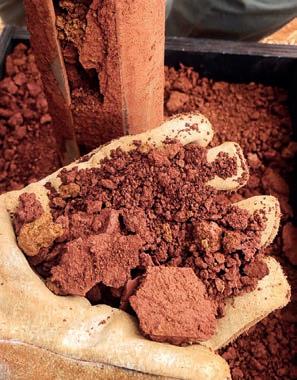
WITH A NEW PROCESSING FACILITY SET COME ONLINE IN WA, INDUSTRY LEADERS ARE OPTIMISTIC ABOUT VANADIUM’S FUTURE IN AUSTRALIA.
When the Western Australian Planning Commission recently granted approval for Australian Vanadium’s Tenindewa processing facility, it represented a critical step in the company’s ambition to build a fully integrated, homegrown vanadium value chain within the state. The approval of the
Tenindewa facility, located around 65km east of Geraldton in the midwest region of Western Australia, follows a favourable assessment from the Significant Development Assessment Unit and aligns with the Federal Government’s Critical Minerals Strategy and the Future Made in Australia plan.
This development paves the way for one of the first fully integrated vanadium value chains in Australia, extending from mine to battery electrolyte production.
AUSTRALIA HOLDS THE LARGEST SHARE OF ECONOMIC DEMONSTRATED VANADIUM RESOURCES IN THE WORLD.
A transition metal known for its durability, strength and corrosion resistance, vanadium appears as a soft, silvery-grey element that is rarely found in pure form, but rather more often extracted in compounds from minerals like vanadinite.
About 80 per cent of the vanadium produced around the world is used as an additive to steel, significantly enhancing its strength and resistance to shock
and vibration. Such alloys are found in critical industrial components such as piston rods, tools, axles and even nuclear reactor structures thanks to vanadium’s low neutron absorption.
Beyond metallurgy, vanadium compounds serve as catalysts in producing sulfuric acid, pigments in glass and ceramics, and key components in superconducting magnets.
The element has more recently gained attention for its role in vanadium

redox flow batteries (VRFBs). In these batteries, vanadium serves as the electrolyte and, unlike lithium-ion systems, the batteries can be cycled repeatedly without degradation.
They are non-flammable, have an operational life in excess of 20 years, allow for rapid energy release, and can be expanded by installing larger electrolyte tanks. This makes them well-suited to renewable energy grids, electric vehicle (EV) charging infrastructure, and remote power systems.
Their scalability and durability make VRFBs a powerful addition to Australia’s energy landscape.
Australia holds the largest share of economic demonstrated vanadium

resources in the world, primarily across Queensland and Western Australia, accounting for close to half of the world’s known deposits. Government data shows a 10 per cent growth in resources of critical battery minerals (including vanadium) in recent years.
Against this resource strength, Australian Vanadium’s bankable feasibility study confirms its project could become a globally significant primary vanadium producer.
Supported by a substantial $49 million grant from the Federal Government’s Modern Manufacturing Initiative, Australian Vanadium is advancing with a “pit-to-battery” model that includes integrated mining near Gabanintha, processing at Tenindewa, and electrolyte production for batteries.
In Queensland, the Vecco Group is developing the Julia Creek vanadium project with plans to start operations by 2027. Anticipated to generate more than 2000 jobs and tens of billions of dollars in economic output, the project will produce vanadium concentrate and battery-grade electrolyte in Townsville.
The expected demand for vanadium electrolytes is growing rapidly globally and is projected to increase eightfold by 2050. The Queensland Government is actively supporting this expansion with critical mineral zone funding and regional infrastructure upgrades that include transmission lines.
The Future Made in Australia package has introduced tax incentives covering 10 per cent of production
However, the vanadium sector is not without its challenges.
In northern Queensland, for example, the industry is grappling with a shortage of skilled labour. According to CSIRO senior researcher Dr Chris Vernon, transitioning coal miners to vanadium roles is a complex process due to the technical nature of the operations.
“When you come down to things like critical minerals, you’re talking about something that’s at a far smaller scale,” he said in 2022. “There’s a lot more technical expertise required.”
To help overcome this issue, the Queensland Government has launched a $3 million workforce development program to boost technical skills in the critical minerals sector.
That said, industry leaders still remain optimistic about vanadium’s future in Australia.
Australian Vanadium chief executive officer Graham Arvidson described the Tenindewa approval as a milestone for establishing a homegrown vanadium supply chain delivering long-term economic and social benefits to regional Western Australia.
“The Tenindewa processing facility will bring long-term economic and social benefits to the mid-west, including job creation, regional investment and new opportunities across the critical minerals and renewable energy sectors,” he said.
“We sincerely thank the WAPC [Western Australian Planning Commission], SDAU [Significant Development Assessment Unit] and all stakeholders who contributed thoughtful feedback during the application process.”
Vecco Group managing director Tom Northcott emphasised his belief that establishing an onshore vanadium industry will attract investment, support local manufacturing, and serve growing demand from battery producers in Australia and overseas.
THE EXPECTED DEMAND FOR VANADIUM ELECTROLYTES IS GROWING RAPIDLY GLOBALLY.
“Vecco Group’s vanadium battery manufacturing facility is the first in Australia and joins a growing list of plants being constructed and operated around the world [including] the USA, Europe, Japan, China and Korea,” he said.
“The world-class vanadium resources and government-owned energy businesses puts Queensland in an enviable position, creating a local and secure battery supply chain to support the energy transition.
“Our Vecco vanadium battery electrolyte manufacturing plant currently in operation in Townsville was the first in Australia. Our expansion with the planned second facility will significantly increase output.”
“There is significant demand for our vanadium battery electrolyte product from Queensland mined vanadium. By establishing a vanadium industry here in Queensland, multiple mines and battery manufacturing facilities can be supported, enabling export opportunities for locally manufactured vanadium and the battery electrolyte.”
Vecco’s next steps include completing feasibility and environmental assessments, securing finance, and preparing for construction, while Australian Vanadium moves into detailed engineering for its Tenindewa processing plant.
With a strong resource base, supportive government policies, and the strategic requirement to power energy storage for a greener grid, vanadium mining and manufacturing in Australia is gearing up to become a powerful driver of economic growth.
Companies like Australian Vanadium and Vecco are helping to out the country in a position to capitalise on global the energy transition, helping to ensure that something as technical and elemental as vanadium will help shape a clean energy future. AM
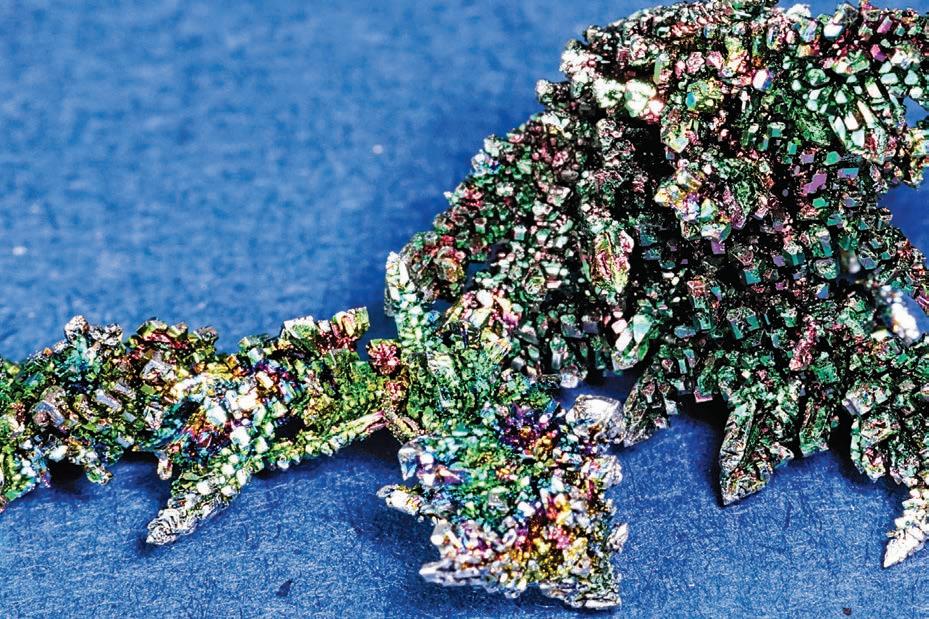
LIEBHERR IS COMMITTED TO WORKING WITH MINERS LIKE GLENCORE TO GROW THE AUSTRALIAN MINING INDUSTRY.
Liebherr-Australia has strengthened its position in the mining sector with three significant site entries under new multi-year agreements with Glencore.
In Queensland, Liebherr commissioned its first-ever excavators at Glencore’s Hail Creek coal mine in the Bowen Basin, with two R 9600s delivered in 2025, and one in 2026. Liebherr is also contracted to commission two R 9600s at Glencore’s Rolleston coal mine in 2026.
In New South Wales, Liebherr commenced operations at Glencore’s Ravensworth site with the delivery of a R 9400, R 9600 and R 9800 in late 2024 and mid 2025. These were also the first Liebherr machines to be commissioned at the site.
Liebherr-Australia has also consolidated its position by securing additional equipment at Glencore sites
where they are already an incumbent. In New South Wales, Glencore’s United Wambo site has welcomed another R 9600 and R 9400 in 2025 and the Bulga site is welcoming three R 9600s and one R 9400 in the second half of 2025.
These deployments are among the first of 17 Liebherr excavators confirmed for delivery across six Glencore operations in Queensland and New South Wales by the end of 2025, with further optional deliveries in 2026 and 2027.
The partnership is more than a fleet rollout; it signals a strategic evolution for both companies.
“By the latter part of this decade, we’ll be moving a significant portion of Glencore’s total material on-site across their Queensland and NSW operations,” Liebherr-Australia executive general manager of sales, marketing, training and solutions Brian Boitano told Australian Mining
“To be such a critical part of Glencore’s upstream supply to market is a significant endorsement of the work Liebherr-Australia does.”
This first phase of the national rollout includes 10 R 9600s, five R 9400s, one R 9100 and one R 9800, with each excavator supported by Liebherr’s dedicated service infrastructure.
“Assuring successful production at a Glencore site hinges on more than just machine delivery,” Boitano said.
“The commissioning process is one of the early pieces of our critical customer interactions with each site.
As the equipment begins it’s working life, Liebherr-Australia delivers further customer value in the form of the technical support we’ve embedded into Glencore’s operations.
“Our teams are integrated into their planning processes, component delivery schedules and shutdown planning.”

Across the Bowen Basin and Hunter Valley, Liebherr’s Mackay and Mount Thorley branches serve as operational hubs, providing Glencore sites with parts, maintenance teams, and critical shutdown planning capabilities.
“Our technicians and planners work directly with Glencore teams on-site,” Boitano said. “They’re the face of Liebherr-Australia, and their work is what keeps these machines running.
“Commissioning multiple machines over eight months marks a significant step forward in our first phase of this collaborative journey with Glencore,” Boitano said.
“We’re committed to supporting performance and reliability on-site through dedicated service and training delivered by our experienced local teams.”
Liebherr’s presence is also expanding in NSW with the help of its Mount Thorley branch.
Of the 17 machines, 12 will be delivered across Glencore’s Ravensworth, United Wambo, Bulga, and Mount Owen operations.
“There have already been important milestones in this partnership, like the first-ever Liebherr machine at Ravensworth and Hail Creek,” Boitano said.
“It validates Liebherr as a Tier 1 supplier with a product portfolio that outperforms our competitors.”
Glencore’s commitment to Liebherr for this multi-site rollout reflects its confidence in the OEM’s production performance and reliability.
Looking ahead, the relationship is set to deepen.
“We foresee this relationship evolving to include our full suite of solutions, including innovative forms of technology,” Boitano said.
“We’re already working together on machine performance prognostics and preventive maintenance strategies through data-sharing initiatives. That’s just the beginning.”
Beyond excavators, Liebherr looks forward to exploring other equipment classes, such as dozers and large mining trucks, and build upon the recent success with the current excavator fleet.
“These supply agreements provide a solid foundation for our partnership with Glencore to evolve,” Boitano said.
“We’re excited about the Liebherr fleet expanding, beyond phase one, into 2026 and 2027.”
For now, Liebherr is focused on delivering machines, embedding support teams and strengthening the systems that keep equipment running


BME’s AXXIS™ range – Silver, Titanium, and CEBS – delivers world-class electronic initiation trusted by mines across five continents.
Built for precision, safety, and sustainability, AXXIS™ empowers engineers and blasters to achieve consistent, high-performance blasts – even in the most demanding conditions.


• AXXIS™ Silver – Proven reliability for quarries and mid-sized mines.

• AXXIS™ Titanium – Advanced control with best-in-class safety and data capabilities.
• AXXIS™ CEBS – Centralised blasting with unmatched scale and efficiency.
With AXXIS™, you don’t just initiate blasts –you initiate progress.




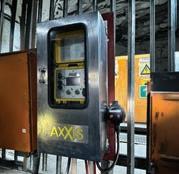



FLS IS RESHAPING ITS SERVICE MODEL IN AUSTRALIA AND SOUTH-EAST ASIA, BRINGING DECISION-MAKING CLOSER TO MINING OPERATIONS.




In an industry where unexpected downtime can cost millions, mining equipment suppliers are under constant pressure to deliver faster, more specialised service. Recognising that customer expectations are rising as market conditions evolve, FLSmidth (FLS) has overhauled its service business line structure – a move designed to bring decision-making closer to the customer and position the company for longterm growth.
FLS transitioned from four broad global regions to five more localised sales
and service areas, including the creation of Australia and Southeast Asia (ASEA) and Central Asia and India (CA&I) divisions.
The change means a dedicated head of sales and service for ASEA, with Kenny Don stepping into the role.
Don, who has been with FLS for more than 15 years, will relocate from Tucson, Arizona, to Australia. He joins a regional leadership team alongside head of pumps, cyclones and valves (PCV) Noel Raymond, and head of product business line John Coughlan.
“It’s about providing specialised value rather than a generalist approach,” Don told Australian Mining. “Each team works hand-in-hand so that no matter who customers call, we’ll get the right resources to them quickly – because we are all FLS.”
Mining markets across Australia and Southeast Asia are high-value and high-pressure. With a significant installed equipment base in the region, FLS saw the need for a structure that gives local customers a greater level of attention.
“In sales and service, we wanted to give Australia, Papua New Guinea and Southeast Asia more specialised focus,” Raymond said. “The previous structure was effective, but we knew we could be closer and more responsive if we redefined the boundaries.”
The company’s new customer-first operating model is central to this approach. Local account managers have been empowered to make realtime decisions, such as expediting parts or repairs, without waiting for senior approval.
“In the past, some of those calls could take weeks,” Coughlan said. “Now if we need to act to get a site back up and running, we can make that decision immediately.”
While the realignment is structural, the changes go deeper than reporting lines. FLS has reorganised its service operations around three global service groups – spare parts and modernisation, consumables, and a combined repair and field services group.
Each group now owns its profit and loss and is accountable for delivering results. For mining customers, this means technical expertise is concentrated into dedicated teams with clear ownership.
Repairs, for example, are now managed as a global network of 16 facilities under the service business line, 14 under PCV, and one managed regionally, all with centralised quality standards but local customisation.
Field services have also been integrated more closely with sales and service areas, helping to ensure customer engagement goes beyond parts supply.
“Our field experts can solve operational problems that boost

throughput and recovery,” Raymond said. “That’s far more valuable than just saving a few dollars on parts pricing.”
The changes are already taking form, with FLS opening a new service centre in the mining hub of Mackay, Queensland. The facility is designed to handle a broader range of equipment than the company’s previous, smaller locations in the region, including major rebuilds of gyratory crushers.
“Mackay will be key in supporting our customers on the north-east coast, including the Mount Isa region,” Don said. “The large warehousing capability means we can keep critical spares closer to where they’re needed, reducing lead times and downtime.”
FLS has hinted that Mackay could be just the start, with other potential service expansions on the map.
A notable part of the restructure is the creation of a lifecycle offering (LCO) function. This global team integrates solutions across the FLS mining product and service portfolio, including digital, to help customers improve productivity, reliability and sustainability across the full life of mine.
“Small improvements in recovery, even one per cent, can translate into millions of dollars of extra gold or copper each year,” Coughlan said.
“The lifecycle teams will analyse plant performance and provide clear actions to increase recovery and throughput.”
While the restructure is a proactive step, it comes at a time when suppliers across the mining sector are under pressure to do more with less. Labour shortages, supply chain constraints, and increasing environmental, social and governance (ESG) scrutiny are reshaping how service providers operate.
FLS acknowledges these challenges but sees them as opportunities.
“We know systems and programs are rarely perfect,” Don said. “But the key is to have people who can come together, make the right call for the customer, and get the job done either way.”
The company’s closer integration of teams is aimed at removing the siloed culture that can slow service delivery.
“We’re driving the mindset that our people and products should be on the customer’s doorstep quicker than ever before,” Raymond said.
For FLS, the transformation is as much about future-proofing as it is about today’s performance. By aligning technical expertise, decentralising decision-making, and leveraging global best practice, the company believes it can deliver sustained value in areas such as digitalisation, supply chain resilience and decarbonisation.
“We want to be a long-term partner for our customers,” Don said. “That means not just delivering high-quality solutions consistently but finding ways to improve their annual income by millions of dollars over the life of mine.”
As mining operations become more complex, and as customers demand faster, more tailored service – FLS’s new structure will be put to the test.
But if the leadership team’s vision is realised, it could mark a turning point in how the company delivers value across one of its most strategically important regions.
“Our customers choose to partner with us in their mineral processing endeavours,” Coughlan said. “We’ve designed this transformation with them in mind. If we succeed in that, the growth will follow.” AM
Western Australia is at the heart of a fresh wave of discovery and investment in the lithium sector.
New research led by the Geological Survey of Western Australia (GSWA), alongside Curtin University and the University of Western Australia, has revealed how high-grade lithium deposits form in the state’s ancient rock formations – findings that could reshape global exploration strategies.
According to the study, published in Communications Earth & Environment, WA’s lithium deposits are different from those in younger geological settings, where most of the world’s exploration models have been developed.
The state’s resources are largely hosted in Archean terrains – ancient, stable rock formations more than 2.5 billion years old – found in regions such as the Pilbara and Yilgarn. The research
reveals these systems operate under different conditions, which means global exploration models cannot simply be applied to WA’s geology.
“Our findings provide fundamental insights that not only deepen our knowledge of WA’s geology but also strengthen the state’s position as a global leader in lithium exploration,”
GSWA Executive Director Michele Spencer said.
“It’s especially pleasing to see the work published in Communications Earth & Environment, a high-profile journal from the internationally respected Nature publishing group, which helps us share these insights with a global audience.”
Government data underscores the significance of WA’s lithium position.
Australia holds an estimated 8.4 million tonnes of economic lithium resources, second only to Chile, and is the largest producer in the world, accounting for 49 per cent of global lithium production in 2023. Almost all
of that comes from WA, where large hard-rock mines supply spodumene concentrate to global markets.
The state is also highly competitive on cost. Figures from the WA Treasury Corporation show that, in 2022, WA had the world’s lowest average cash cost for lithium carbonate at $US2892 per tonne, significantly below the global average of $US4846. WA’s lithium sales increased 36 per cent to 2.7 million tonnes in that same year, while the value of those sales surged to $16.3 billion.
This mix of scale, low cost and geological advantage has made WA a central player in the global lithium supply chain. It also means advances in exploration science, such as those delivered by the GSWA-led study, could have an outsized global impact.
Demand drivers and the lithium rebound
The timing of these findings aligns with a renewed surge in lithium market

PLS CHIEF DALE HENDERSON BELIEVES ANOTHER WAVE OF LITHIUM DEMAND IS COMING.

activity. After almost two years of price weakness, lithium has started to bounce back, fuelled by rising electric vehicle (EV) sales and broader adoption of clean energy storage solutions.
Global EV sales reached 7.2 million units in the first five months of 2025 alone, reinforcing long-term demand forecasts for lithium-ion batteries.
Industry analysts expect lithium prices to rise by almost 29 per cent in 2025 as demand growth outpaces supply.
And the Australian market has felt the effect.
Lithium miners have seen their share prices lift sharply, with Liontown Resources, PLS (formally Pilbara Minerals) and Mineral Resources (MinRes) all recording double-digit gains in recent months.
The rebound has also been helped by international supply disruptions, including the temporary shutdown in August of China’s major Jianxiawo lithium mine, which is said to account for up to six per cent of global lithium output. The shutdown triggered a three per cent jump in spot lithium prices and an eight per cent surge in futures prices.
The performance of PLS is instructive in terms of the sector’s resilience.
The company posted record 2024–25 financial year (FY25) production of 755,000 tonnes from its Pilgangoora operation in WA, backed by a selffunded $1 billion growth program and $1.6 billion in liquidity.
Speaking at the Diggers and Dealers conference in August, PLS chief executive officer Dale Henderson said he believes “we are entering potentially another wave of lithium demand”.
“And it is coming fast – albeit in its infancy,” he said
“Electrification is not slowing; if anything, it is broadening.
“Think AI and robotics, gridscale storage, vertical mobility. These are not distant possibilities, they are arriving now.”
While lithium’s price is subject to cyclical swings, the underlying market fundamentals remain strong.
Lithium is an essential component of rechargeable batteries used in EVs, home energy storage and large-scale renewable power grids. As the world shifts toward net-zero emissions targets, demand is expected to grow steadily through the 2030s and beyond.
For WA, this means opportunities not just in mining but also in refining, battery manufacturing and recycling. With geological insights enabling more efficient exploration and cost advantages already in place, the state is positioned to maintain and even strengthen its dominance.
The lithium sector’s growth is also driving investment in skills, infrastructure and research capacity. WA’s mining industry has a track record of adapting to technological shifts, and the current transition from bulk commodities toward battery and critical minerals is accelerating this evolution. With government and industry working in tandem, there is growing momentum to develop an integrated lithium value chain – from mine to market – entirely within Australia. This could mean not only higher returns from processing and manufacturing but also greater economic resilience in the face of global supply disruptions. AM





AUSTRALIA’S GOLD MINING SECTOR HAS CONTINUED ITS WINNING STREAK WITH SEVERAL STANDOUT FY25 PERFORMANCES.
Soaring gold prices have seen a slew of local miners post recordbreaking results in the June quarter and 2024–25 financial year (FY25).
Australian Mining spotlights some of the premier performers.
Northern Star Resources sold 444,000 ounces (oz) of gold during the June quarter, bringing the miner’s sales for FY25 to approximately 1.63Moz (within revised guidance of 1.63–1.66Moz).
The Kalgoorlie Consolidated Gold Mines (KCGM) operation in Western Australia sold 832,000oz during FY25, a result below the revised guidance range. A total of 118,000oz was sold during the June quarter, with Northern Star crediting improved mining productivity across both underground and open pit ore sources.
Northern Star expects sales of between 1.7–1.85Moz in FY26, supported by major growth projects nearing completion.
The Kalgoorlie Consolidated Gold Mines (KCGM) operation is forecast to contribute 550,000–600,000 ounces in the year ahead, with underground mining volumes reaching three million tonnes per annum.
“For FY25, our team safely delivered our revised guidance, which included new milestones of 1.63Moz gold sold and net mine cash flow of $1.189 billion,” Northern Star Resources managing director Stuart Tonkin said.
“With the KCGM mill expansion tracking to plan, we’ll begin winding down gold price hedging, reflecting our confidence in the outlook and balance sheet.”
During FY25, Northern Star acquired De Grey Mining, bringing one of the world’s largest undeveloped gold projects into the fold.
Northern Star plans to spend $140–150 million on ongoing engineering and design and commitments for long lead time items at the Hemi gold project during FY26.
Regis Resources
Regis Resources produced approximately 87,400oz during the June quarter (96,825oz of gold sales), bringing the company’s total FY25 gold production to 373,000oz (within guidance of 350,000–380,000oz).
The Duketon gold operation in WA produced about 59,300oz during the June quarter and the Tropicana gold
operation in WA – a 30:70 joint venture between Regis and AngloGold Ashanti – delivered approximately 28,100oz. Both mines met their FY25 guidance.
“The team has done an excellent job executing to plan while also identifying and producing additional opportunistic ounces,” Regis managing director and chief executive officer Jim Beyer said.
“With gold prices expected to remain strong, we see this trend continuing.”
Regis’ cash and bullion build for the June quarter was $150 million, with its total cash and bullion equalling $517 million on June 30.
Ramelius Resources
Ramelius Resources has delivered a record FY25 by producing 301,664oz, exceeding its upgraded guidance range of 290,000–300,000oz.
The company produced 73,454oz during the June quarter, a result above its quarterly guidance of 62,000–72,000oz.
“I am proud to announce the operations team has done it again, our second consecutive year of record gold production and cash generation, as we cracked the 300,000-ounce mark for the
first time,” Ramelius managing director Mark Zeptner said.
“Just as importantly, we have achieved our fifth straight year of meeting or exceeding both production and cost guidance. This is, and will continue to be, a core value of Ramelius. In the near team, we are working towards completion of our previously announced transaction with Spartan Resources.
“We plan to embrace their exploration DNA, which led to the discovery of the highest-grade undeveloped gold project in Australia, importantly right in our backyard.”
Alkane Resources’ Tomingley gold operation in New South Wales has met its FY25 guidance of 70,000–80,000oz, producing 70,120oz.
A total of 19,193oz was produced during the June quarter, with Alkane holding $60.3 million in cash and bullion as of June 30.
“Tomingley has had an excellent year with increased production from the Roswell underground and the successful commissioning of both a new paste
plant and a flotation and fine grind circuit,” Alkane managing director Nic Earner said.
“Alkane’s board and management acknowledge and thank the employees and contractors of the company for their strong and continued commitment to safety, production and exploration performance.
“Alkane’s operation at Tomingley, combined with our merger with Mandalay Resources, place us firmly into the mid-tier gold companies on the ASX. We look forward to the year ahead and delivering for our shareholders.”
Alkane announced the completion of its merger with Canadian miner Mandalay Resources in early August, with Earner suggesting the deal represented a significant step forward for both companies.
“By combining our complementary portfolios, we have created a stronger, more resilient platform with the scale and financial flexibility to pursue longterm growth,” he said.
The merger sees Alkane take ownership of the Costerfield mine in Victoria – the only active antimony mine in Australia. AM

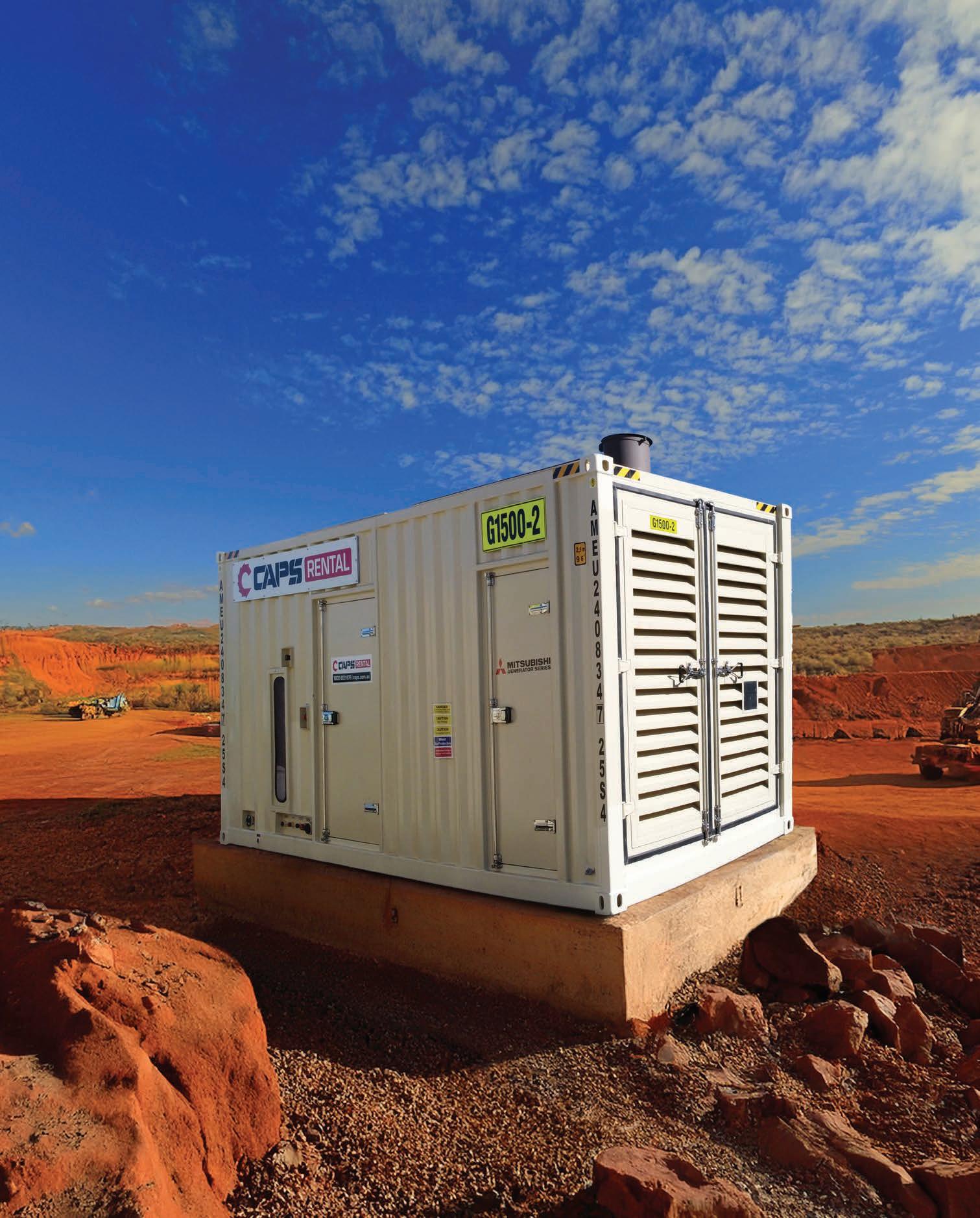


FORTESCUE IS MAKING GREAT PROGRESS IN DECARBONISING ITS OPERATIONS THROUGH THE PILBARA ENERGY CONNECT TRANSMISSION NETWORK.
Fortescue has achieved another major milestone in its journey to eliminate fossil fuels by 2030, successfully commissioning and energising Stage 4 of its Pilbara Energy Connect (PEC) transmission network.
The newly completed 140km transmission line links Fortescue’s Eliwana mine to the broader 220kV network, enabling the Eliwana diesel power station to be placed into care and maintenance.
This transition is expected to reduce fossil fuel consumption significantly and remove around 15,000 tonnes of CO2 emissions each year.
Stage 4 forms part of the wider PEC program – an integrated renewable energy network that will ultimately span more than 750km and support large-scale solar, wind and battery infrastructure across Fortescue’s operations.
Once fully operational, PEC will enable the company to power an electrified mining fleet and infrastructure entirely with green energy.
“PEC is a critical part of our strategy to profitably eliminate fossil fuels across our operations by the end of the decade,” Fortescue director of mining operations Steve Cole said.
“We’re bringing into operation a renewable-ready power system that delivers low-cost, stable electricity to support our mining operations in the Pilbara. The completion of this latest phase is a major achievement for the team and a clear demonstration of our ability to deliver real decarbonisation outcomes at scale.”
The PEC grid will include two large network-connected battery energy storage systems, located at North Star Junction and Cloudbreak.
These systems will initially work alongside low-emissions gas firming generation and enable the integration of large-scale solar across Fortescue’s operations.
Designed with scalability in mind, PEC infrastructure will grow alongside Fortescue’s operations and accelerate the company’s shift to a fully renewable energy supply.
“PEC forms the backbone of our energy network in the Pilbara and
positions us to scale up renewable energy generation, improve reliability and lower our cost of production – all while eliminating emissions,” Cole said.
Fortescue is continuing to make steady progress across a range of key energy and infrastructure projects that support its broader decarbonisation goals.
This includes the successful commissioning of a 100-megawatt solar farm at North Star Junction and ongoing construction of a 190-megawatt solar farm at Cloudbreak, expected to be completed in 2026.
Additionally, a transmission line has been completed to connect the Eliwana, Iron Bridge, and Solomon mine sites, improving energy distribution and operational efficiency.
To advance its energy storage capabilities, Fortescue has begun building its first two battery energy storage systems, including a 250 megawatt-hour facility at North Star Junction and a 120-megawatt-hour installation at Eliwana.
Both are designed to enhance grid stability and support renewable energy integration.
These recent developments further build on Fortescue’s broader decarbonisation strategy. Among the key milestones is the signing of a landmark $US2.8 billion green equipment partnership with Liebherr for 475 zero-emission Liebherr machines to be integrated with Fortescue Zero power systems and the commissioning of seven electric excavators, which are now actively operating across its Pilbara operations.
This marks a significant step towards reducing emissions from heavy mobile equipment.
These milestones form part of Fortescue’s broader energy infrastructure strategy, which includes plans to deploy more than one gigawatt of solar power and one gigawatt of wind generation capacity.
To support this renewable energy expansion, the company is also targeting the installation of 4–5 gigawatt-hours of battery storage and the construction of over 750km of transmission lines.
Together, these initiatives form part of Fortescue’s goal to fully decarbonise its Pilbara operations. AM
AUREKA IS SETTING A NEW STANDARD IN VICTORIAN GOLD EXPLORATION BY BUILDING STRONG COMMUNITY TIES.
Gold mining in Victoria pre-dates Australia’s federation. A history first ignited by an 1850s gold rush has carried through to the present day, with a host of mining and exploration companies taking advantage of the state’s high-grade, low-cost potential.
Active gold mines in Victoria include the likes of Fosterville, Costerfield, Stawell and Ballarat, with Fosterville considered one of the lowest cost gold mining operations in the world.
Despite the state’s storied gold-mining history, several prominent Victorian goldfields remain largely untapped, with research from the Geological Survey of Victoria suggesting that up to 75 million ounces could still be unearthed.
Rich resources have been delineated in the Stawell, Bendigo and Melbourne zones, with some projects boasting million-ounce deposits.
Aureka is aiming to bring Victorian gold to life through its Stawell Corridor, Tandarra, St Arnaud and Jubilee gold projects.
RESEARCH INDICATES UP TO 75 MILLION OUNCES OF GOLD COULD STILL BE UNEARTHED IN VICTORIA.
After a recapitalisation process, Aureka debuted a new name in December 2024, leaving the previous brand’s legacy behind. This has seen the company focus on its social license, building relationships with landowners and stakeholders to provide a sustainable platform for exploration.
In the years that Aureka manager director James Gurry has been involved in the Victorian gold industry, he has come to understand a common quandary: mining and exploration companies often face difficulty in gaining land access.
“I recognised it (land access) was an issue based on my feedback from the previous management and directors of Aureka,” he told Australian Mining
“I’ve also listened to stories from the industry. Some current gold miners are land-strapped and have said that they would have loved to have bought more land if they had their time over again.
“They’ve encouraged others to be proactive about land purchases as a result.”
AUREKA MANAGING DIRECTOR JAMES GURRY IS DRIVING A NEW STANDARD OF SOCIAL STEWARDSHIP IN VICTORIA.

Gurry highlighted Southern Cross, which has established one of Victoria’s largest gold footholds.
“One of the best examples of value creation in Victoria in recent years has been Southern Cross, which has acquired quite a lot of land,” he said.
“Stories such as this have inspired Aureka’s value-creation strategy. But it’s
not just about acquiring land; it’s about how you do it.”
There are instances in the Victorian gold industry of exploration companies struggling to gain sustainable land access, facing opposition from landowners. The question they must ask: Have we responsibly engaged landowners when acquiring and exploring land?

Gurry shared his tale of success.
“Some of our projects have been perceived to have community-related issues in the past,” he said.
“But by working with Tesbury Consulting Services and JLL Real Estate, and working courteously with our stakeholders, we’ve been able to build stronger relationships and gain sustainable land access for lowimpact exploration.
“We’ve also, with investor backing, had the opportunity to grow our footprint by acquiring new land. Some of this land had been up for sale for a long time and wasn’t moving, and by buying it we’ve provided a solution for landowners who want to move onto the next stage in their life.”
Tesbury acts as the middleman in the process – a conduit prioritising the best interests of the vendor and buyer.
“We work as an intermediary between parties, and help to build stakeholder relationships over time,” Tesbury director Adam Place told Australian Mining
“We remove the element of surprise by consistently communicating with vendors about any changes to activities on their land.
“We also present opportunities for exploration companies and landowners, which, in Aureka’s case, has seen us reflect on the good stakeholder engagement stories in the mining and exploration sector and help familiarise the community and landowners with low-impact exploration processes.”
Place said there might be landowners scarred by negative experiences.
“This is where we listen and understand how we can learn from mistakes of the past,” he said.
“We’ve had instances where landowners aren’t happy with how things happened in the past, but have since turned a corner and found our level of communication a stark improvement.
“Alternatively, landowners might have had good experiences in the past, and they have come to gain an understanding about the potential for exploration in this region and how Aureka fits within that.”
JLL Real Estate, the central cog in the buying and selling of land, has also played an important role in terms of social license.
JLL land access manager Michael Harkin painted a picture.
“I’ve worked in the coal and electricity industries for more than 25 years and seen various incidents of good and bad behaviour,” Harkin told Australian Mining
“On a macro level, some companies talk about social licensing, but they don’t really get it. They don’t get that their project can cause landowners a lot of grief, whether that be farmers or homeowners.
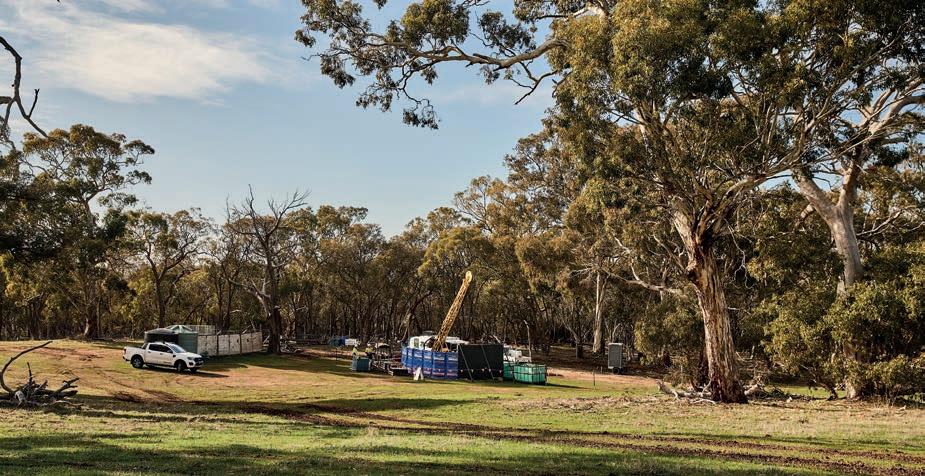

“And a lot of agitation has been created in the past with companies maybe not doing what they say they would, for example. For a company to really get social licensing, they need to have empathy.”
Harkin said Aureka has bucked the trend of many companies by prioritising communication and relationships.
“Adam and James have gone out there, knocked on doors and put a human side to their business,” he said.
“I recently received feedback from a real estate agent working with a vendor who was initially highly opposed to doing business with us. But after arranging a meeting with Aureka, the vendor was appreciative of James’ kindness.
“That’s fundamental in what James is doing: he is considerate and kind, which can be a rare thing in this industry.”
Harkin said it’s refreshing to have companies such as Aureka approaching social licensing as seriously as they are.
It’s the right way to go about it, he said, and it ultimately leads to the best results.
“James is working with the community, and he’s got Adam doing his engagement,” he said. “They’re doing what they say they will, and they’re working with people in good faith.
“What I’ve observed with Aureka is a caring way of doing business. I hope the resource is great, because the way they go about it is establishing a benchmark for how you do development in the exploration industry.”
To accompany its active communication with stakeholders, Aureka works with landholders to understand when’s best to carry out exploration programs.
“We’ve carried out drill programs with one rig at a time operating during typical agricultural business hours – from 7.00am until 5.00pm,” Gurry said.
“So the limited amount of noise we generate with our rig would only be emitted during that time.
“We also don’t work on weekends because people are more likely to be home then.”
Gurry said approach this is all part of Aureka embedding itself within the community.
“While we’re committed to our project, and we recognise that there is terrific potential in the gold we’ve discovered. We want to prove that we’re also part of the community,” he said.
“We want to respect landowners and the land use that currently exists there.”
With a global mineral resource of 5.34 million tonnes at 2.1 grams per tonne (g/t) gold for 360,800 ounces, including 304,000 ounces at 2.43g/t gold at the flagship Irvine project, Aureka is quietly putting together a robust gold portfolio.
And it is establishing itself as a trusted exploration company to boot, one that is rewriting the book when it comes to environmental, social and governance (ESG) in the Victorian gold industry. AM

TELECOMMUNICATIONS PROVIDER VOCUS HAS DEVELOPED A “PRIVATE HIGHWAY” OVER STARLINK SATELLITES FOR MINING COMPANIES CONCERNED ABOUT CYBER SECURITY.
Mining’s social licence to operate hinges on two non-negotiable factors: safety and environmental protection. Both require close monitoring of production systems and control of equipment that protects against life and death situations.
The emergence of fast satellite internet through low-Earth orbit (LEO) technology in recent years has revolutionised connectivity possibilities for mining companies. Where remote sites once struggled with slow, unreliable communications, LEO satellites offer high-speed internet access anywhere on Earth.
However, there’s a catch: all Starlink services have traditionally routed traffic through the public internet. Until now, that is.
While IT managers could apply multiple layers of encryption and security measures, the fundamental problem remained: sensitive operational data was still travelling on the same digital highways as everyone else’s traffic. No matter how well protected, the possibility of someone finding a way to access or tamper with that data could never be completely eliminated.
As automation rapidly increases across the mining industry, this has introduced cyber security risks for operational data, including critical safety systems and environmental monitoring.
Telecommunications provider Vocus believes it has developed a solution to this emerging problem.
The company has established direct private connections to Starlink’s network infrastructure in Sydney and Perth, creating pathways that bypass public internet networks entirely.
Vocus satellite development manager Ashley Grove said the mining industry has been naturally cautious about fully embracing LEO satellite connectivity despite its performance advantages.
“We’ve spoken to mining operators who desperately want the efficiency gains from remote monitoring and automated systems, but they’re concerned about the security risks that come with sending critical control data over public internet networks,” he said. And those concerns are not unfounded. Cyber attacks on critical infrastructure have increased around the world, with hackers targeting everything from water treatment facilities to power grids.
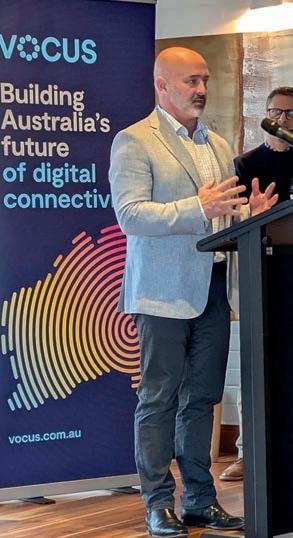

For mining operations, the potential consequences of any compromised safety or environmental systems could be catastrophic.
“Imagine if someone gained control of tailings dam monitoring systems or mine ventilation controls,” Groves said. “The consequences could be devastating, not just for worker safety but for a company’s entire social licence to operate.”
Grove pointed to a real-world example from Florida, US, where a hacker gained access to a water treatment plant’s control systems and began increasing chemical levels to toxic concentrations. As it happened, an employee noticed the values being adjusted on screen, but “what if they hadn’t?” Grove asked.
Vocus has worked to address these concerns by creating a “private highway” over LEO satellite networks. The service routes mining operational data through separate network infrastructure rather than standard internet pathways.
Grove said the approach allows mining companies to manage satelliteconnected sites exactly like locations connected by traditional cables.
“From an IT management perspective, there’s no difference between a site connected by fibre and one connected by our satellite service,” he said.
“What we’ve created is a completely different service model; we’ve connected directly into Starlink’s satellite network infrastructure to create private pathways,

allowing our customers to extend their private company WAN network over the Starlink satellite network.”
Traditional geostationary satellite systems, while secure, can experience high latency and limited bandwidth unsuitable for real-time applications. LEO satellites solve the performance problem but have introduced security concerns that have slowed adoption in safety-critical applications.
Grove said mining companies have experimented with similar solutions in the past, with mixed results.
“We’ve received feedback about previous attempts that suffered from poor performance,” he said.
“What’s different here is we’re using Starlink’s proven high-performance network as the foundation.”
The service also enables private mobile networks at remote sites, with satellite providing the backbone. This means vehicles can be connected across an entire site, staff and equipment locations monitored in real-time, and live telemetry data transmitted from machinery throughout the operation.
The timing is significant for the mining industry.
As companies face increasing pressure to improve safety performance and environmental compliance, many are turning to digital technologies for solutions. However, cyber security incidents at critical infrastructure facilities have highlighted the risks
of connecting operational systems to public networks.
Grove believes the technology could enable mining companies to adopt beneficial automation technologies they might otherwise avoid.
“When companies know their safety and environmental systems are secure, they’re more willing to invest in advanced monitoring technologies that can prevent accidents before they happen,” he said.
The service is designed to address practical deployment challenges facing mining operations in remote locations. Sites can be connected within weeks rather than the months typically required for satellite installations, with compact equipment that operates on minimal power.
Vocus is also working to extend the approach to additional LEO satellite networks as they become available. The company announced earlier this year it would support the new Telesat network when operational.
These additional networks could provide redundancy options for safetycritical applications where communication failures could halt operations.
Industry uptake of the technology will provide a test case for how mining companies balance the operational benefits of modern satellite connectivity against the cyber security risks that come with increased digital connectivity in remote operations.

MAINTAINING THOUSANDS OF METRES OF VITAL PIPELINE INFRASTRUCTURE IS NO EASY FEAT, BUT THAT HAS BEEN PIPE TEK’S MISSION SINCE IT WAS ESTABLISHED IN 2015.
Any given mine site has thousands, sometimes tens of thousands, of metres of pipeline that move water, slurry, gas and other resources vital for operations. Maintaining this infrastructure is a complex task, and one Australian company has stepped up to meet the challenge.
Founded in 2015, Pipe Tek has grown into one of Australia’s most trusted providers of pipeline integrity services. But its origins stretch back to 1953, when it operated under the name Tank Calibrators.
The company initially focused its abilities on the gas sector, which was familiar to founders Myles Brannelly and Taddam Farrant; however, as Pipe Tek has matured, the company has diversified into other industries where its services are required, including mining and resources.
“Pipe Tek started in 2015 with a simple goal: to provide reliable, specialised pipeline-testing services that met the strict standards of critical infrastructure
projects,” Farrant, now Pipe Tek’s chief operating officer, told Australian Mining
“Early on, we recognised a gap in the market for a service provider that could deliver not just testing but full pipeline integrity solutions – from cleaning and gauging through to pressure testing and certification.
“Over the past decade, we’ve steadily grown our footprint, particularly in the mining sector, by focusing on quality, responsiveness and longterm relationships.”
The company is proud to have tested and certified more than 800 pipelines across Australia and the Pacific.
Pipe Tek managing director Brannelly said the company has built its reputation by being more than a contractor.
“Mining environments are some of the most challenging; remote locations, harsh conditions and tight schedules are the norm,” he said. “What sets Pipe Tek apart is our ability to deliver highly specialised services with flexibility and efficiency.
“We’re not just a contractor; we’re a partner that works closely with clients

to tailor solutions to their infrastructure and operational needs.”
Pipe Tek’s services begin with one of the simplest yet most revealing on-site tasks: pipeline cleaning.
Using customised pigs designed to fit exact diameters, the company clears out debris before deploying intelligent inline inspection (ILI) tools that map out
the internal condition of each pipeline. This results in an integrity report on the internal condition of the pipeline, identifying any current or future issues, which asset owners can use to plan for the operation of these vital pieces of infrastructure.
Farrant said Pipe Tek offers clients a comprehensive solution, which is
essential in reducing downtime and identifying issues before they impact on transmission and productivity, ultimately saving costs.
“Our clients don’t just want one piece of the puzzle – they want a service provider who can manage the full integrity cycle of their pipeline assets,” he said.
“That’s why we’ve built our business around delivering end-to-end solutions, from pigging and hydrostatic testing to NATA (National Association of Testing Authorities)-certified reporting and long-term maintenance programs.
“This approach reduces risk, simplifies communication, and ultimately provides better outcomes for our clients.”
Pipe Tek is also bringing new technology to Australia through partnerships with global heavyweights like Enduro Pipeline Services and SatVUE.
“We see technology as a force multiplier,” Brannelly said.
“Our collaboration with SatVUE, for example, enables real-time data collection and environmental monitoring during pressure testing – adding a layer of transparency and environmental compliance that’s becoming increasingly important.”
Enduro’s inspection and cleaning tools are sourced from the US for Pipe Tek’s exclusive use in Australia and the Pacific. The company’s skilled

technicians can operate this pipeline technology for asset owners, or Pipe Tek can also supply companies with equipment for their own use.
Australia, there are more than 350 mining developments across the country, representing a lot of pipeline that needs to be in service to ensure operations run smoothly.
This insight has shaped Pipe Tek’s direction, supporting not only mining but also decarbonisation and water reuse projects.
“We’re looking ahead to further growth in both the mining and infrastructure sectors, particularly in supporting decarbonisation and water reuse projects,” Brannelly said.
“Working with Enduro Pipeline Services gives us access to worldclass pigging and inspection tools, including custom-designed cleaning pigs and inline inspection technologies,” Brannelly said.
“These partnerships allow us to deliver cutting-edge services while maintaining the flexibility to customise solutions for each project.”
Safety and sustainability are at the core of everything Pipe Tek does. This includes its testing methods, which are designed to meet the highest

safety standards while minimising environmental impact.
“We often use water recovered on site for hydrotesting, and we incorporate leak detection and flow monitoring to prevent losses or contamination,” Farrant said.
“By maintaining pipeline integrity, we’re also supporting sustainable operations – reducing the risk of failures that could lead to environmental damage or unplanned shutdowns.”
Pipe Tek recently expanded its operations into Western Australia, including a new facility in Perth.
This increased reach is important amid growing demand in the resources industry. According to Geoscience
“We’re also expanding our technology offering, including more advanced diagnostic tools and real-time data platforms to support predictive maintenance.
“Internally, we’re continuing to invest in our team and operations so we can scale sustainably and maintain the level of service our clients expect.”
For Brannelly and Farrant, who both admit they wear their hearts on their sleeves, Pipe Tek’s journey so far has been a personal one.
“We’re proud of the journey so far –from a small start-up to a trusted name in pipeline integrity,” Farrant said.
“It’s been built on the back of strong relationships, quality work and a team that genuinely cares about what we do. We’re excited about what the future holds for the business and the challenges that lay ahead.” AM
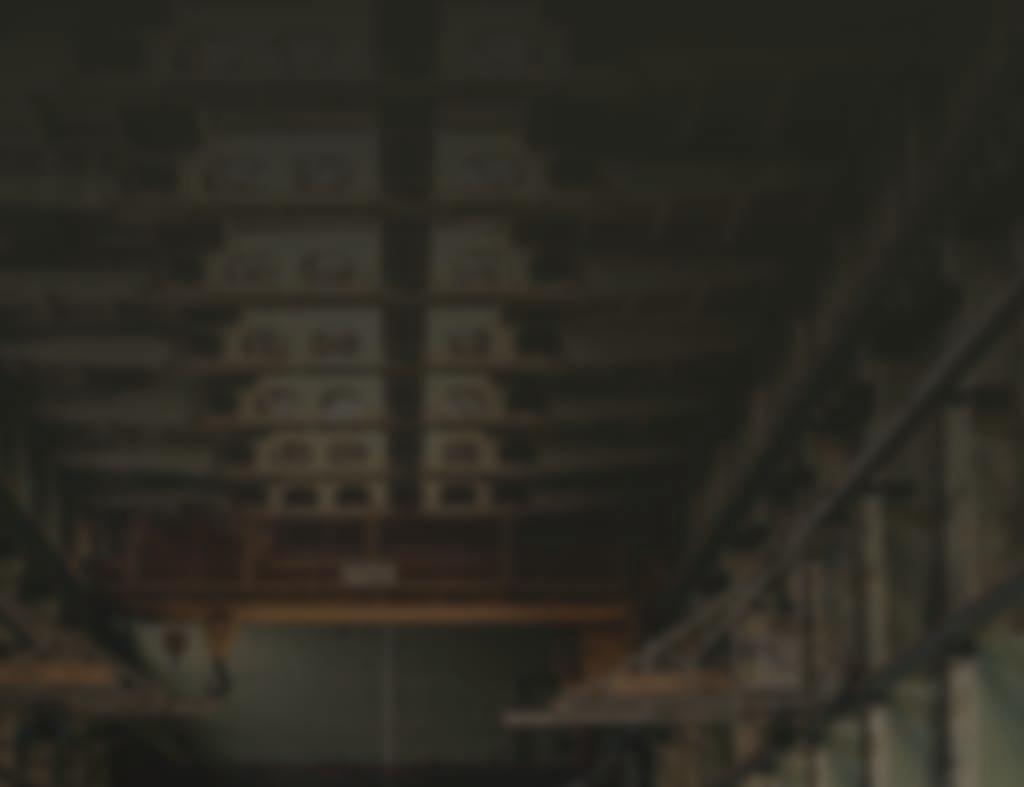








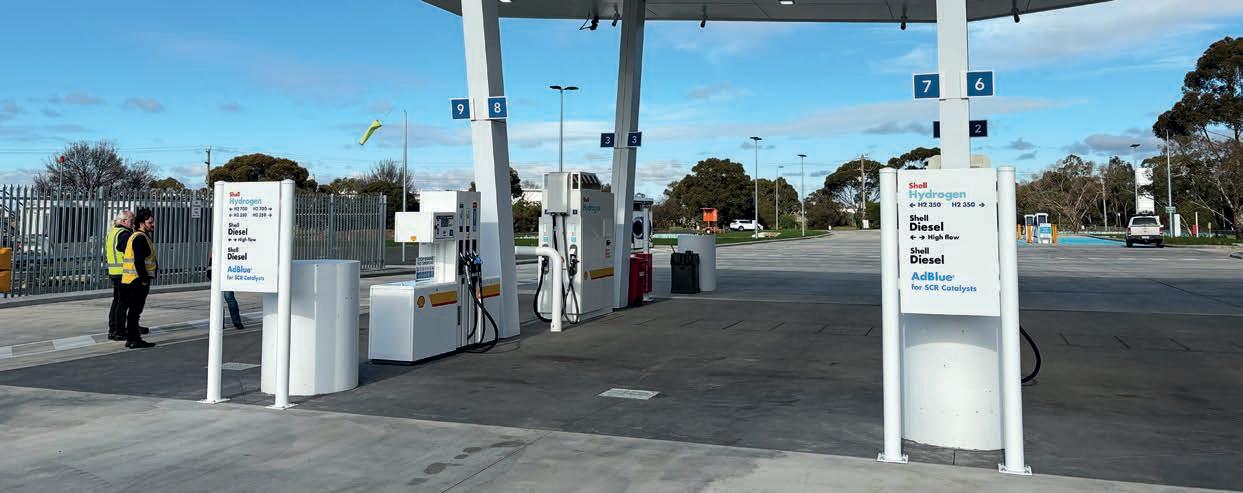
AS MINING COMPANIES WORK TO DECARBONISE OPERATIONS, HYDROGEN IS BEING EXPLORED AS A FUTURE ENERGY SOURCE.
Anew Australian facility is quietly emerging as a key asset in the renewable energy transition.
Designed with collaboration, flexibility, and scale in mind, this site is more than a showcase of future potential – it’s a working blueprint for how heavy industry might one day run on renewable fuels.
Led by Viva Energy Australia and supported by project partners and funding bodies including the Australian Renewable Energy Agency (ARENA), the Energy Hub in Geelong, Victoria, is focused on enabling hydrogen-powered solutions for vehicles big and small.
While full commercial deployment is still a way off, early signs are promising. Australian Mining conducted a tour of the site and chatted to Viva Energy head of hydrogen and EVs Sandra Lau about the future of hydrogen.
Hydrogen could be a valuable zeroemission fuel for a range of applications, including mining haul trucks, Lau said.
“Hydrogen is currently being used to power buses and prime movers, and over time, the technology has the potential to run haul trucks, diggers, excavators and other mining equipment,” she said.
“It’s early days but there is an exciting future ahead for hydrogen in mining.”
Viva Energy has established the Viva Energy Hub – a purpose-built
facility designed to accelerate Australia’s transition towards cleaner transport fuels with a particular focus on hydrogen for heavy vehicles.
Acting as both a refuelling point and a technology showcase, the hub supports a broad range of partners from vehicle operators to original equipment manufacturers (OEMs) without prescribing specific suppliers or models.
This vehicle-agnostic approach ensures flexibility, allowing operators to choose the technologies that best suit their needs while still benefiting from Viva Energy’s refuelling infrastructure and expertise.
The hub incorporates a 2.5-megawatt electrolyser for the generation of renewable hydrogen using recycled water from Barwon Water’s Northern Water

Plant. The electrolyser can generate 1000kg of hydrogen per day, setting a new standard for electrolyser-produced hydrogen in Australia.
As part of the project, a fleet of hydrogen fuel cell electric vehicles (FCEVs), including heavy vehicles operated by local businesses, will utilise the Viva Energy Hub for refuelling.
Viva Energy received a $34 million grant from the Australian Renewable Energy Agency (ARENA) for the project as part of ARENA’s Advancing Renewables Program. This funding has supported infrastructure construction, the hydrogen vehicles and the hydrogen supply itself.
The Victorian Government also contributed $1 million to the hub via the Renewable Hydrogen Commercialisation Pathways Fund.
With government endorsement, the Viva Energy Hub is positioned as a strategic stepping stone towards a low-emissions future, providing an important platform for the transition to cleaner fuels.
While hydrogen fuel cells for vehicles are still evolving, the facility lays the groundwork for their future deployment by providing a central location for collaboration between industry, funding bodies and technology providers.
And if timing is everything, the Viva Energy Hub may be right on cue to help redefine how heavy industry powers ahead. AM

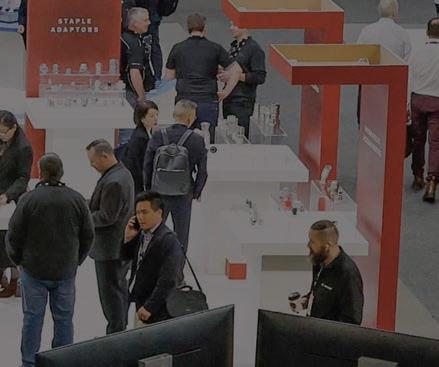



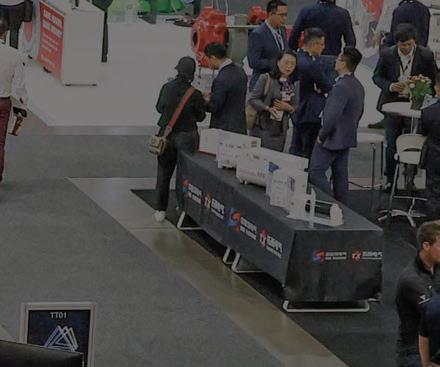
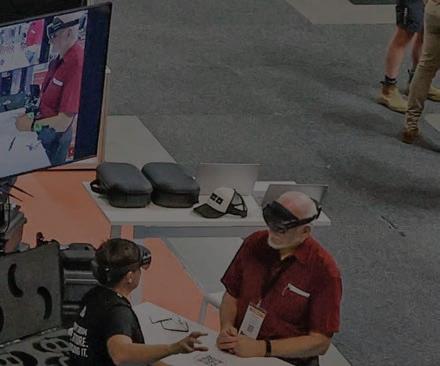

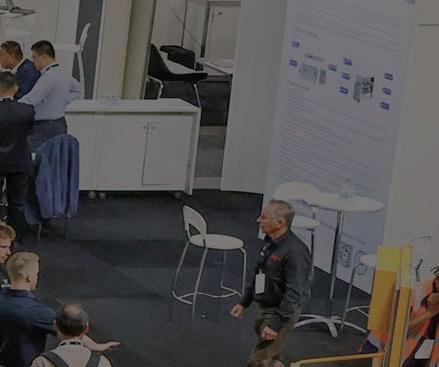

ASIA-PACIFIC’S INTERNATIONAL MINING EXHIBITION
23-25 SEPTEMBER 2025


Adelaide Showground, South Australia

Register to attend AIMEX’s inaugural event in South Australia



BRAVUS MINING AND RESOURCES IS BOOSTING REGIONAL QUEENSLAND THROUGH LOCAL PROCUREMENT, INDIGENOUS PARTNERSHIPS, AND FUTURE-FOCUSED TRAINING PROGRAMS.
Since the Carmichael mine produced first coal in early 2022, Bravus Mining and Resources has become a key fixture of the Queensland landscape, providing jobs and economic opportunities for mining professionals, contractors and local businesses.
From multi-million-dollar infrastructure projects to creating pathways for First Nations employment and training future leaders, Bravus Mining and Resources has formed strategic partnerships and made significant investments, driving economic prosperity across the state.
Future leaders step up
The company’s Future Leaders Program recently saw its inaugural graduates, Aidan Castle and Rex Gruspe, become full-time environmental officers at the Carmichael mine.
The 18-month Future Leaders Program combines on-site training with online study through CQUniversity, providing participants with operational experience and leadership development.
Castle and Gruspe worked a seven-on, seven-off roster at Carmichael while completing two non-award MBA (Leadership) units and a micro-credential short course through CQUniversity’s Be Different online platform.
Bravus Mining and Resources chief operating officer Mick Crowe said the graduates have become integral parts of the team.
“Our environmental team is fundamental to how we mine safely and responsibly at Carmichael, delivering the world-class programs that ensure we continue to comply with our approval conditions,” Crowe said.
“It’s been a delight to watch the pair of them grow over the past 18 months into capable environmental officers who care deeply about their work.”
Castle said the program gave him the skills to build strong relationships, while Gruspe highlighted the daily challenges and support from his colleagues as key to his growth.
Bravus Mining and Resources and CQUniversity will soon open applications for the 2025/26 Summer Vacation Student Program, which offers a pathway into the graduate program.
Supporting Indigenous partnerships
Bravus Mining and Resources is just as committed to Carmichael’s future workforce as it is to the mine’s contractors and partners.
First Nations-owned business Biodiversity Australia has played a key role in providing environmental consultancy and on-ground services including ecology, vegetation, and fauna management at the Carmichael mine since 2018.
As part of its partnership with Bravus Mining and Resources, Biodiversity Australia implemented its awardwinning Indigenous Pathways Model from the outset, creating a mentorship and training framework to increase Indigenous workforce participation.

This partnership was recognised at the Queensland Resources Council’s 2025 Indigenous Awards in June, where Biodiversity Australia was named a finalist in the Exceptional Indigenous Business in Queensland category.
Crowe said the recognition reflected both the high quality of environmental work delivered for the Carmichael mine and the broader value of fostering Indigenous partnerships.
“We look to work with local contractors and suppliers wherever possible, and Biodiversity Australia is a great example of the capability of First Nations businesses in regional Queensland,” Crowe said.
Investing in local business
Bravus Mining and Resources’ commitment to regional communities extends beyond Indigenous engagement and training future leaders.
The company recently announced $40 million worth of contracts for two Queensland businesses for the construction of a new heavy vehicle maintenance workshop at the Carmichael mine.
CSF Steel Fabricators will fabricate and freight more than 685 tonnes of structural steel to the mine, where Hawkins Group will use it to build a 5700m2 workshop and warehouse.
Crowe said the project demonstrated Bravus’ philosophy of sourcing locally wherever possible.
“Our Indigenous land use agreements and Indigenous participation plan ensure First Nations people are an integral part of the Carmichael mine’s operations, and we’re proud to say that more than 10 per cent of the mine’s workforce are Indigenous people.”
Biodiversity Australia managing director Steve Noy said the partnership had created opportunities beyond traditional contracting arrangements.
“We’re a proud regional Queensland business and supporting local jobs, contractors, and suppliers has been one of our core values from the very start,” he said



“Our engagement with Bravus Mining and Resources has created long-term opportunities – not just contracts,” he said. “It has empowered us to invest in regional communities, expand our presence in Townsville, and support dozens of First Nations people into sustainable, purposedriven careers.”
“That’s important to us not just because it’s good for the economic and social vibrancy of the communities the 1200 workers at our Carmichael mine call home, it’s important because our regions boast world-class talent and leaning into that … helps us remain globally competitive.”
Since 2019, more than $2 billion has been invested in regional Queensland contractors and businesses through the Carmichael mine, underlining Bravus Mining and Resources’ strategy to create lasting economic value in the communities where it operates. AM
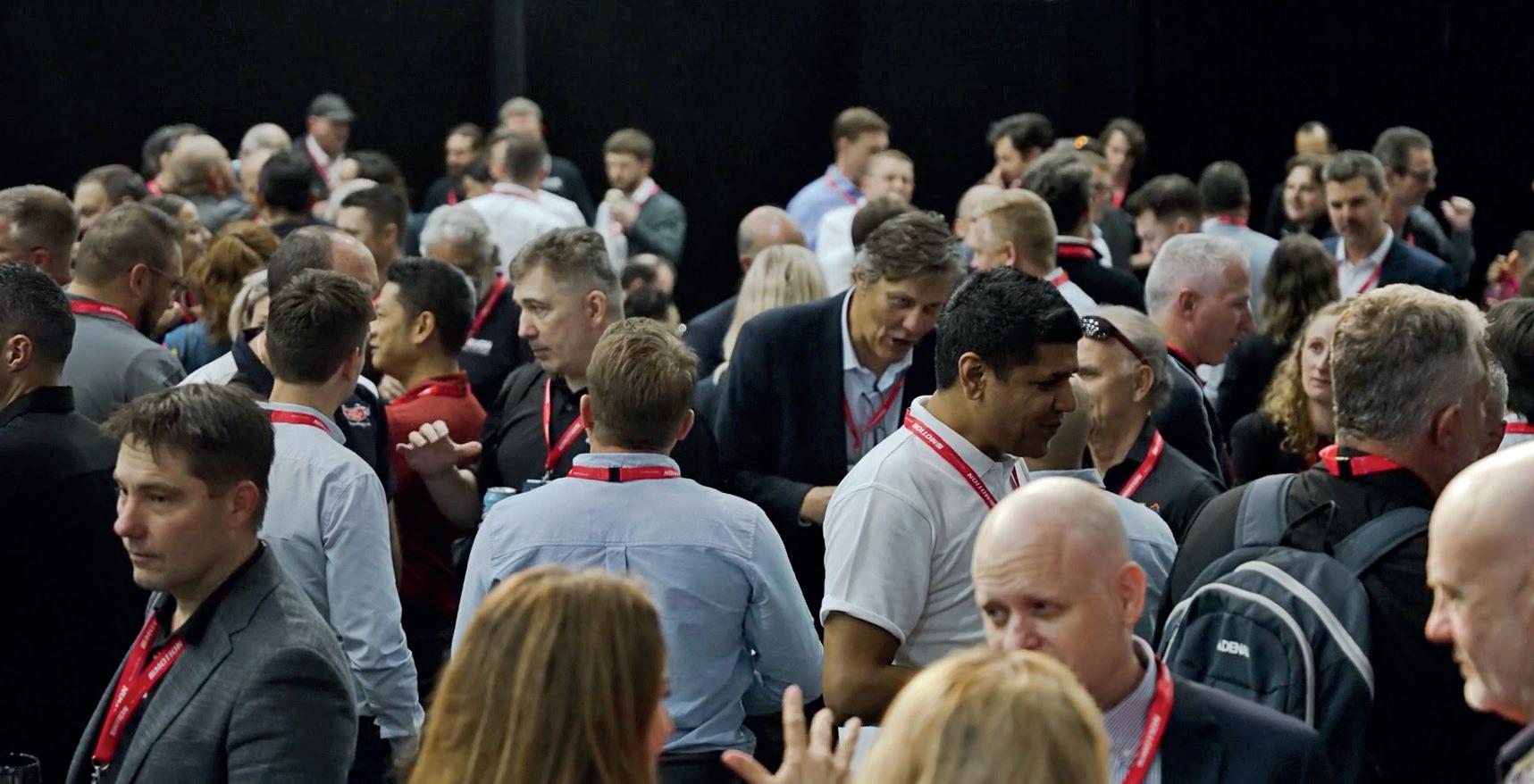
8-9
waminingexpo.com.au
Compressed air is mining’s invisible workhorse.
It’s effectively a fourth utility alongside water, electricity and gas that powers everything from pneumatic tools and conveyor systems to dust suppression and equipment cooling across Australia’s vast mining operations.
On remote mine sites where reliability is paramount and the cost of unexpected downtime runs into the millions, working with the right air compression partner becomes a critical factor.
Enter the team from Pulford, a name synonymous with compressed air excellence for 100 years.
Now part of global original equipment manufacturer (OEM) ELGi, Pulford combines a century of local expertise with cuttingedge international technology and manufacturing capabilities, delivering solutions engineered specifically for the demanding conditions of modern Australian mining operations.
A century of unbroken growth Pulford’s journey began when the company pioneered Australia’s first locally manufactured piston compressors in 1925, breaking new ground in a market dominated by overseas imports.
ELGi Australia managing director Mark Hollingsworth said the company is proud of its heritage and has been celebrating its centenary throughout 2025.
“We started from very humble beginnings and kept true to our vision of innovative products for our customers,” he said. “We navigated world wars, recessions, booms, and the business grew every year throughout that term.”
Strategic acquisitions have broadened the company’s reach even further. It took on Advanced Air Compressors in 2015, which expanded Pulford’s capabilities in food and beverage and larger industrial applications. Then, in 2018, Pulford was the target of its own “transformational” acquisition from India-based ELGi.
Hollingsworth said this has brought new global equipment manufacturing capabilities to the Australian operation, while still preserving the customer relationships and local expertise that had long defined the Pulford brand.
While compressed air remains Pulford’s core business, the company has also developed specialised nitrogen generation systems that address critical safety challenges in the mining sector.
ELGi Australia national service manager Ben Smith said these innovative solutions tackle one of mining’s most dangerous scenarios.
“A big issue that mines face with their trucks is around safety on tyre fires, lightning strikes and the like,” he said.
Traditional compressed air in tyres contains oxygen, creating combustion risks during electrical storms or equipment malfunctions.
“Filling tyres with nitrogen stops any chance of a fire and also prevents
explosions within the machine itself,” Smith said.
The technology works by replacing oxygen-rich compressed air with pure nitrogen inside tyre chambers. Nitrogen molecules are larger than oxygen, preventing permeation through rubber and maintaining consistent tyre pressure longer. More critically, the inert atmosphere eliminates fire and explosion risks, allowing operations to continue safely, even during lightning events.
Pulford’s containerised nitrogen systems are engineered specifically for mine site constraints, including power limitations and extreme environmental conditions.
The company’s turnkey installations serve major mining operations across Australia, including in the Hunter Valley, NSW, and throughout Western Australia. They provide safety assurance and the operational continuity on which mines depend for maximum productivity.
Mining operations demand absolute reliability, and Pulford’s advanced remote monitoring capabilities are designed to ensure equipment issues are identified and resolved well before they impact production.
The company’s proprietary Air Alert system provides real-time monitoring of compressor performance across remote mine sites, delivering critical intelligence directly to service teams.
“We monitor everything, and everything’s online,” Smith said. “We get live updates if there are any issues with the machine, so we can actually pre-empt what’s happening before it ends up causing an issue.”
The monitoring technology integrates seamlessly with on-site building management systems, providing operational data that helps optimise overall site efficiency. For equipment running on a near 24-hour schedule in harsh conditions, this connectivity proves invaluable.
Remote diagnostics capabilities mean technicians can assess situations and coordinate responses without immediate site visits, significantly reducing response times.
Beyond emergency response, the system supports structured preventive maintenance scheduling.
“If a compressor’s running 8000 hours per year, then we’d be planning to travel to site every three months to perform preventative maintenance,” Smith said.
This combination of predictive monitoring and scheduled maintenance ensures mining operations maintain the maximum uptime essential for profitability in a competitive mining sector.
Australian mining operations present some of the world’s most challenging conditions for industrial equipment, and Pulford’s solutions are engineered specifically to thrive in these extreme environments.

From the scorching heat of north Queensland to the dusty conditions of the Pilbara, its compressors must perform reliably in an environment where failure isn’t an option.
“Our products are designed for high ambient temperatures,” Hollingsworth said. “It gets pretty hot out there in north Queensland and WA.”
The company’s experience extends beyond Australia, with proven performance also in the Middle East.
Mining operations typically require substantial compressed air volumes, with systems starting at 75 kilowatts and scaling up to massive 540-kilowatt installations, which deliver more than 3000 cubic feet of air per minute. These large-scale systems are built to operate continuously, maintaining peak performance in what are often dusty and corrosive environments.
ELGi’s vertical integration provides additional reliability advantages. As one of the few companies that owns the complete manufacturing process, quality is controlled at every stage.
This manufacturing control, combined with 10-year warranties, help to give mining operators confidence their critical compressed air infrastructure will perform reliably, even in the most demanding conditions. AM

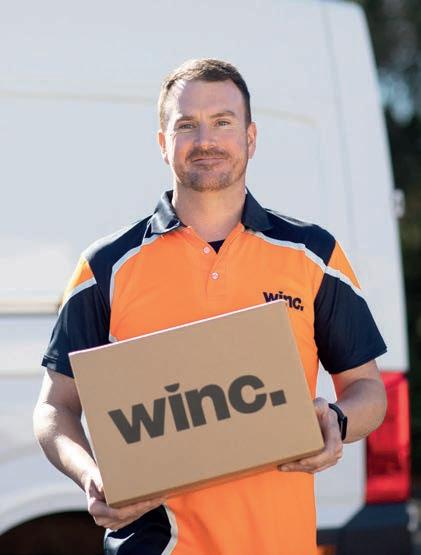
Scan this QR code to learn more or request a call today.
Ethically sourced
From the world’s most trusted brands • Made to last • Delivered next business day* Our in-house team of Health, Hygiene & Safety Specialists are on standby to support with safety audits, product advice as well as sustainable and First Nations solutions.
THEJO ENGINEERING REMAINS AT THE FOREFRONT OF WEAR MANAGEMENT TRENDS.
Australian mining operations face growing pressure to increase uptime and reduce total cost of ownership, particularly in abrasive wear environments.
Effective wear management requires more than just selecting the hardest materials; it involves engineering solutions around real-world operating conditions.
Thejo Engineering examines how wear protection strategies are evolving across grinding, material transfer, slurry transport and cyclone applications to meet these demands with greater predictability and safety.
THOR mill solutions
Thejo’s THOR range includes rubberbased liners designed for mill shells, heads and discharge zones. These liners, built from blends of synthetic and natural rubber, are tailored for use in SAG (semi-autogenous grinding) and ball mills.
THOR linings are formulated to reduce impact stress on mill shells while maintaining efficient charge motion.
Select THOR systems now also include wear-monitoring sensors, allowing maintenance teams to track liner condition remotely and plan shutdowns based on real-time data,
improving mill availability and reducing unnecessary liner changes.
These sensor-based systems also enable remote monitoring, which is particularly valuable in hazardous or inaccessible zones within a plant.
By reducing the need for manual inspections, THOR systems improve worker safety while ensuring timely, data-driven maintenance decisions.
The sensor output integrates with plant maintenance dashboards, enhancing predictability and asset visibility.
Smart rubber indicators
The RHINO-R range of rubber wear panels includes built-in wear indicators, which are integrated into the rubber and coloured to reveal remaining liner life.
Once the wear surface reaches a coloured layer, crews are alerted to schedule change-outs before a failure occurs. This visual cue system is especially useful in low-visibility or confined installations, supporting preventive maintenance without requiring continuous inspection.
These smart liners are being used in ROM (run-of-mine) bin liners and discharge chutes across several operations in Western Australia, where irregular ore feed and abrasive fines can cause uneven wear patterns, as well as in engineered chutes designed with hoods and spoons to regulate material flow.

Thejo also engineers mill feed spouts and feed carts with innovative configurations aimed at reducing abrasion from ore and controlling impact forces from grinding media.
Handling abrasive slurry requires not only robust pumps and pipework but also flexible connections that can absorb pulsations and misalignment. Thejo manufactures heavy-duty rubber hoses for slurry transport applications, engineered to withstand high internal pressures and abrasive flow conditions.

Where additional wear protection is required, ceramic-embedded rubber hoses are deployed. These incorporate ceramic tiles into the inner wear layer to extend service life in bends or highvelocity discharge zones.
These hoses are custom fabricated for each plant layout and are widely used in concentrators, tailings systems, and underflow lines.
Ceramic when it counts
CERALINE – a flexible ceramic wear lining system that incorporates thin ceramic tiles bonded to an elastomeric backing – is also part of Thejo’s ceramic offering.
Designed for moderate impact and high-flow zones, CERALINE can conform to curved or irregular surfaces and is often used in hoppers, chutes and other medium-duty applications. Its reduced tile thickness enables some flex under dynamic loads, while still offering reliable abrasion resistance.
Thejo’s RHINOCER brand – comprising variants like RHINOCER-H, RHINOCER-HD, RHINOCER-R and RHINOCER-PA – focuses on the strategic use of ceramic in locations where hardness and impact resistance outweigh flexibility.
These include primary crusher discharge chutes, impact pads beneath screens, and rail load-out hoppers.
Modular ceramic blocks such as RHINOCER-HD, anchored into steel backing, are typically used in highimpact areas like crusher discharge chutes or under screen decks.
These installations aim to reduce change-out frequency and improve operator safety by limiting exposure during shutdown maintenance.

For less severe operating conditions, RHINOCER-PA plain anchoring tiles provide coverage without unnecessary weight or cost. The PA tile has a special structure that strongly bonds the tiles to the rubber.
No wear solution operates in a vacuum.
At its best, wear engineering works alongside plant maintenance routines, installation constraints, and even procurement logistics.
Thejo’s teams conduct site audits before proposing materials, mapping flow conditions, creating liner wear profiles, and providing feedback from past shutdowns.
The goal isn’t just lifespan, but predictability and repeatability.
Cyclone systems are among the most abrasive components in mineral processing, with internal surfaces subject to continuous high-velocity slurry flows.
Thejo contributes to the long-term reliability of these systems through precision-fabricated drop-in liners made from proprietary rubber compounds.
These linings are used extensively across iron ore and coal operations in Australia, where they offer enhanced wear performance compared to standard original equipment manufacturer (OEM) options.
Tailored to OEM geometries and engineered for easy installation, these liners are designed to resist pulsation, delamination, and premature failure.
Components such as apex cones and barrels benefit from superior bonding and material resilience, which improves service life and reduces change-out frequency.
Thejo’s contribution to wear performance lies in the ability to fabricate and supply high-performance liners with superior bonding and proprietary materials.
These capabilities reflect the company’s broader strategy of delivering fit-for-purpose solutions across complex plant environments.
As wear protection continues to evolve, it’s no longer just about resisting abrasion, but more about optimising the flow, minimising downtime, and promoting sustainability.
Rubber materials like WARDOG don’t just wear well; they dampen sound, reduce vibration fatigue and, in many cases, lower carbon emissions compared to energy-intensive ceramic processing.
Thejo continues to refine its compounds and bonding systems to ensure longer life with less environmental cost.
As Australian mining operations look to extend maintenance intervals and maximise output without compromising safety or budget, wear solutions must keep pace – not by offering generic products, but by engineering solutions that align with environment, social and governance (ESG) goals, extend asset life, and support the shift towards smarter, more sustainable mining. AM

THE 2025 UNDERGROUND OPERATORS CONFERENCE WAS THE LARGEST TECHNICAL CONFERENCE IN AUSIMM’S 132-YEAR HISTORY.

AFTER NEARLY FIVE DECADES, AUSIMM’S UNDERGROUND OPERATORS CONFERENCE CONTINUES TO BE A MUST-ATTEND EVENT FOR MINING PROFESSIONALS.
Chris Carr has been to 10 Underground Operators Conferences (UgOps) and helped shape half a dozen of them.
As AusIMM president and technical director at IGO, Carr told Australian Mining the event is not only one of the most significant gatherings in the mining industry, it’s also deeply personal.
“If you only go to one event in this industry, make it Underground Operators,” Carr said.
“UgOps is more than just a calendar item. It is a decades-long tradition rooted in technical excellence, practical insight and peer-driven collaboration.”
Having chaired the 2014 event and played a central role in the 2021 conference during COVID disruptions, Carr has seen the evolution of UgOps firsthand, from paper-based local meetups to multi-day events drawing nearly 2000 people and more than 130 exhibitors.
This year’s event, hosted in Adelaide, marked the largest in AusIMM’s 132year history, but Carr said it is not the size that matters, it is the content.
“Underground Operators is built by industry, for industry,” he said. “It is not about bums on seats. It is about practical knowledge, site-based insights and creating a legacy of learning.”
That legacy is backed by a strong peerreview ethos. Every paper submitted to UgOps must include at least one site-based author, a safeguard against promotional or theoretical content.
“We are not interested in ideas that might work,” Car said. “We want to know what really happened, what worked, what didn’t and what we learned.”
It is an openness that makes UgOps such a powerful knowledge-
sharing platform. From discussions on safer explosive charging to AI-driven area denial systems and real-time underground communications, Carr said the trends shaping future mines are often born at UgOps and adopted across the sector within a few years.
“You will see a new technique at one conference, and two years later it has become best practice,” he said. “That kind of adoption speed shows how trusted this forum is.”
The conference is also helping operators evaluate new technologies through a business lens. With the rise of AI, machine learning and electrified mining fleets, the value proposition is shifting.
“A lot of these systems cost more upfront,” Carr said. “But what you learn at UgOps helps you make the business case that spending more now can save a lot later.”
The exhibition side of the event, now as big as the technical program, plays a key role in this.
“It used to be just a few stands around the edges,” Carr said. “Now it is an entire showcase in itself. You get to see the latest mining gear and talk directly to the people developing it.”
As the event looks ahead to its 50th anniversary in 2027, Carr believes its grassroots spirit is the secret to its longevity.
“This is a show run by industry for industry,” Car said. “There is a strong passion to giving back. You do not just attend, you contribute. And that contribution keeps multiplying across the industry.”
For new operators and experienced hands alike, UgOps continues to set the standard for underground mining knowledge and innovation. AM











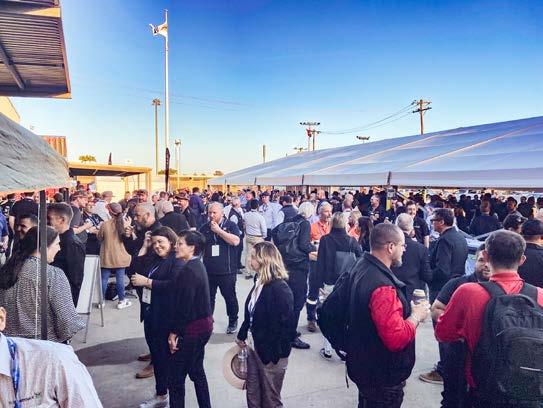

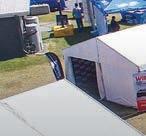


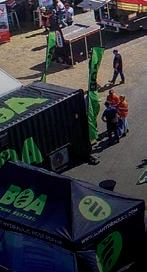





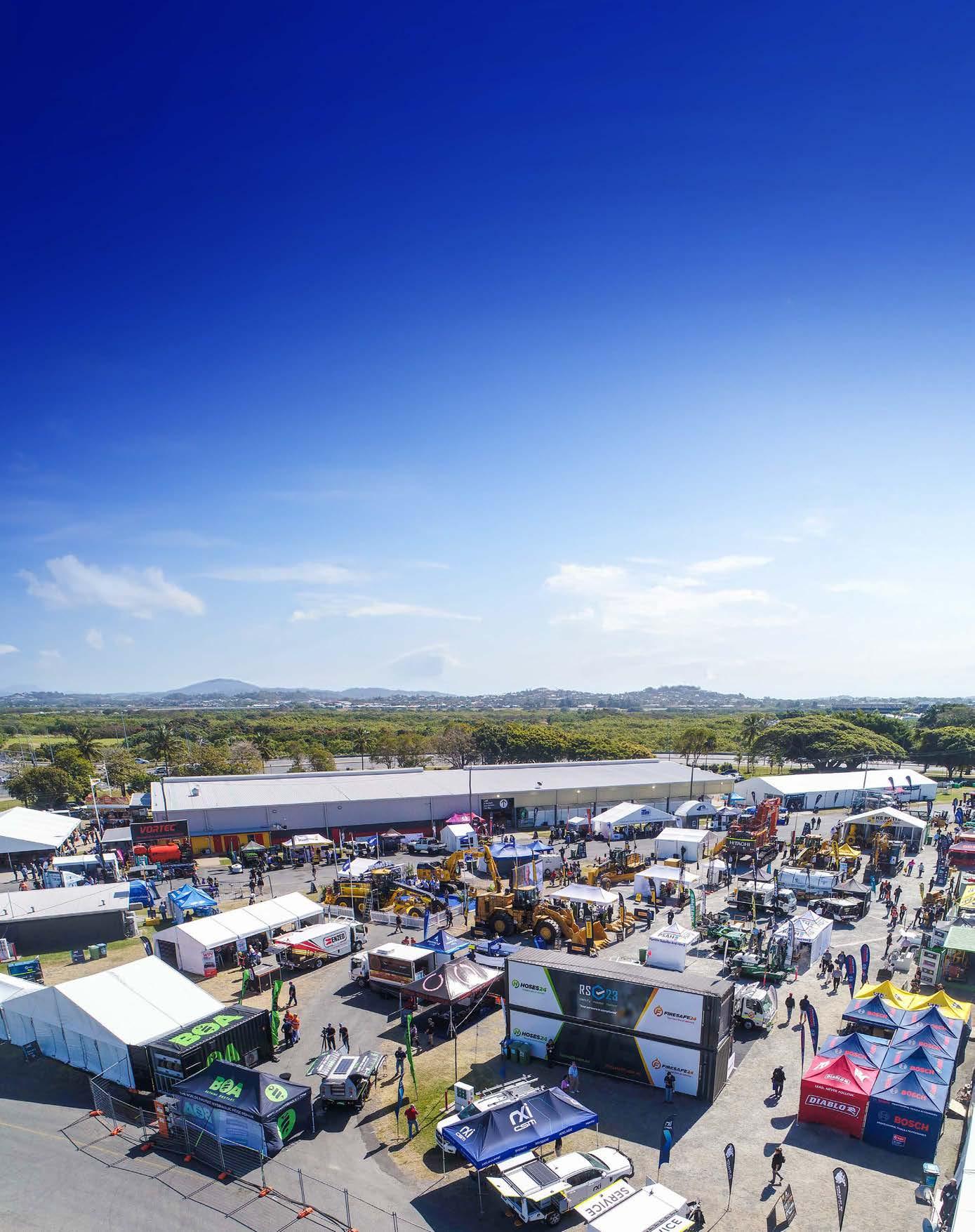



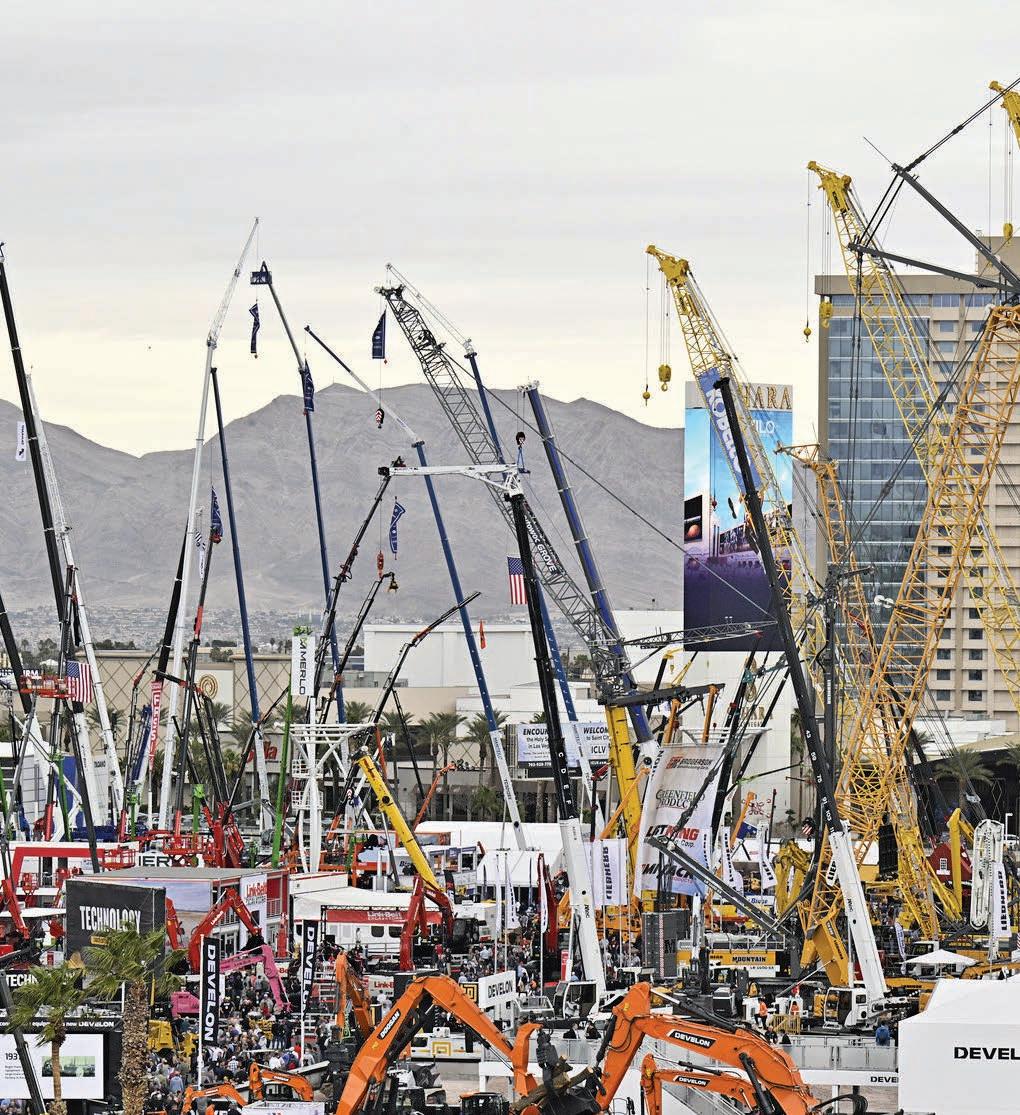

CONEXPO-CON/AGG IS OWNED IN PARTNERSHIP WITH NRMCA, NSSGA AND AEM.

BUILDING ON A 100-PLUS-YEAR LEGACY, CONEXPO-CON/AGG 2026 PROMISES TO BE BIGGER AND BETTER THAN EVER.
CONEXPO-CON/AGG has come a long way since its first iteration in 1909, growing to become the largest construction show in North America.
In 1996, CONEXPO (then known as the Road Show) combined with the Concrete and Aggregates Show (CON/AGG) to create the first ever CONEXPO-CON/AGG, held at the Las Vegas Convention Centre.
From then onwards, CONEXPOCON/AGG has been held every three years and always features the latest equipment, products, services and technologies for the construction industry, as well as industryleading education.
“Looking back, there were two separate shows representing different segments of the industry,” CONEXPOCON/AGG show director Dana Wuesthoff told Australian Mining
“I think both shows coming together highlights the growth of the industry and the importance of the event, as people wanted to see everything in one spot.
“When CONEXPO and CON/ AGG came together, it was a benefit not only for equipment manufacturers – because they’re the ones exhibiting their innovations – but the end-users and contractors coming and seeing that value together.”
Since 1996, CONEXPO-CON/AGG has been held in Las Vegas, a city known all over the world for its hospitality venues, vibrant nightlife, and worldclass entertainment.
CONEXPO-CON/AGG will again be held at the Las Vegas Convention Centre in 2026, allowing attendees to come together and network inside and outside of the event.
“We have so many different companies and brands coming to the show because, at the end of the day, they want to make connections with their customers and their distribution chains,” Wuesthoff said.
“Attendees come to the show to make connections with the different brands.
They want to see new things, shop and compare, and meet their peers and learn from one another.
“We know once the show closes for the day, that doesn’t mean all the networking stops. That’s really where Las Vegas as a city is a great opportunity. There is so much for people to see and continue making those connections beyond the showgrounds.”
Thousands of exhibitors have been booked for CONEXPO-CON/AGG 2026, cementing the show as a mustattend event for industry professionals.
“We have brought together a wide variety of products, services and technologies,” Wuesthoff said.
“We have this at the forefront when laying out the show and grouping products into categories. We have halls and lots dedicated to what we call ‘product concentration areas’.”
One of these concentration areas may comprise products, machinery and solutions specific to earthmoving equipment. This umbrella approach allows attendees to easily locate which area they want to visit. An online digital show directory and planner with the different exhibitors and products is also available to help attendees make the best of their time and money.
“You can search for educational offerings and whether those are paid sessions or free public content in different mediums,” Wuesthoff said.
“It’s an invaluable tool when it comes to finding out what’s at the show, what you’re interested in, and planning before you get to the event. This is not a show that you just show up and walk it – it is very large.”
The next level
Following a 2023 launch, the Next Level Awards are set to return for CONEXPO-CON/AGG 2026. The awards recognise companies pushing boundaries and developing innovative products within the construction sector.
“I’m excited about the 2026 Next Level Awards because the way it’s designed,” Wuesthoff said. “Exhibitors submit their product or service, and a panel of expert judges will create a list of finalists. We
share those finalists with attendees and encourage them to visit booths and vote on-site. The winner is the ‘Contractors’ Choice’.”
The 2026 Next Level Awards will be separated into two categories: equipment and technology. Nominations are open until December 1, with winners to be announced on the Groundbreakers keynote stage on March 6.
The Groundbreakers keynote stage will act as platform to raise awareness of the construction industry’s global contributions.
Key topics on the agenda include innovation in construction technology and practices, public policy affecting the industry, workforce development and addressing labour challenges, sustainability and environmental responsibility, and mental health and wellbeing.
“We have a slew of new features and programming for 2026 that we’re really excited about,” Wuesthoff said.
“Our new Groundbreakers keynote stage is an opportunity for us to highlight industry thought leadership and discussions.
“We will still have our show’s educational program, which is over 150 different paid sessions broken up into different tracks spanning the industry, but our Groundbreakers keynote stage will have more heavy-hitting conversations about important topics in the industry.
“They’re going to be in the West Hall main area, where everyone can come and listen to the conversation. We’ll also have those livestreamed so people that aren’t at the show will be able to join in and listen.”
Making its debut in 2026 is the EmpowerHER workshop, an event dedicated to addressing the unique challenges and opportunities women face in construction.
“EmpowerHER is focusing on women in the industry and making sure we provide the opportunity for them to collaborate and have various resources and support,” Wuesthoff said.
CONEXPO-CON/AGG 2026 will also feature the Small Business workshop, which will address the challenges these businesses face in the construction sector, as well as the important role they play.
The workshop will provide networking events to build valuable connections for small business owners, best practices and practical tools owners can bring home to immediately create pathways for success, and sponsorship opportunities to support small businesses.
The Shop Talks and Walks workshop will also take centre stage,
comprising special events focused on preventive maintenance, equipment efficiency, and increasing uptime. It is designed to connect attendees with practical solutions to solve realworld challenges.
“The EmpowerHER and Small Business workshops will have traditional classroom formats whereas the shop talks and walks workshop is a blend,” Wuesthoff said.
“The Shop Talks and Walks workshop will have some traditional classroom settings and then some experiential walking classrooms, where we have participants go out into the show and stop at various exhibitor booths across the show campus.”
CONEXPO-CON/AGG 2026 is supporting mental health and wellbeing by partnering with the American Foundation for Suicide Prevention (AFSP), the largest suicide-prevention charity in the US.
This collaboration will allow CONEXPO-CON/AGG 2026 to serve as a platform for raising awareness and providing professionals with the tools they need to foster a safer and more supportive workplace culture.
“This helps shine a spotlight on mental health, which is such an important topic for industry,” Wuesthoff said.
“We’re working with AFSP on several different activations at the show. We’re talking about a wellness lounge at the show and programming and content on the tools and resources that ensure mental health is a priority in the industry.”
Spanning 2.9 million square feet and managed by the Association of Equipment Manufacturers, CONEXPO-CON/AGG 2026 will offer several initiatives and education opportunities.
“I hope attendees have a positive experience and learn something new,” Wuesthoff said.
“Maybe they discovered something they didn’t know existed and they say, ‘This is a game-changer for us’, referring to something that makes their bottom line better and gets jobs done quicker, faster, and smarter.
“So many different people come to the show … but at the end of the day, I’m hoping those experiences and connections are meaningful and beneficial to them.” AM
CONEXPO-CON/AGG will be held at the Las Vegas Convention Centre from March 3–7 2026. Registrations are now open. Use code PRIME20 when registering for 20 per cent off.

CONEXPO-CON/AGG 2023 COMPRISED 2000 EXHIBITORS AND 150 EDUCATION SESSIONS.

CONEXPO-CON/AGG HAS BEEN HELD IN LAS VEGAS FOR THE PAST 29 YEARS.
Returning to Sydney from October 21–23, the International Mining and Resources Conference and Expo (IMARC) will once again bring the global mining industry together and, in 2025, open its doors wider than ever.
Billed as Australia’s largest and most international mining event, IMARC attracts more than 10,500 attendees from over 120 countries, including 500-plus exhibitors and more than 550 speakers across six conference streams.
Beyond the scale, IMARC’s ability to cover the entire mining value chain, from early-stage exploration through to production, processing and global trade, helps to set it apart.
IMARC event director for content and partnerships Sherene Asnasyous told Australian Mining the event is about significance and impact for every role in mining, including those based on-site.
“This year, IMARC is more accessible and relevant for miners at an operational level,” she said.
“We’ve expanded the free mining guest pass to welcome even more operators who play a vital role in keeping operations and plants running smoothly.”
Central to this is the launch of the Mining Operators Series, tailored specifically for operators, engineers, supervisors and managers.
The program features practical, technical sessions – for open-cut and underground mines – focused on boosting productivity, adopting new technologies and optimising operations.
Mineral processing will also take the spotlight, with opportunities to earn continuing professional development (CPD) points.
IMARC is a holistic experience, with guided exhibition tours, miners-only networking sessions and direct access to suppliers, innovators, and industry peers. The 2025 event will shine a spotlight on the technologies and ideas shaping the next decade of mining.
From automation, sensing and digital integration to decarbonisation strategies, the conference will present solutions that can be implemented back onsite immediately.
The exhibition floor will feature the industry’s biggest names, including FLSmidth (FLS), Sandvik and Epiroc, alongside fast-growing start-ups and research-led innovations.
IMARC’s Innovation and Investment Alley will be a dedicated zone that spotlights breakthrough technologies poised to transform the resources sector.
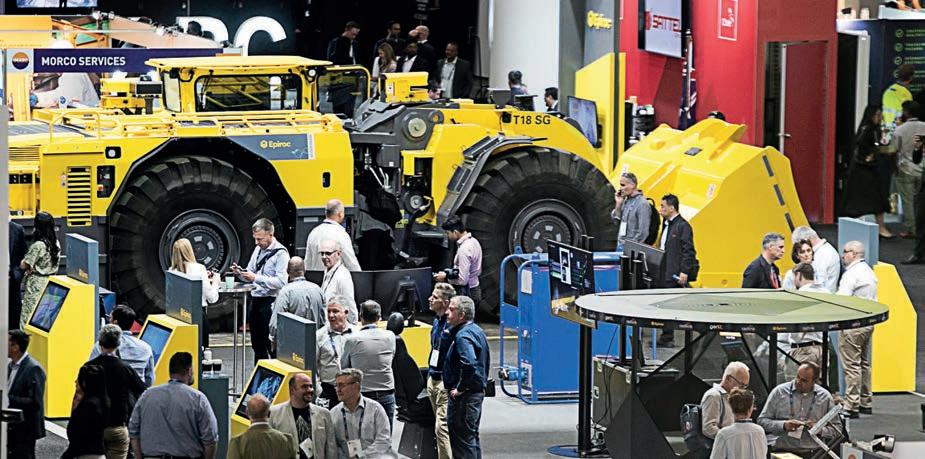


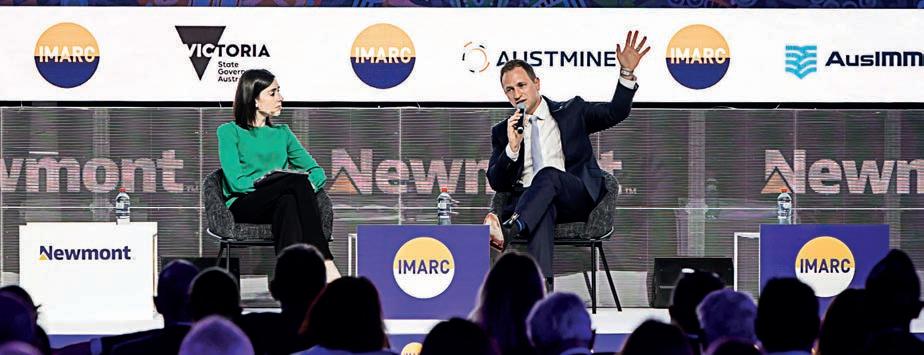


Innovators, start-ups, research teams and technology developers will each showcase a standout solution that drives cost reduction, productivity gains and sustainable outcomes. It will be a prime destination for investors, miners, venture capitalists, and industry leaders to discover breakthrough innovations with strong commercial potential.
Beyond the operator-focused content, IMARC remains a high-level forum for addressing industry-wide challenges.
The 2025 program will explore strategies for building resilient supply chains, managing costs, and forming alliances to meet the minerals demand driven by the energy transition, technology, transport and urban development.
Sessions will delve into finding, funding and fast-tracking mining projects; driving productivity and decarbonisation through collaboration, technology and innovation;
mobilising the mining ecosystem for shared prosperity; and balancing operational excellence with cost efficiency.
Leading industry voices from the likes of BHP, Rio Tinto, Newmont, Vale, Pilbara Minerals, Idemitsu, South32, Huayou Cobalt and Sandstorm Gold Royalties will share insights alongside government representatives from around the globe.
And for those working on-site, the attraction is clear: free access, tailored content and exposure to the latest tools and practices that can improve safety, productivity and decision-making.
“If you’re working on-site, IMARC gives you access to ideas and tools that could genuinely improve how you do things back at work,” Asnasyous said.
“You can learn new skills, earn CPD points, meet industry colleagues, check out tech trends, and head back to site with fresh ideas the following week.”
With dedicated networking events, a program built around practical application, and the chance to meet suppliers and innovators face-to-face, IMARC offers a genuine opportunity for operators to influence the future direction of their sites.
With delegates from all corners of the globe, IMARC is one of Australia’s leading mining events for fostering strategic partnerships, enhancing industry collaboration, and advancing sustainability and investment credentials across the sector.
Whether it’s taking in a technical workshop, seeing a live equipment demonstration, or having a conversation that sparks a better way of working, IMARC 2025 is set to deliver value from day one. AM
IMARC 2025 takes place at ICC Sydney from October 21–23.




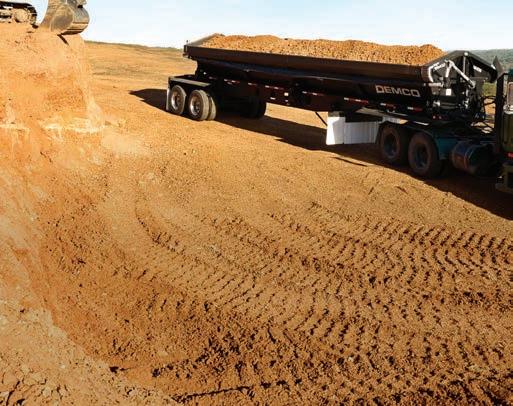



2,000
WORLDSKILLS IS PROVIDING A PLATFORM FOR AUSTRALIA’S NEXT GENERATION OF TRADESPEOPLE TO SHOWCASE THEIR SKILLS ON THE GLOBAL STAGE.
The WorldSkills Australia 2025 National Championships and Skills Show once again demonstrated the strength and breadth of vocational excellence in Australia.
Over three days in June, the Brisbane Convention and Exhibition Centre hosted more than 600 competitors across more than 60 skill categories, alongside 35,000 visitors including educators, employers, and policymakers.
Far more than a competition, the event reaffirmed its standing as a benchmark for national standards, while providing a springboard for innovation and global collaboration.
It once again provided a key platform for developing the next generation of skilled workers for industries such as construction, manufacturing, health, mining, and beyond.
excellence
The National Championships highlighted exceptional talent across a diverse range of skills and trades –from traditional fields like welding and electrical installation to emerging disciplines such as automation, cyber security, and additive manufacturing.
Each competition showcased not only technical ability but also problemsolving, creativity, and adaptability –qualities increasingly valued in a rapidly changing global economy.
Interactive zones, including Try’aSkill experiences, allowed attendees to engage directly with emerging talent, creating a powerful symbiosis between aspiring students, parents and educators.
This approach influenced perceptions: 89 per cent of attendees reported a more positive view of vocational careers, while 87.5 per cent of competitors credited their involvement with motivating them to complete their studies.
For employers, the event provided a valuable opportunity to connect with emerging talent, identify future leaders, and influence the direction of skills development.
This year’s event was notable for its international engagement, with more than 60 Asia-Pacific delegates in attendance as part of a TAFE Queensland-led knowledge exchange. Guest competitors from China and Timor-Leste further reinforced the



National Championships’ role as a platform for global learning and best practice sharing.
Meeting industry needs
As Australia faces evolving workforce demands, events such as the WorldSkills Australia National Championships and Skills Show have an important role to play, with sectors such as advanced manufacturing, energy and mining depending on highly skilled trades to sustain productivity and embrace new technologies.
Competitions in areas such as mechatronics, automation, and
construction steel work reflect the types of expertise industries need, from operating complex machinery to implementing data-driven systems.
By benchmarking these skills against international standards, the National Championships ensured Australia is fostering talent to compete on the global stage.
With the 2025 event now concluded, attention now turns to selecting the Skillaroos Training Squad – a group of top-performing competitors who will undergo further training and development ahead of the 2026 WorldSkills Competition in Shanghai.
Training will include workshops, bootcamps, and one-on-one coaching with national experts, ensuring these young Australians represent the very best of the country’s skills sector. Sessions will not only develop technical capability, but foster leadership skills and the resilience needed to be a top performer.
For more than 40 years, WorldSkills Australia has been at the forefront of vocational excellence, engaging thousands of apprentices, trainees, and students while connecting them with industry leaders. Its programs are about more than competition – they are an investment in Australia’s future workforce.
By championing innovation, diversity, and collaboration, the 2025 National Championships and Skills Show reaffirmed its role as a driving force in shaping the skilled professionals who will power Australia’s industries for decades to come.
The next stop is the 48th WorldSkills Competition in Shanghai, where selected Skillaroos will compete against the best in the world.
WorldSkills Australia is inviting organisations and training providers to partner on the road to Shanghai, supporting the Skillaroos through sponsorship, mentoring, and technical expertise. AM


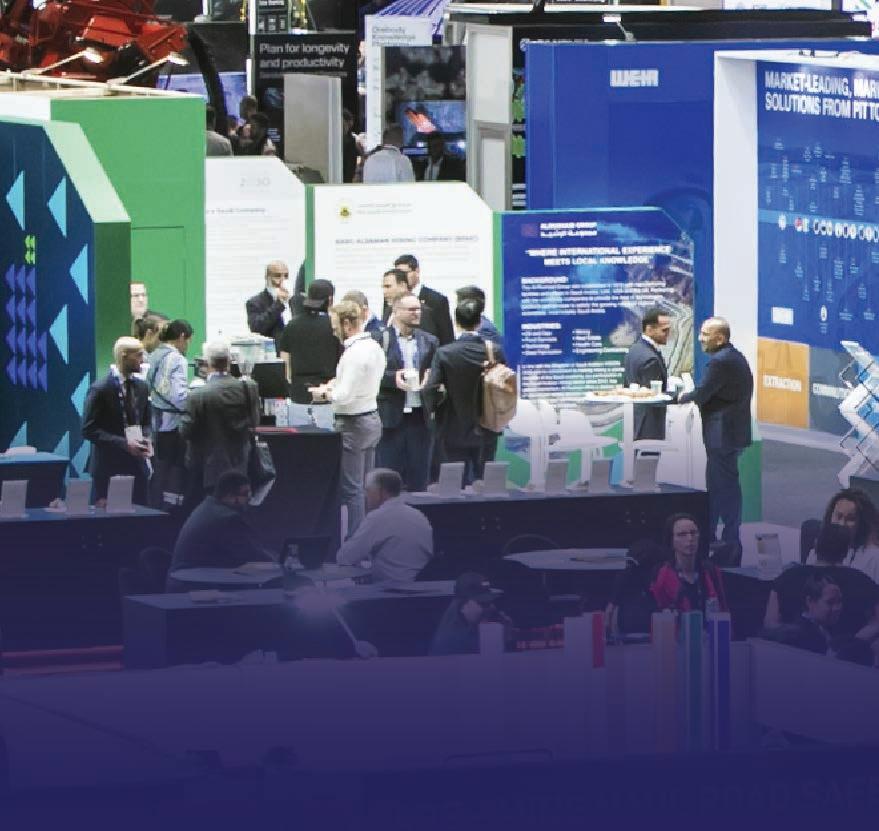










The International Mining and Resources Conference (IMARC) is where the most influential people in the mining industry come together, delivering ideas, inspiration and serving as a meeting ground for the industry. From ground-breaking technology and world-class content to a vivid showcase of all the elements that make the mining industry great, IMARC is an opportunity to learn from more than 600 mining leaders and resource experts with a program covering the entire mining value chain.
Use code R68KNZ for 10% off Delegate Passes or 752DXP for a FREE Expo

EVENT SUBMISSIONS CAN BE EMAILED TO TOM.PARKER@PRIMECREATIVE.COM.AU

Asia-Pacific’s International Mining Exhibition
Adelaide | September 22–24
In 2025, Australia’s longest-running mining exhibition will make its South Australian debut in Adelaide to bring together the largest community of mining suppliers and professionals all under one roof to drive innovation and collaboration.
As the key event on the mining calendar, Asia-Pacific’s International Mining Exhibition (AIMEX) is an internationally renowned platform showcasing the latest mining technology, equipment and services, and offering a unique opportunity for leading suppliers and buyers to conduct face-to-face business, learn about the latest trends and network in an interactive forum.
The Prospect Awards will also be held as part of AIMEX, set for September 24 at the Adelaide Oval.
• aimex.com.au
WA Mining Conference and Exhibition
Perth | October 8–9
Taking place at the Perth Convention and Exhibition Centre, the WA Mining Conference and Exhibition 2025 brings together industry leaders, suppliers, and innovators to explore the future of Western Australia’s mining sector. With a strong focus on operational excellence, emerging technologies,
and workforce development, the event fosters collaboration across all levels of the industry.
This year’s program will also highlight mental health through its partnership with Lifeline WA.
The conference will bring together major players in the mining technological space, including Komatsu, Denver Technology, Martin Engineering, Pinnacle Hire, VIPER Metrics and others.
• waminingexpo.com.au
IMARC
Sydney | October 21–23
The International Mining and Resources Conference (IMARC) has long been making waves in the national mining sector, bringing together leaders from across the country to inspire industry revolutions and discover groundbreaking technology.
The highly anticipated event covers the entire mining value chain, with technical speakers, panel discussions and presentations.
Attendees will gain insights on strategies for developing environmental, social and governance resilience, fast-tracking the industry’s energy transition, project development and the digital transformation of mines. The threeday Sydney event will feature nine extensive concurrent conferences.
• imarcglobal.com
Global Resources Innovation Expo
Perth | May 5–7, 2026
The Global Resources Innovation Expo (GRX) is an industry-led conference and exhibition hosted by Austmine in partnership with AusIMM. It represents an exciting evolution from past Austmine conferences, with GRX26 building off the successful running of GRX25 in May, which connected attendees with global leaders, allowing them to discover cutting-edge solutions and engage in insightful discussions.
GRX26 is set to feature some of the most influential voices in technology, emerging industries, mining and resources.
• grx.au
PNG Industrial and Mining Resources Exhibition and Conference
Port Moresby | July 1–2, 2026
The PNG Industrial & Mining Resources Exhibition (PNG Expo) delivered a record-breaking edition in 2025, attracting more attendees than ever before. The event saw more than 80 local, national and international manufacturers and suppliers showcase the latest innovations for the industrial, mining, and oil and gas sectors. The exhibition will return in 2026, providing the perfect meeting place to connect and network with thousands of industry
decision-makers across a broad industry reach, including senior management, procurement, government personnel, engineers, contractors and trade technicians. With extensive support from key stakeholders in government, associations and industry, PNG Expo is a premier meeting place for industry trade and a forum for establishing high-quality customer contacts and conducting business.
• pngexpo.com
Queensland Mining & Engineering Exhibition
Mackay | July 21-23, 2026
With a legacy spanning more than 30 years, the Queensland Mining & Engineering Exhibition (QME) is Australia’s largest regional mining event. Following a record-breaking 2024 edition, QME returns to Mackay in 2026, promising more exhibitors, expanded content, and new networking opportunities.
Featuring live demonstrations, a free leadership series, and hundreds of suppliers, QME is a vital hub for innovation, industry connection and regional growth.
QME 2026 is shaping up to be the most impactful edition yet, with many suppliers already signed up to participate after a strong rebooking phase.
• queenslandminingexpo.com.au













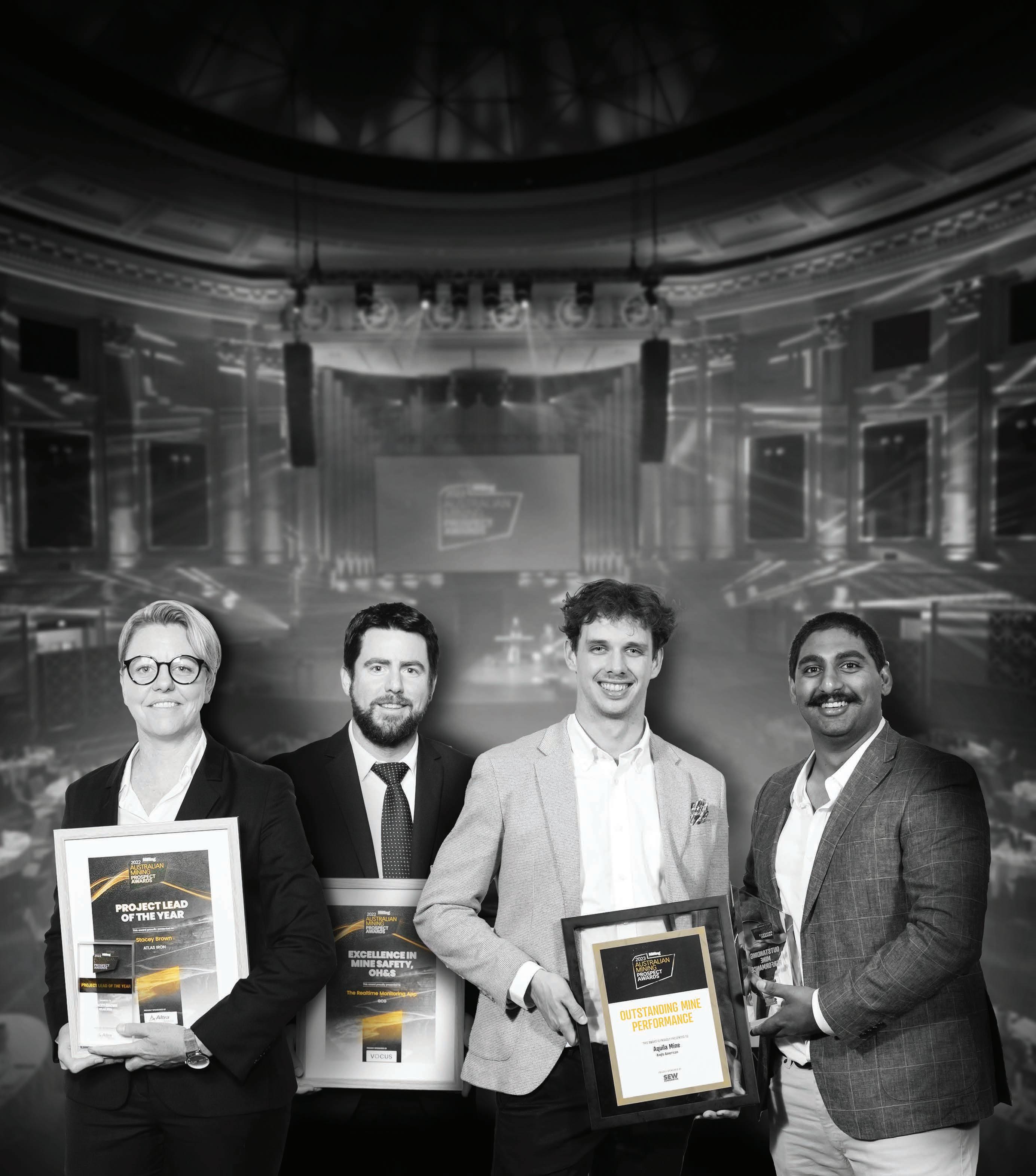

The most prestigious awards for the Australian mining and mineral processing industry












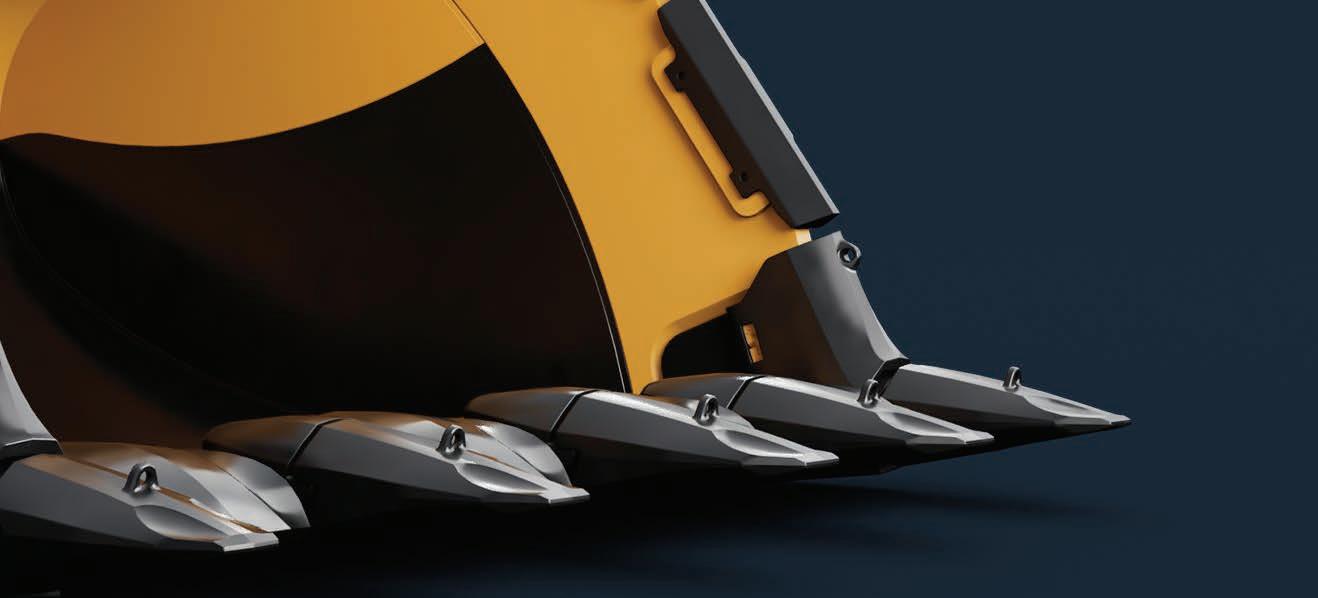


The Schlam Barracuda range of mining buckets is regarded for extending the payload performance of excavators and loaders operating in hard rock mining environments.
Renowned by leading miners in Australia, our comprehensive product range includes models compatible with major OEM mining excavators and loaders.
Each Barracuda bucket is individually engineered by a team with global OEM expertise, to overcome site specific challenges and to ensure the optimal performance of your mining equipment fleet.


With Barracuda’s dedicated after-sales support, our team is with you every step of the way to enhance your load and haul productivity and to help extend the life of your assets.
schlam.com/barracuda









